July 10-14, 2022
If you or your children are of a certain age, you know all the words to Raffi’s song, Baby Beluga.
Baby beluga in the deep blue sea
Swim so wild and you swim so free
Heaven above and the sea below
And a little white whale on the go
You’re just a little white whale on the go
Well, my friend Ruthi and I got to see baby beluga along with a few thousand of his/her family and friends.
We traveled to Churchill, Canada with Natural Habitat (nathab.com), a company devoted to travel and conservation. If you follow my blog, you know that I’ve traveled with them quite a bit. And if you follow my blog closely, you will recall that I’ve been to Churchill once before. In fact, there are three reasons one visits Churchill, a town of about 900 people in the arctic along Hudson Bay. The first is in January-February when you are very likely to see the aurora borealis (that’s what my other Churchill post is about). In October-November, you go to see polar bears as they migrate over the ice on frozen Hudson Bay. And in the summer, you go to see beluga whales who swarm into Hudson Bay – approximately 3500 of them. And so that’s just what we did in July 2022.
As a side note, we did lots of fun things in Churchill, but this post is primarily about belugas and activities related to them. See my Churchill post for all the other things to do in Churchill and to learn more about the town and its people. I will tell you that Henry Hudson discovered Hudson Bay, on which Churchill sits, by accident in 1610. In 1612-13 Thomas Button traveled along the west coast of Hudson Bay while looking for the Northwest Passage to India as this would open up a new trade route into North America. So, quite an important location back then.
Belugas
Belugas (Delphinapterus leucas which means ‘white with no fin’), also called white whale, belukha whale or sea canary (because of the sounds they make), unlike other whales, are white as snow. At least the adults are. The younger whales are gray – darker gray when they are born, and then lighter and lighter gray as they mature. Moms are pregnant for 15 months and give birth only about once every three years. Babies can weigh 120 pounds at birth. Adults on the other hand, can weigh between 1000-3300 pounds and males can be up to 30 feet long. I can vouch for that – they are big!
And yet, they are the smallest of all the whales. Their other distinctive feature, besides their color and the fact that they have teeth, is the shape of their heads. They have a very prominent forehead, called a melon, really on top of their skull which is used for echolocation. The melon is filled with fluid and sound waves are focused through the melon which acts as a sound lens. They have no dorsal fin which makes them more maneuverable and they can use their dorsal ridge on their backs to break ice. The other unusual feature of belugas is that they can turn their head from side to side just like we can and they can move their lips and often will blow bubbles. It is thought that the myth of mermaids comes from the beluga whale.
When we were in Winnipeg at zoo, we saw this exhibit on belugas.
When travelling in pods, belugas frequently surface simultaneously to breathe. Belugas also practice a breathing technique known as “snorkeling” when only their blowhole breaks the surface to breathe. Only 4–7% of their time is spent at the surface.
Belugas are extremely sociable, traveling, hunting, migrating and hanging out in pods. They look like they are always smiling (see my photos below). The melon I mentioned above, is flexible and can change shapes which makes it look like the whale has different facial expressions.
And what do they eat? They feed on a variety of fish species, such as salmon and herring, as well as shrimp, crabs and mollusks.
Communication
Belugas communicate with each other. Over 1200 vocalizations, that is, unique sounds that include chirps, clicks, whistles and squeals, have been recorded along with 28 “words.” Each mother has her own call for her baby and stimulates her baby’s brain with “beluga talk” similar to how adults talk to babies. She will sing, whistle, and use a special call to stay in touch. The mother teaches her baby hundreds of sounds. At age 3, the baby then decides whether to stay with mom or go out on its own.
We got to listen to them when our guides put microphones into the water. I wish we could understand what they were saying.
Take me home, country roads
Ok, so not country roads. But each year, the belugas come home. returning to the place of their birth, in this case with all their family and friends. They basically have a reunion. For about 50,000-60,000 of them, as the ice recedes, this reunion takes place in Hudson Bay. This is one of the largest concentrations of beluga whales in the world.
They come for the warm water, to rub their bodies along the gravel bottom, like a loofah, scratching and sloughing off their old skin. This warm water is the highlight of their year. Imagine living in icy weather and then finding yourself in Hawaii. Same thing.
Oh oh – Polar bears
But their joy can be short lived. Even in the summer, there are polar bears in Hudson Bay. The mama beluga whale uses sonar to locate the bear hazard since the bear is invisible to them when he is out of the water. The belugas do lift their heads up to breathe, and that’s when they have to watch out for bears. The mama beluga recognizes the splash of the bear and moves her and her family out of the way fast while sounding an alarm with clicking and jaw claps. Polar bears only swim about 6 miles an hour while the beluga swims almost 20 miles an hour. So most get away.
We got to see two polar bears, as some hang around even in the summer. More on them below.
Heading to Churchill
We flew from home to Winnipeg where, at the Fort Garry Hotel, we met up with our group of seven – Suzanne and Matt, Brittany, Laurie and her daughter Becky, and Ruthi and me. Our fearless leader was Eleanor Edye, who Ruthi and I had watched many times on the Nat Hab Daily Dose ( a daily webinar on all different topics often related to conservation, wildlife, photography and Nat Hab trips). So we were very excited to be able to meet Eleanor in person and travel with her. Eleanor is a biogeographer who was born and bred in Winnipeg. Eleanor’s love, besides her family, is the tundra and the organisms you find there. She was an amazing guide who taught us so much about so much. And she was great fun to travel with.
- Fort Garry
- Eleanor
- The group
Private flight into Churchill
Bright and early the next morning, we were driven to a private airport, right onto the tarmac for our charter flight to Churchill. How lovely to not have to deal with going through security and fighting crowds. We walked onto a Natural Habitat carpet leading up to the stairs of the ATR 42-Calm Air prop plane for our 2 hour and 15 minute flight. It was loud! Next time – ear plugs!
As we got closer, flying over Hudson Bay, we could see ice patches all over the water. Everything was incredibly flat but rocky. The sky looked endless. And oh so beautiful. We got even more excited about our upcoming week.
Churchill Airport
The runway at Churchill used to be 15,000 feet as there was once a US base here watching out for a Russian attack. Most of the military buildings were torn down in the 1970s, but there are still some remnants. We coasted to a stop in front of the blue and red building, grabbed our carry-on luggage and made our way into the terminal – which is really just one large room.
There were several displays of polar bears and of local art. There were t-shirts for sale as well as local jewelry. But we were anxious to grab our bags and be on our way.
Onward to town
We climbed onto our mini-bus with our driver for the week, Lawrence, and headed into town, passing some of the murals (see my post on the Murals of Churchill), and other Churchill landmarks, which I remembered from my last trip year. The difference was that last time everything was covered in snow.
- Bird nest
- Garbage can to keep bears out
- Painting of Polar Rover on the bear
This time we could see the water covered with small ice floes. And at the same time, the coastline was covered in flowers of all colors. It was such a contrast.
Inukshuk
Inuksuk is an Inuit word meaning “that which acts in the capacity of a human.” It is built of rocks and resembles a human figure. And what it is really for is to act as a landmark to help people find their way. Sort of like a traffic or street sign. In the past, the inukshuk were used for navigation, as a point of reference and as a marker for travelers’ routes.
There are at least 4 inukshuks in Churchill. One is right on the coastline, at the beach in Churchill. We passed it on our way into town, and we stopped there a few times during our week here. Two were on the street in town and one was at the museum.
The Seaport Hotel
We settled into our hotel, The Seaport Hotel (http://www.seaporthotel.ca/). Although Nat Hab uses several hotels in town, I happened to stay at the Seaport last time too. So I felt right at home.
The Seaport, like all hotels in Churchill, is right smack in the center of town. It is a small, cozy hotel. Nothing fancy (nothing in Churchill is fancy), but clean and comfortable. The restaurant has a nice varied but local menu, and depending on the time of year you visit, there may be more or less of any items. The rooms were comfortable, had plenty of amenities (outlets to charge batteries and phones, shampoo, soap, good towels etc etc).
Our first sighting
We were scheduled for a land tour and barbeque that afternoon, and we weren’t scheduled to go out onto the water until the next day, but Eleanor knew we were anxious to set our eyes on the belugas. So we walked through the town and then out to the beach where we could spot them. They were quite far away, but we could see their white bodies coming out of the water. We also saw a seal swimming by. And we were so excited we didn’t want to leave. But eventually Eleanor dragged us away with promises of many more sightings.
We also stood on the shore admiring the ice floes. Remember, this was summer and yet there was lots of ice.
More Belugas – Finally
On the afternoon of our second day, we finally got to climb into zodiaks to look for beluga whales. We were touring with the Sea North Tours (https://www.seanorthtours.com/) whose motto is “We believe that beluga whales deserve respect and protection and we practice what we preach.” It is the oldest tour company on the water in Churchill.
Emma was our tour guide/zodiac driver. She started by handing out life jackets, showing us how to wear them and then off we went to climb into the zodiac.
- Our zodiac guide, Emma
- Sonia and Ruthi
- Matt and Suzanne
- Laurie and Becky
- Brittany
- Ruthi trying to stay warm
We starting seeing belugas immediately. Grey babies and adolescents. White adults. They were jumping everywhere. I didn’t know where to look first. I had my two OM System M1 Mark III camera bodies, one with a OM 100-400mm lens and one with an 24-100 mm lens. I was ready to shoot. It was spectacular. Finally, finally we were on the water surrounded by beluga whales. And birds. And ice floes.
Here are some videos of the beluga whales frolicking. I put in lots of them, just so you can get a feel for how fabulous it was to be out on the water watching them. (NOTE: you may want to turn down your speakers as the noise from the wind is quite loud.)
Here are some videos of the belugas very close to our zodiac.
On this one you may also want to turn down your speakers – loud wind.
We also watched the belugas swimming underwater, their sleek white bodies glidding smoothly through the water.
This whale followed our zodiac and gave us a private show.
We were leaning over the side of the zodiac following this whale. Such a treat to see their faces.
And where ever there are beluga whales, there are birds… On this video, turn up your speaker and listen to the birds. This video gives you the idea of how patient you have to be waiting for the whales.
Polar Bears
As we were zipping along, Emma suddenly stopped the zodiac and pointed to the rocks on the shores. There was a polar bear. He was hard to spot as he blended in with the rocks. He was sleeping, and then would lift his head, look around, and go back to sleep. My first polar bear!
As I mentioned in my introduction, Churchill is probably most famous for its polar bear migration. During the season, bears will wander down the streets of Churchill. There are signs everywhere warning people to be careful. And murals and statues. And every night at 10:00pm a siren goes off to remind people to be indoors.
Sunset
As we headed back to shore, the sun began to set. The sky turned colors, the sun reflected on the water, the belugas swam across the rays. It was beautiful.
Churchill – and belugas – from the sky
We got to take a helicopter ride over Churchill and Hudson Bay (Hudsonbayhell.com). There were two helicopters and we were separated into groups. We were in the second group, so we got to watch them take off, and then walked around town a bit, doing a bit of souvenir shopping and seeing some of the (few) sights in this small, quaint town. Then we watched the helicopters head back down.
Then it was our turn. Darcy, who has been with Nat Hab from its inception, flew with us. We climbed into the helicopter with our pilot Bob Hamlin, put on seatbelts and headphones, and off we went into the wild blue yonder for our one hour ride. The first group waved us off – and took pictures of us as we had taken pictures of them.
- Darcy, Ruthi and me
We could see the whole town from the sky as well as much of the Hudson Bay territory. We flew over the water and over the land, much of which looked almost like swamp without the greenery. There were pools of water, shining and reflecting the sun. There were birds flying everywhere – under us.
You’ve seen the photos. Now here are some videos to give you more of a feeling of being there. (NOTE: the helicoptor is loud – turn down your speakers.)
We flew over the one sole hill in Churchill (yes, it is very flat here), called Nightfall Hill. No one could tell me why it is called that.
We flew over the wreck of the MV Ithaca, at the western tip of Bird Cove. It is said that in 1961, the ship, carrying nickel ore from Rankin Inlet to Montreal, ran aground during a big windstorm. But of course, there is more than one story. A second tale is that in 1960, the ship was carrying supplies from Churchill to Rankin Inlet and broke its rudder, running aground. Yet a third story is a combination of the two suggesting that shortly after leaving port from Churchill, heading to Rankin Inlet, the ship, carrying electrical generators and plywood, broke its rudder in an 80-mile an hour gale and ran aground. No one knows the true story. As we were heading out flying over the wreck, the tide was low and we could see the whole ship. On our way back, as the tide was rising, it was slowly being covered with water.
(NOTE: Turn you speakers down for this video – the helicoptor is loud!)
We also flew over The Prince of Wales Fort (more on this in my Churchill post) and over Sloop Cove. Sleep Cove is covered in names carved into the rocks by the men who lived at the fort and worked with the Hudson Bay Company boats. It is called Sloop Cove because sleeps were the wooden sailing ships used during the fur trade. During high tide, there would be 10 feet of water so it was a great spot to moor the boats. We could see the iron rings which had been driven into the rock to secure the sloops.
We flew over some of the other research centers and we flew over the Churchill Rocket Research Range, the Churchill Northern Studies Centre, the Miss Piggy crashed plane and the Polar Rover launching site (more on all of these in the Churchill post).
- Rover loading site
- Miss Piggy
And finally, we saw belugas. I was hoping to see huge numbers of them. After all, there are thousands of them in the bay. But we only saw small pods of two or three whales. Nevertheless, it was quite a sight to see them swimming under the water. And of course, where there are belugas, there are birds.
And then it was time to head back over the town and land. At the end we got to see a map of our actual route.
Evening Zodiac Tour
That evening, after an early dinner, we boarded the zodiac again, this time at 615pm, 15 minutes earlier than scheduled as Emma was our leader/driver again.
We all settled in and Emma guided us out of the harbor into the estuary, and headed towards the point closer to the fort and at the mouth of the river. We crossed over the Manitoba–Nunavut border. We of course were looking for more belugas, but Emma saw another boat closer to shore.
Polar Bear
Eleanor looked over with her binoculars and said, “bear.” Sure enough, there was a polar bear standing on the shore, eating a beached beluga whale. He was not hard to miss as he was SO large. I was shocked at how big polar bears actually are. We sat quietly in the boat for over 30 minutes just watching the bear. He went for a swim. He came out and ate some more. He was going about his life, likely feeling very lucky to have found a beluga whale full of blubber to fill his stomach. This would last him all winter.
Return to the search for belugas
After a while we reminded ourselves that we were looking for belugas.
We drifted along, birds were everywhere flying about and singing their songs. Whales were jumping, either solo or mothers with their young. And since they were eating, the birds were everywhere trying to steal the fish. The smell was like the ocean but more gentle. The sun was still fairly high in the sky, although it was after 730pm, and its rays glistened in the water. It was so peaceful, with only the sound of the engine purring and the birds singing.
On the way back, we picked up speed and felt the wind whipping though my hair. I took my hat off to feel it hit my face and rush over me. One with nature.
S’mores
After that amazing and exhilarating ride and sightings, we drove over to the beach for a bonfire, smores and sunset. As we looked out over the water, we could see a fata morgana, a mirage visible in a narrow band right above the horizon. The name fata morgana comes from the Italian name of a sorceress, Morgan le Fay (or Morgan the Fairy) and it was believed that these mirages were fairy castles in the air air conjured by her magic. This mirage was really ice that looked like land.
The bonfire was so hot, we couldn’t get close to it to melt our marshmellows.
- Ruthi and Kenny (our bear partrol)
- Hot fire – we couldn’t get close
- Koral Hrominchuk
- Kenny making sure there are no bears
One of the local women, Koral Hrominchuk, came and recited her poetry for us. And we sat quietly, drinking wine or beer or soda, nibbling on snacks, listening to the poetry and watching the sun set, throwing beautiful colors into the sky…all while covered in our nets to avoid the bugs.
Bulldogs
While trees don’t grow here, what does grow here are bugs. Lots of flying bugs. Lots of flying biting bugs. We were surrounded by black flies, mosquitoes and bulldogs. Yes, bulldogs. These are not actually dogs but very, very large bugs. We donned our mosquito nets to protect our faces. The bugs are drawn to the heat of the bus and were swarming everywhere. And whenever we opened the door of the bus or the hotel, we dashed in as fast as we could before all the bugs joined us. It didn’t really work. They joined us anyway. The inside of the bus windows looked like a mosquito graveyard as we tried to protect ourselves. You can see us wearing our nets above at the campfire as well. I know this sounds bad, and there really were lots and lots of these flying insects, but we managed and it did not stop us from loving every minute of this trip.
- Ruthi
- Those black spots are bugs
Jiggers
No, not the sand flea type. The train type.
A jigger, also called a putt putt, handcar, a pump trolley, a pump car, a rail push trolley or a Kalmazoo, is a railway car that is powered by the people in it. In the “olden days,” it was used as a maintenance car or mining car. It typically had a arm (called the walking beam) that pivoted on a base with the passengers could move up and down to make the wheels turn. Because they are small, they could be moved on and off the tracks easily to get out of the way of the bigger trains.
So why do I bring this up now? These days the jiggers are used by handcar enthusiasts at vintage railroad events. Or there are clubs where they travel around the country. And that is exactly what we ran into. We stopped at the Churchill railway station just by chance, and there on the tracks were all these handcars. We chatted with some of the people – they were traveling around Canada as they do periodically. So very cool.
And a few days later we saw them heading out of town.
Kayaking amongst the belugas
On our last afternoon we got to kayak around the bay for about two hours. After being instructed on how to kayak safely, Ruthi and I climbed into a two-woman kayak, she in the back doing most of the paddling while I was in the front mostly taking pictures. The belugas are attracted to the kayaks and would bump us or follow us. They were everywhere. Again, I didn’t know where to look first. They would be so close and all of a sudden they would be far away. They are fast!
These two amazing shots were taken by someone else in our group.
One of the most exciting times was when a few belugas starting following us. It was so, so cool.
I was hoping to catch one doing a spyhop. A spyhop is when a whale sticks its head out of the water to have a look at what is going on up on the surface. Belugas, unlike other whales, stick their heads our and rotate their heads as, as I mentioned above, they don’t have fused neck vertebrae. And we did see some whales doing just that. Unfortunately, I could not catch it for a photo. But I sure have a mental picture in my head of two whales sticking their heads up. I hope to never forget that sight.
Last day celebration
Our last day happened to be Becky’s birthday and Nat Hab surprised us all with champagne and snacks before we headed to our chartered flight back to Winnipeg. They were all set up near the “bear jail” (more on that in the Churchill Polar Bear blog). And we made the most of our last moments together.
Baby Beluga….
And so our journey ended. Thank you to all my travel buddies and to Eleanor who made every moment interesting and exciting.
- Ruthi
- Brittany and Sonia
- Ruthi
- Matt and Suzanne
- Eleanor
- Brittany
- Becky
- Laura
- Eleanor
What an amazing trip to see a whale, in its natural habitat, frolicking and jumping as if doing ballet. Sometimes as a corps, sometimes as a pas de deux and sometimes as a solo performer. It was magical. It was beautiful. It was “baby beluga in the deep blue sea, swimming so wild and swimming so free.”

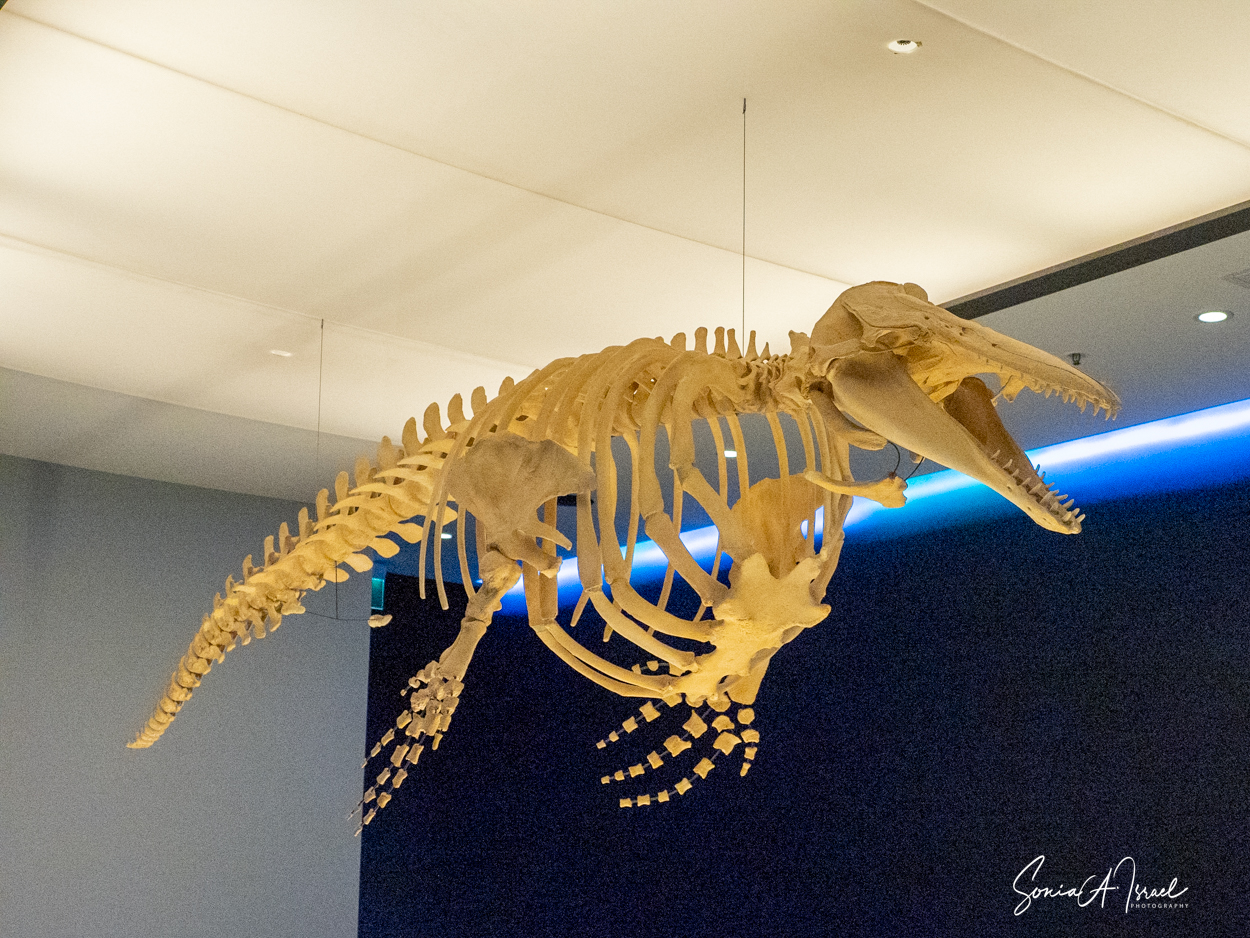

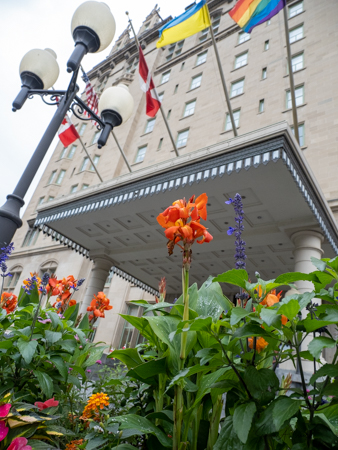

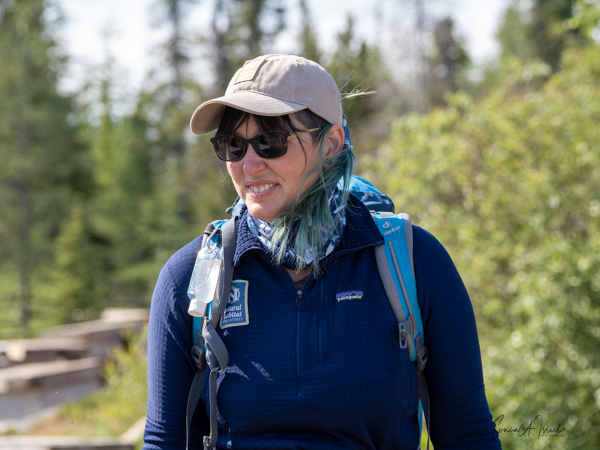
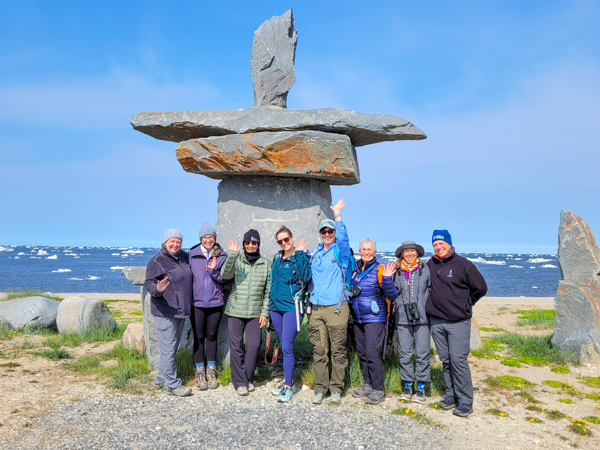
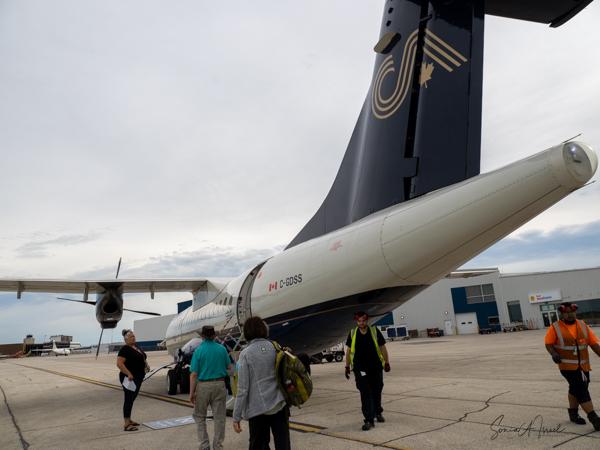
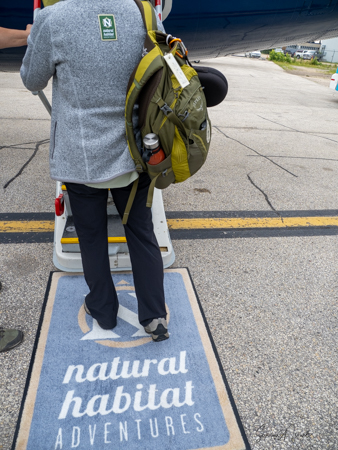
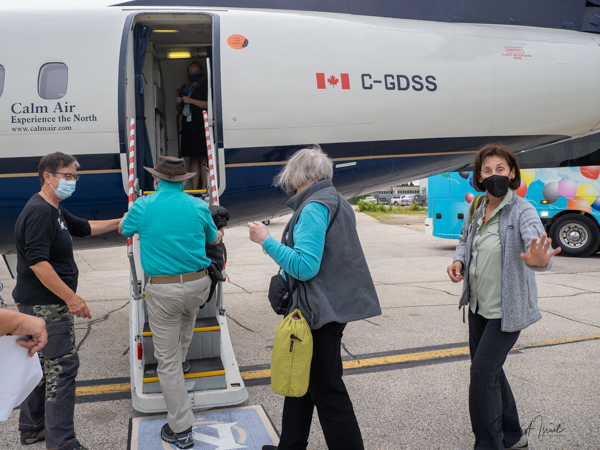
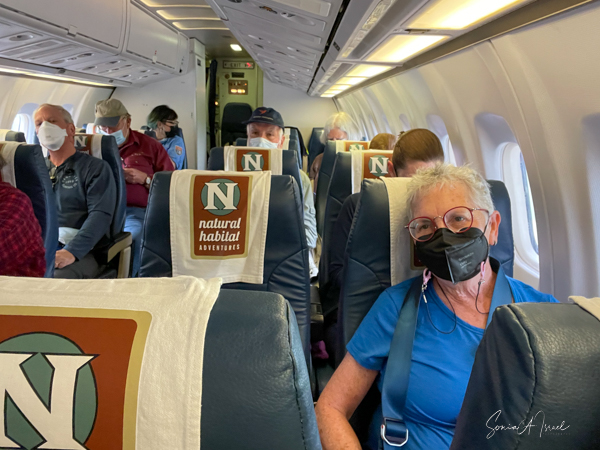
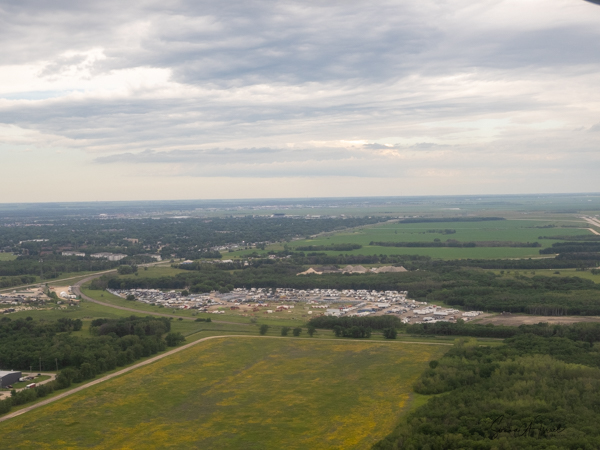


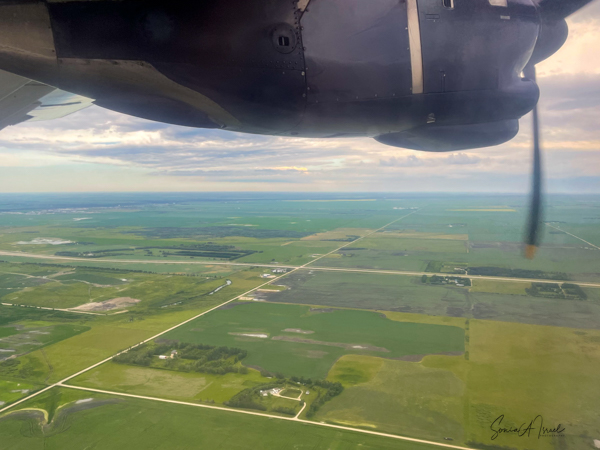
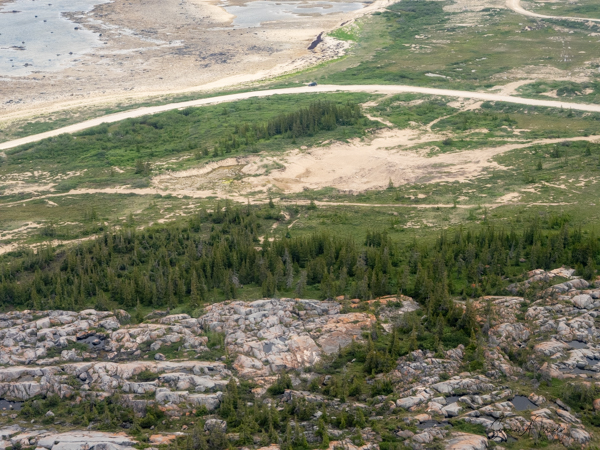


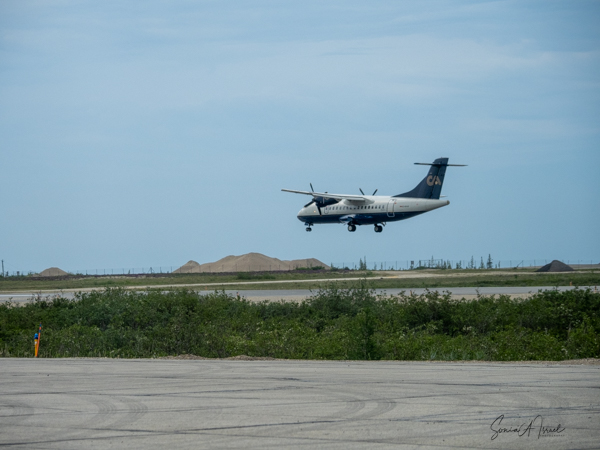
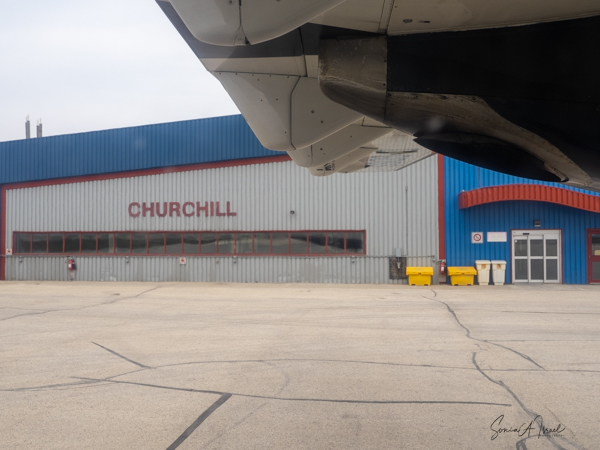

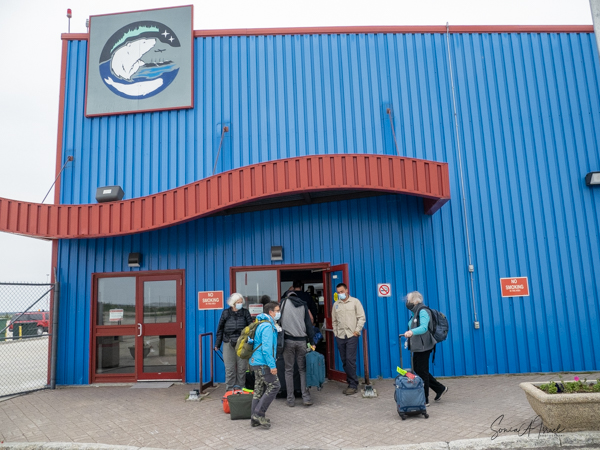

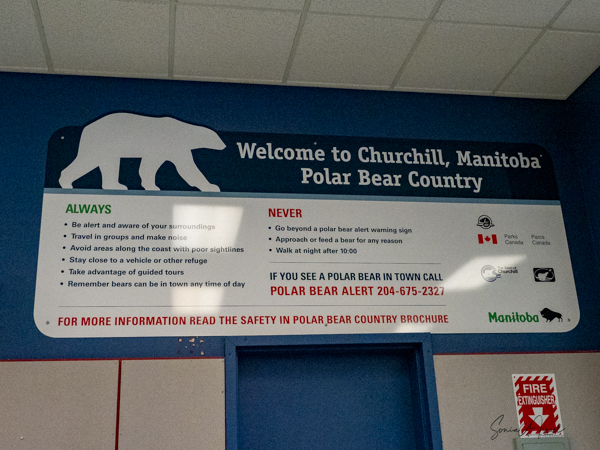
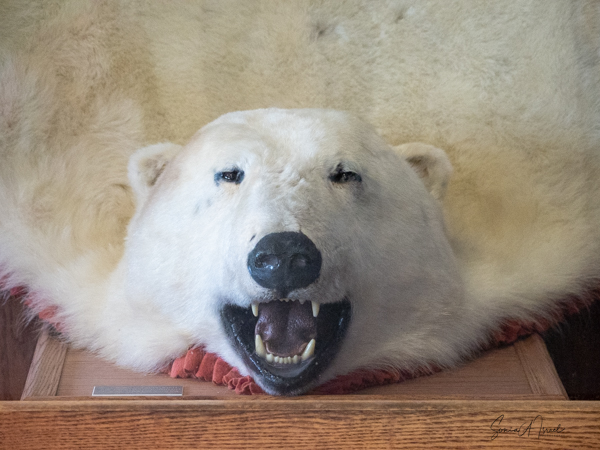
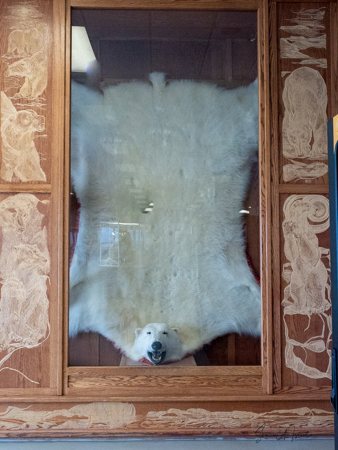
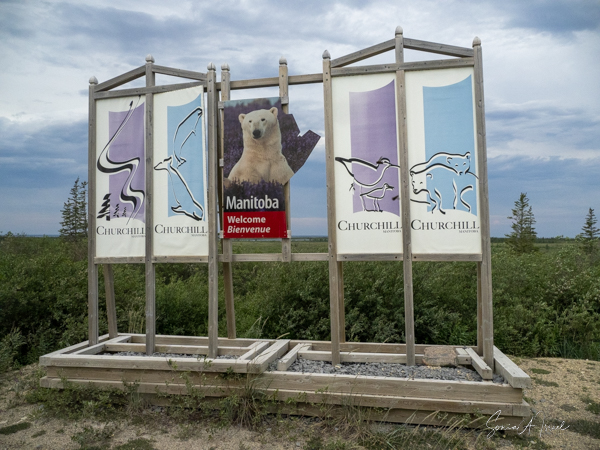
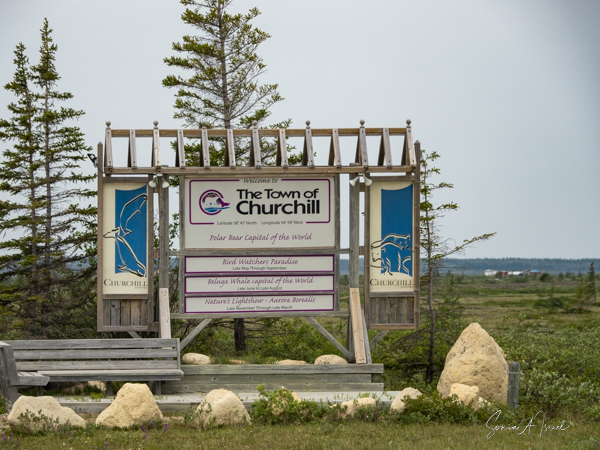
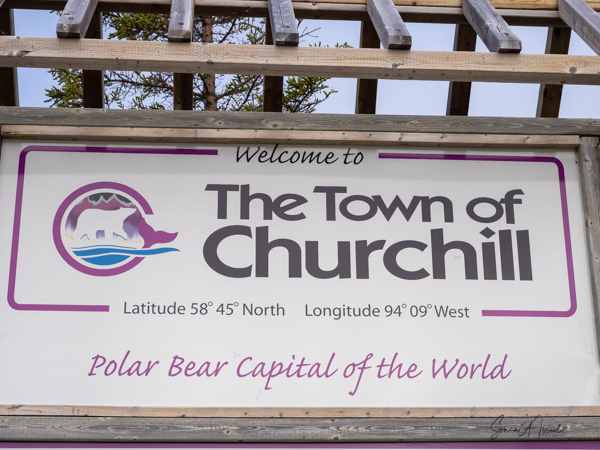
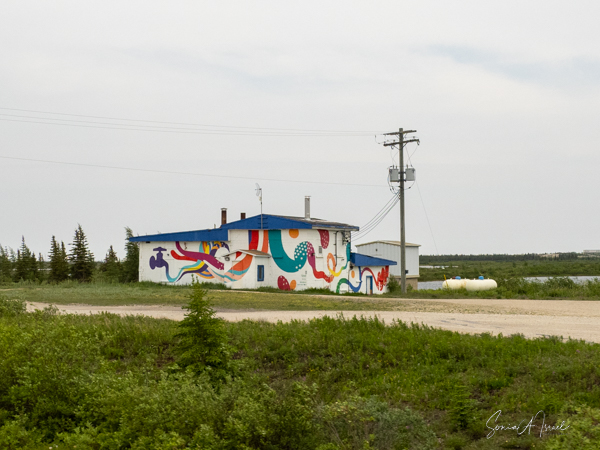
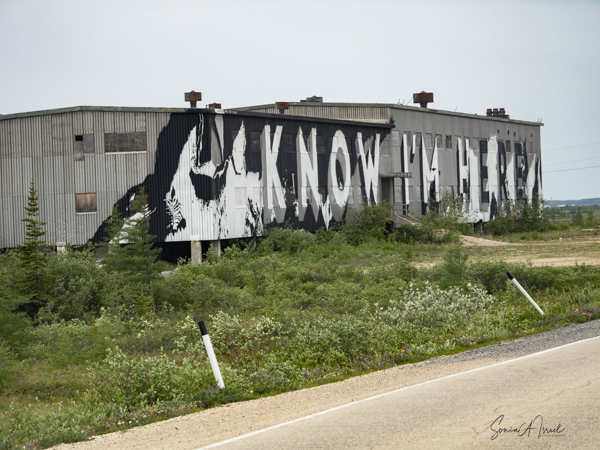
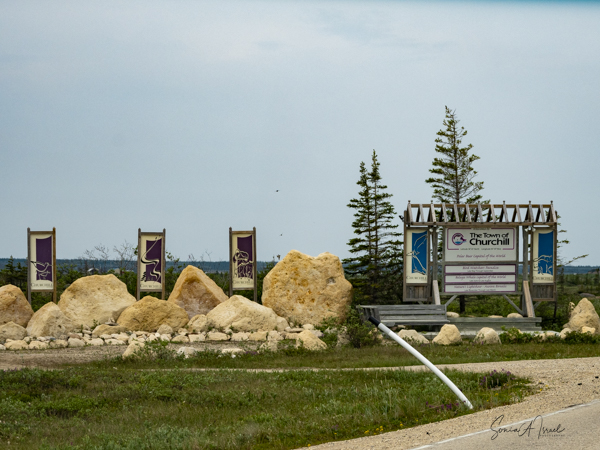
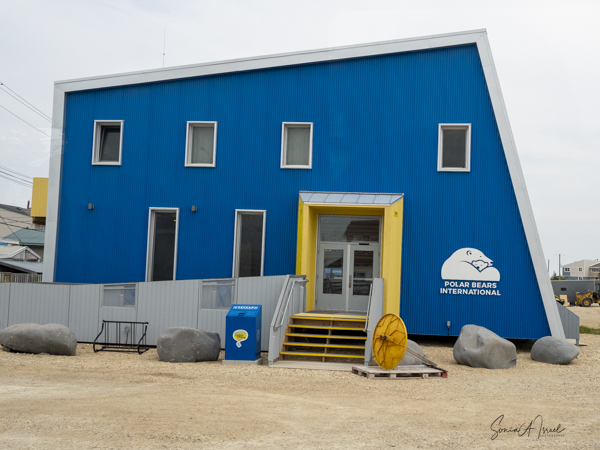
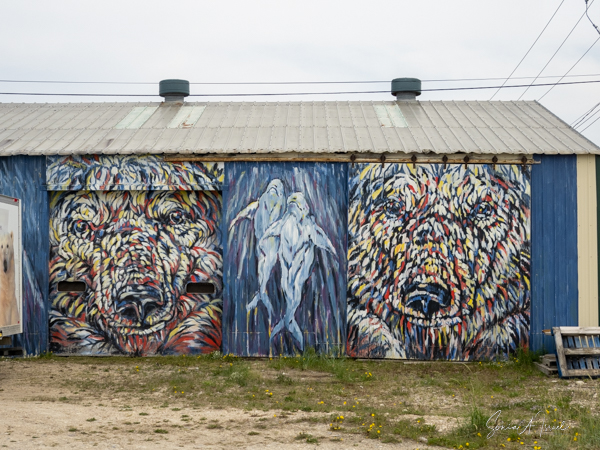
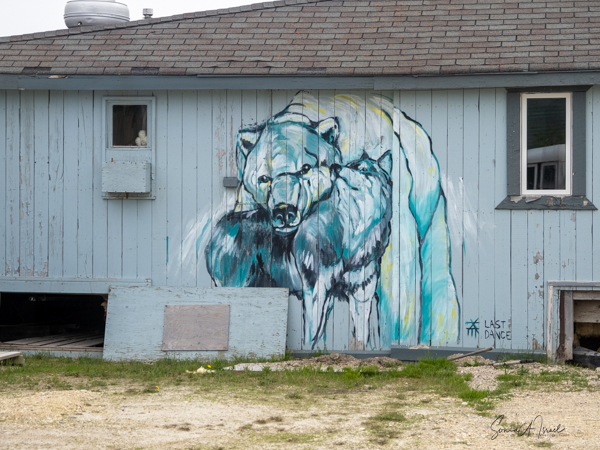
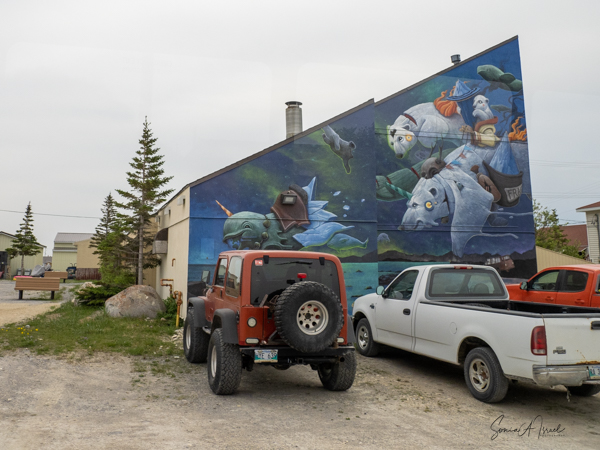
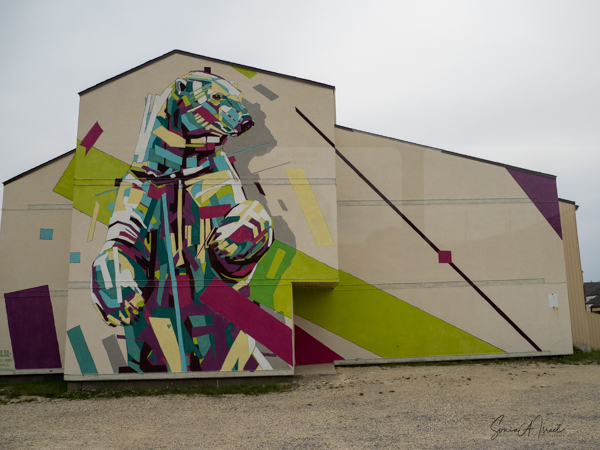
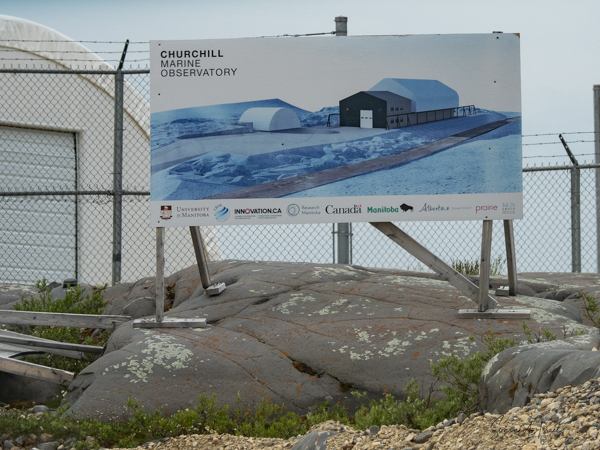
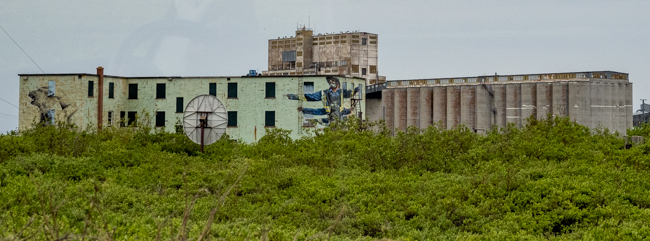

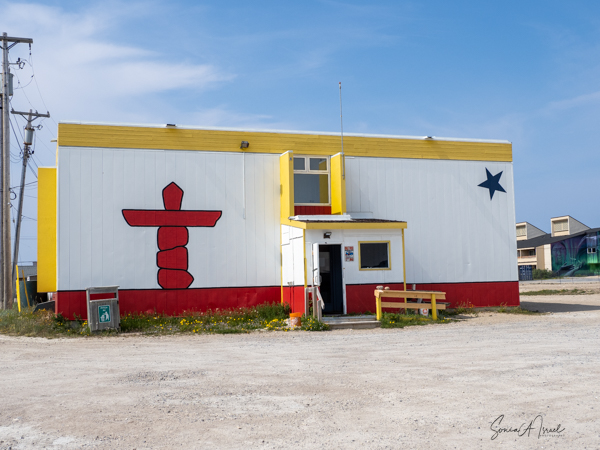
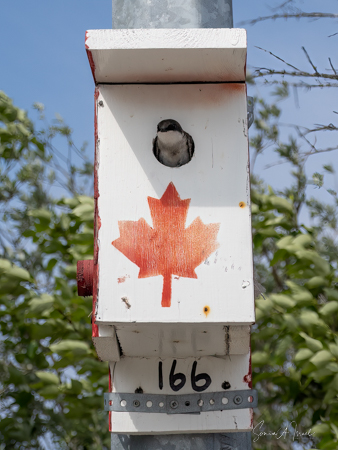
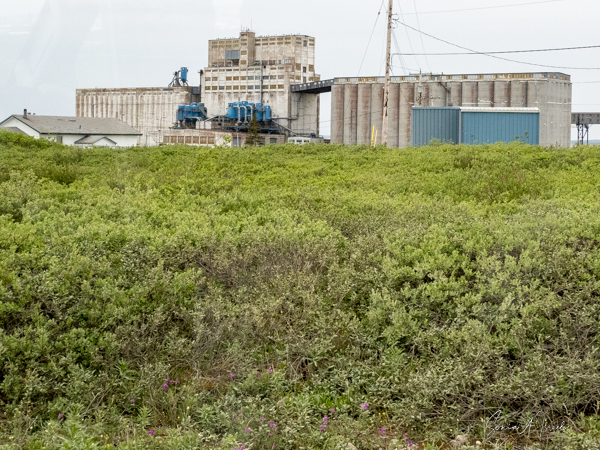
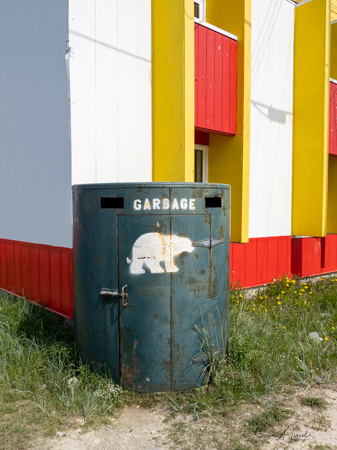
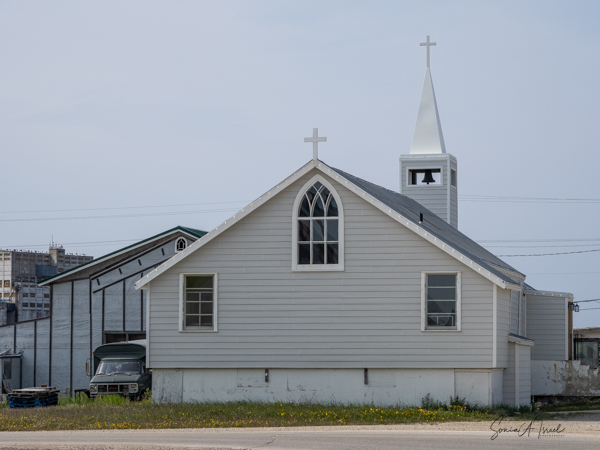

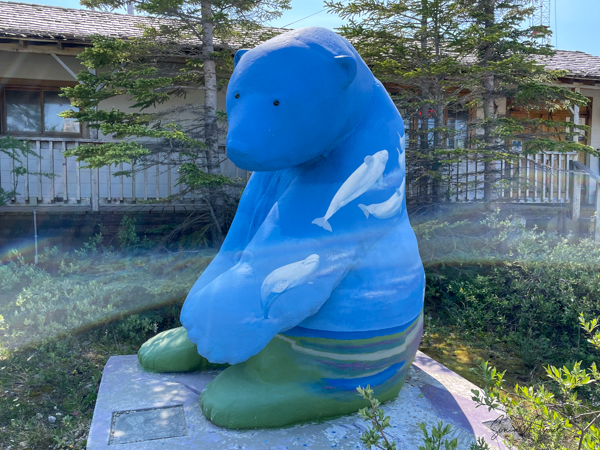
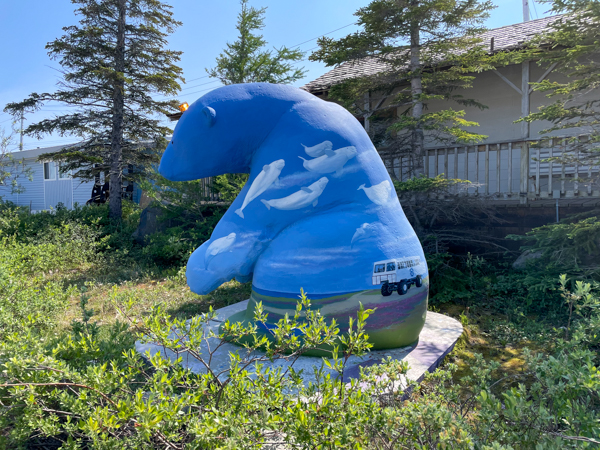
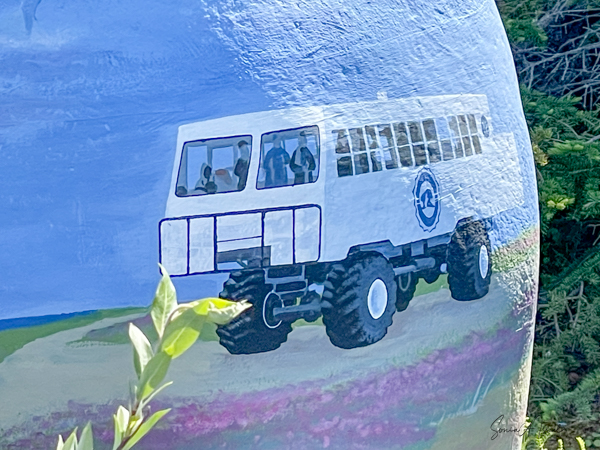
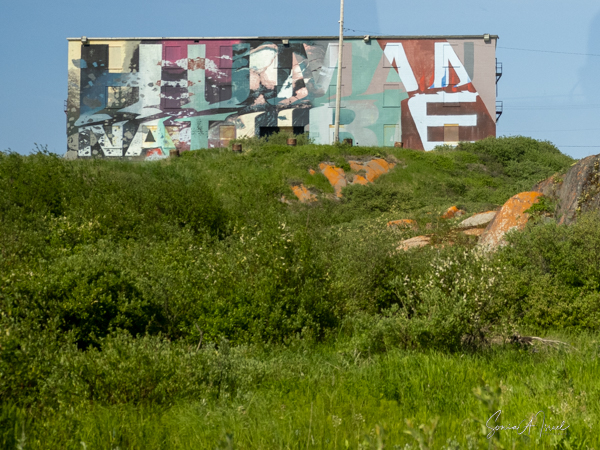
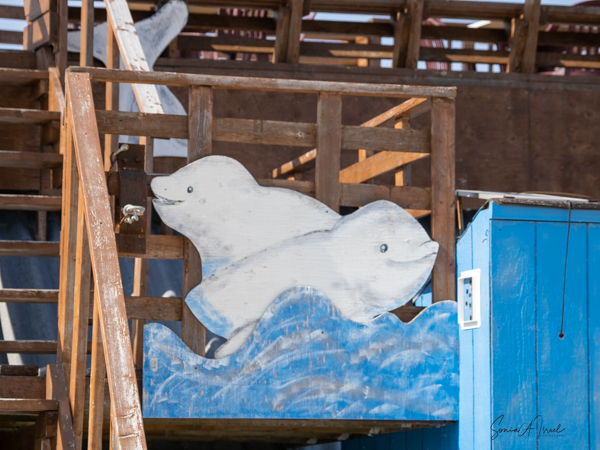
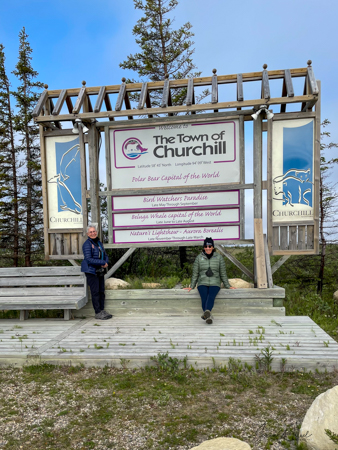
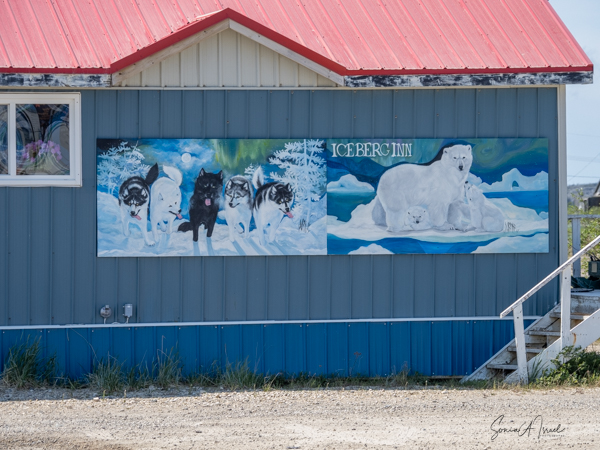
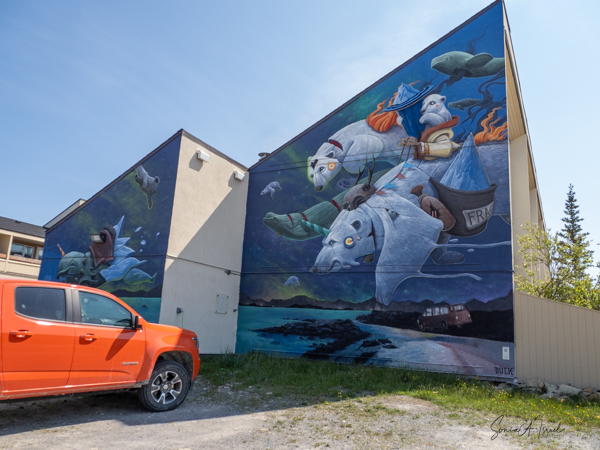

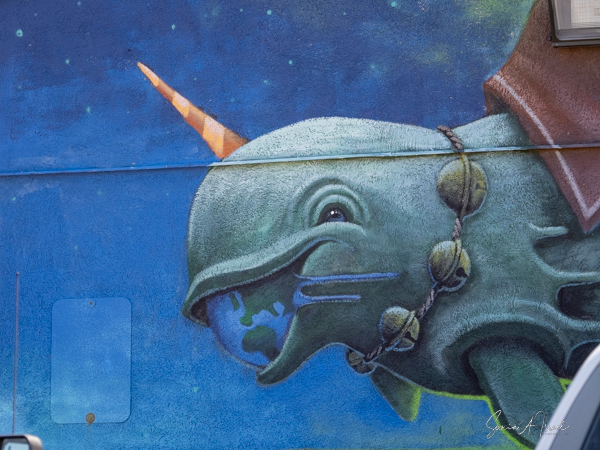
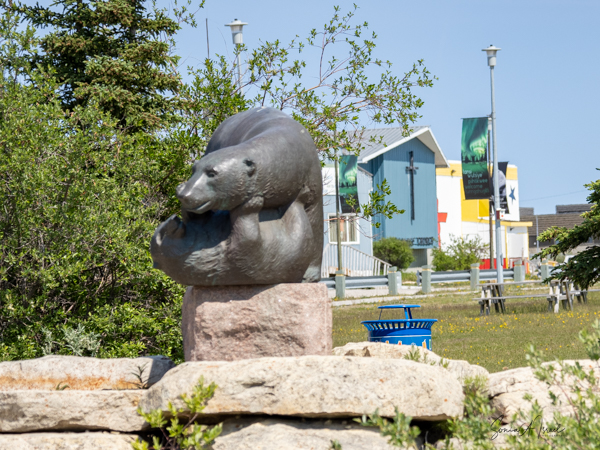
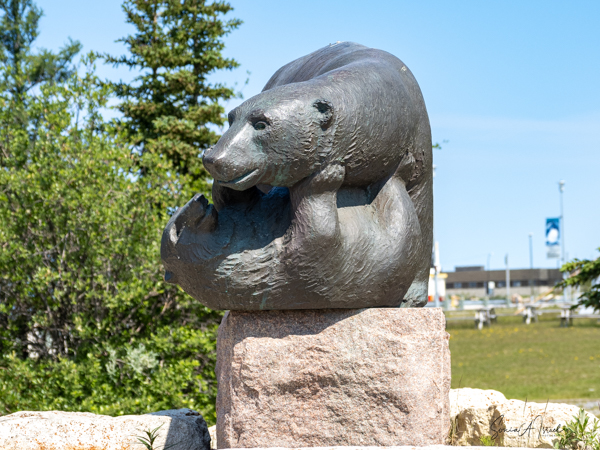
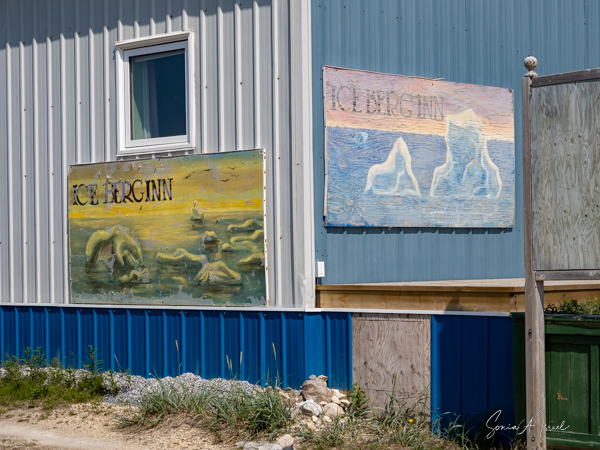
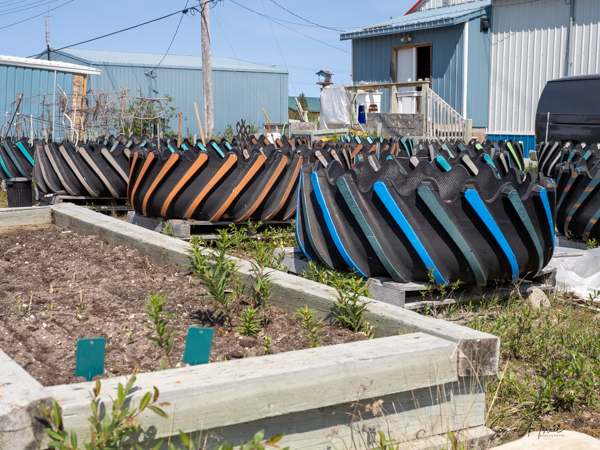
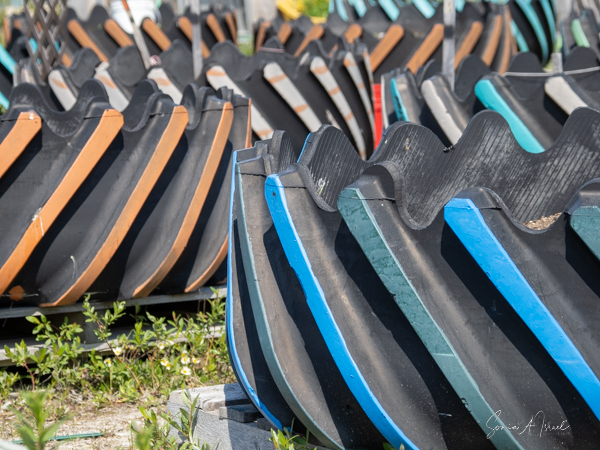
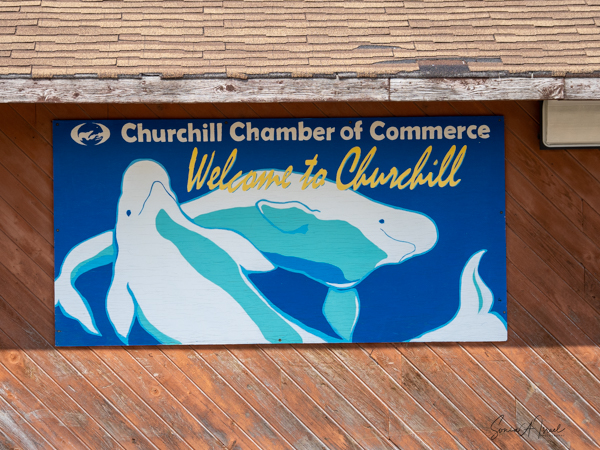
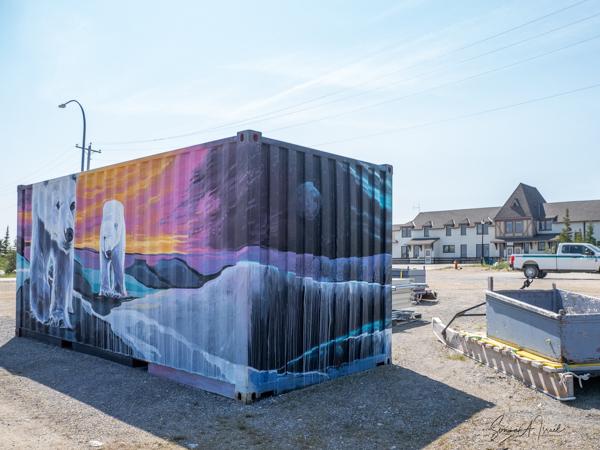
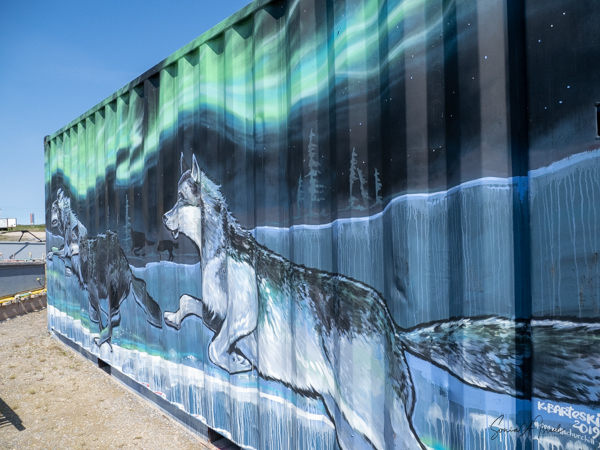
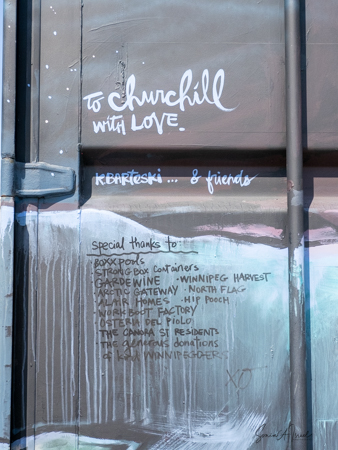
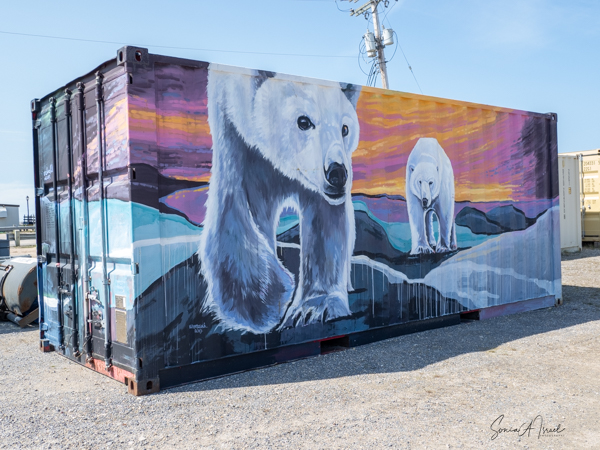
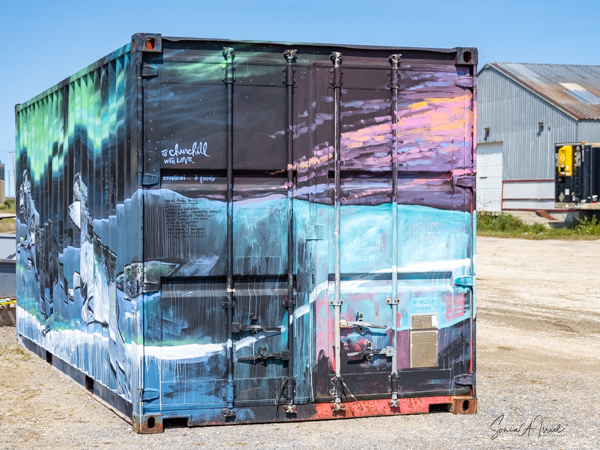


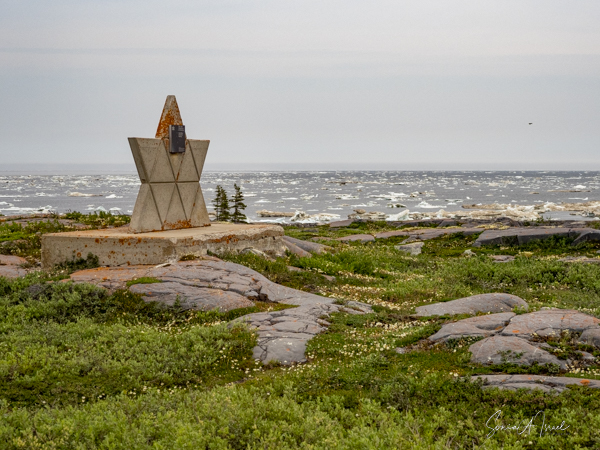
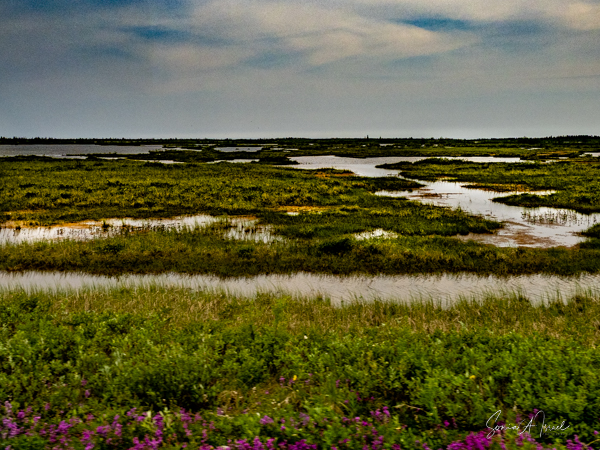
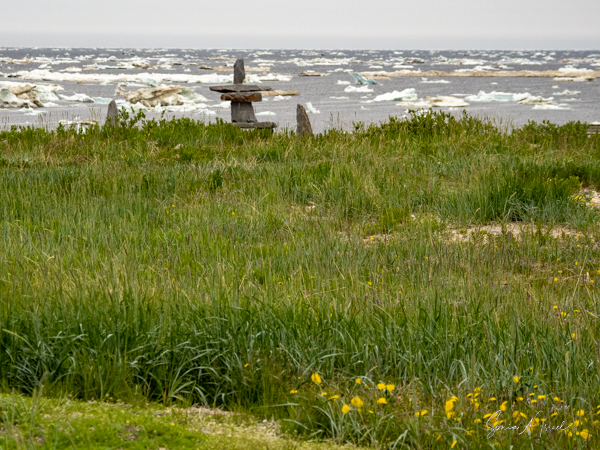
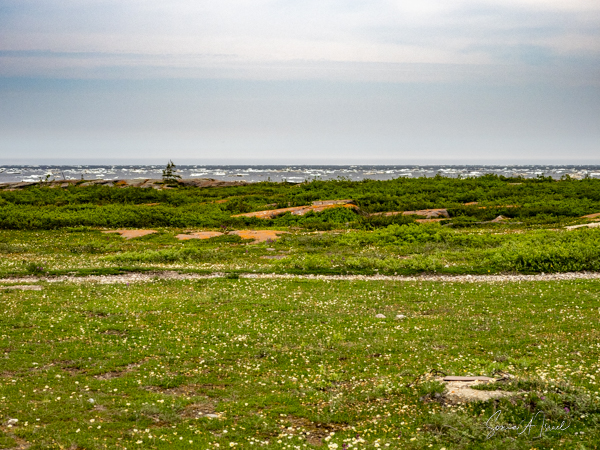
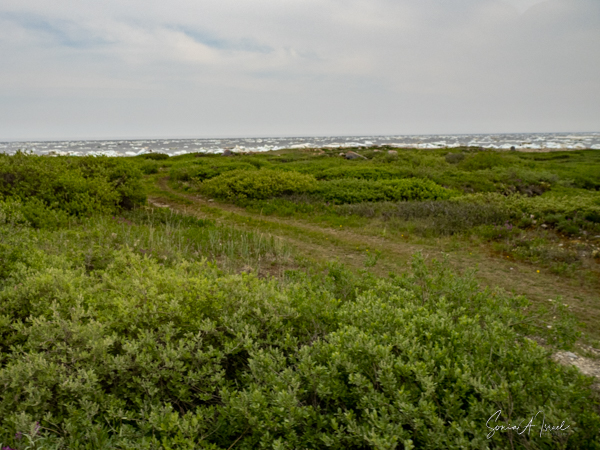
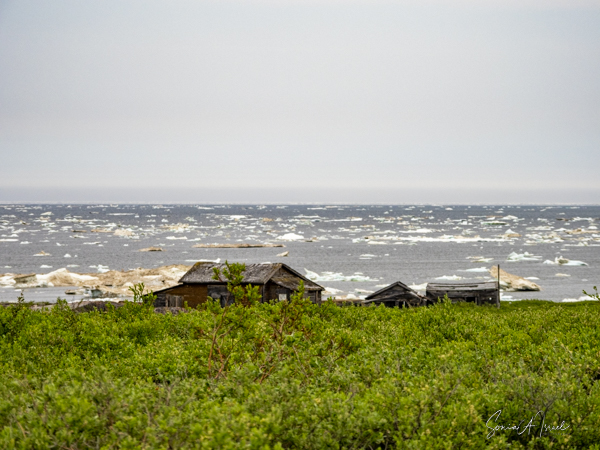
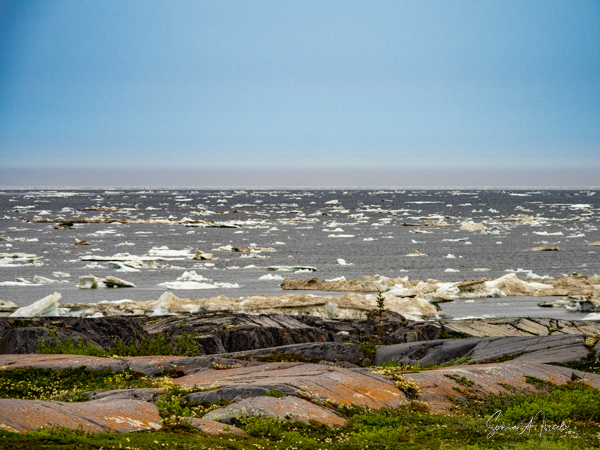
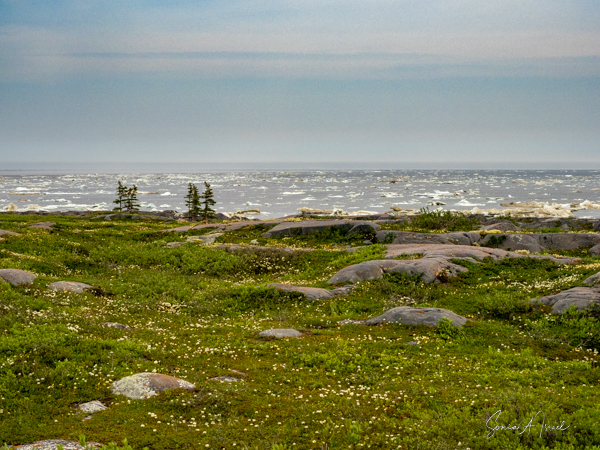
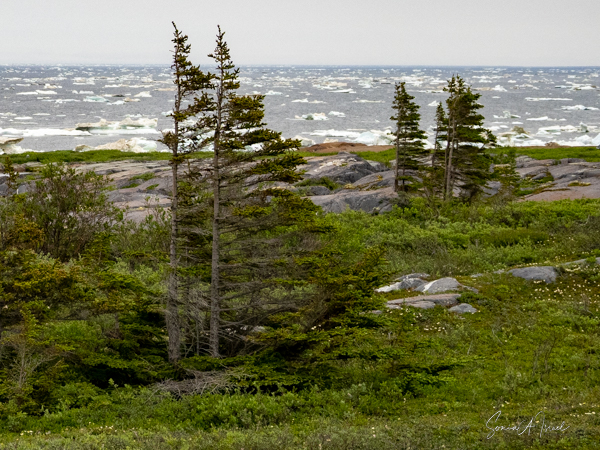
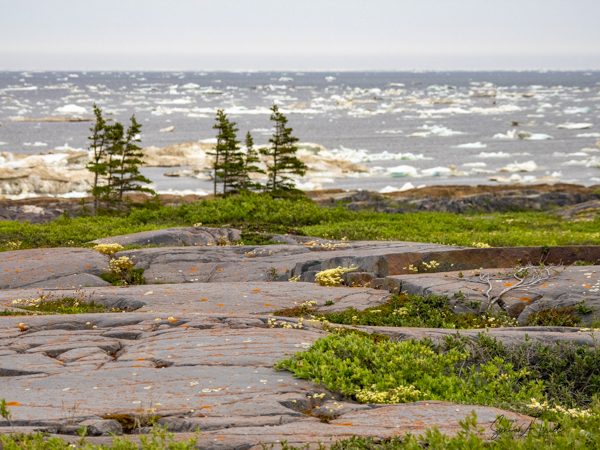
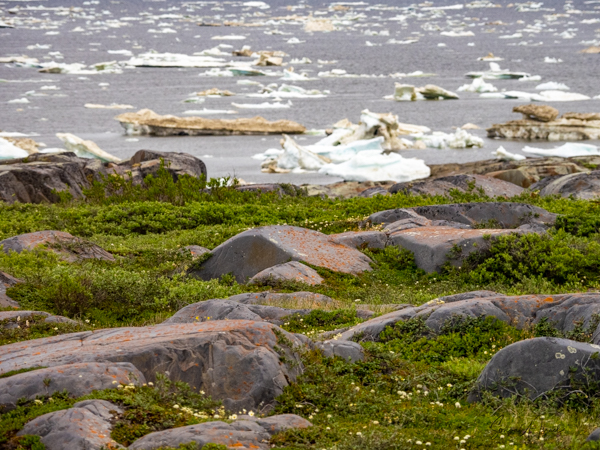
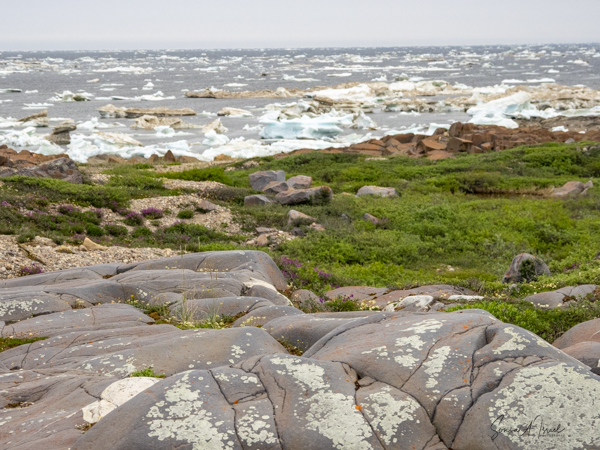
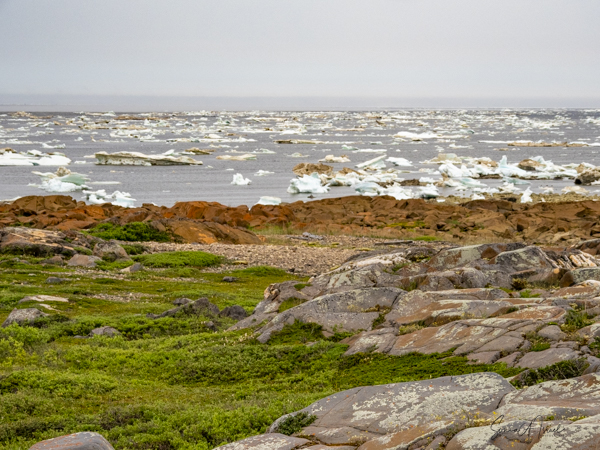
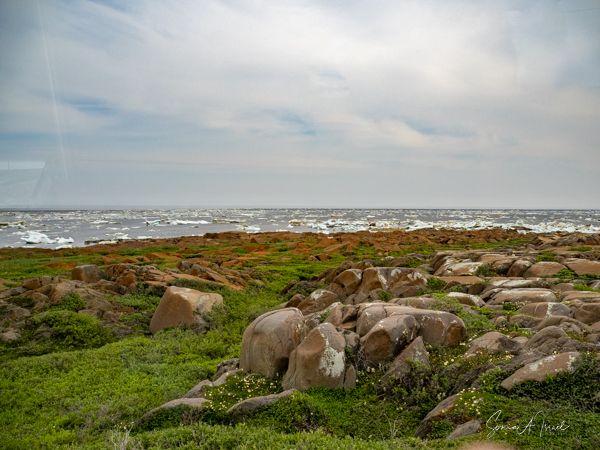
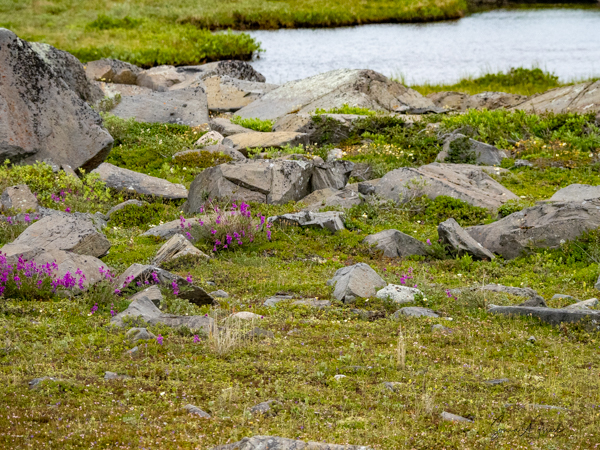
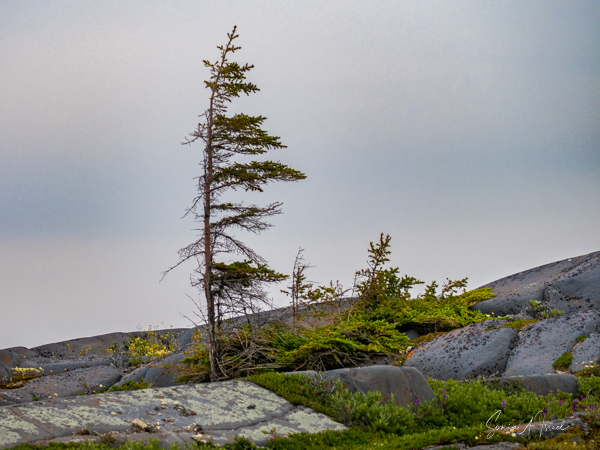
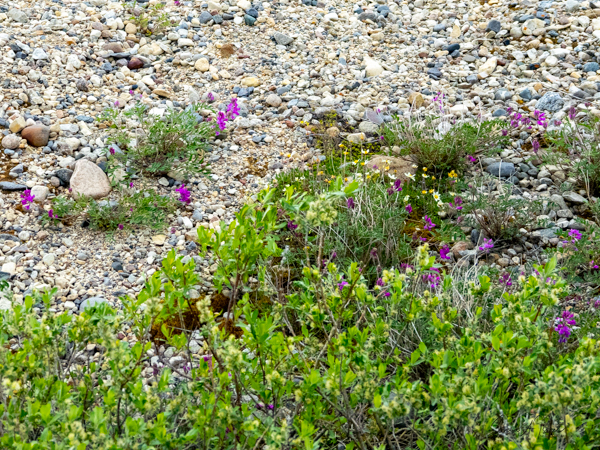
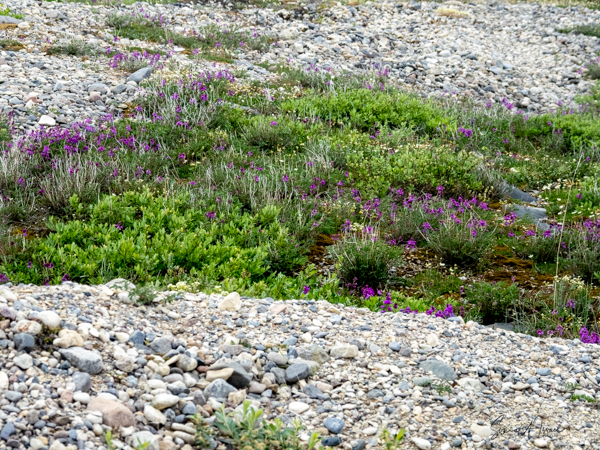
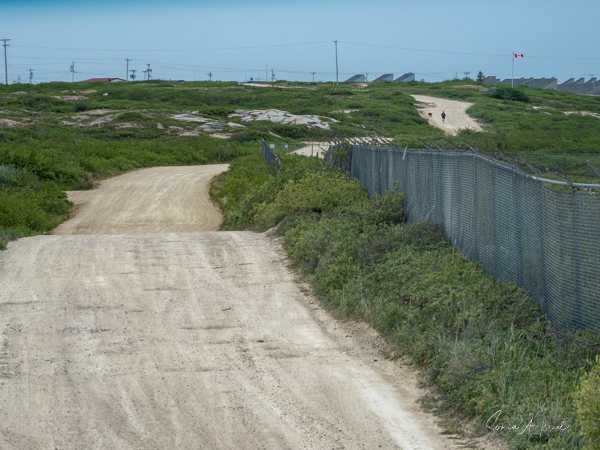
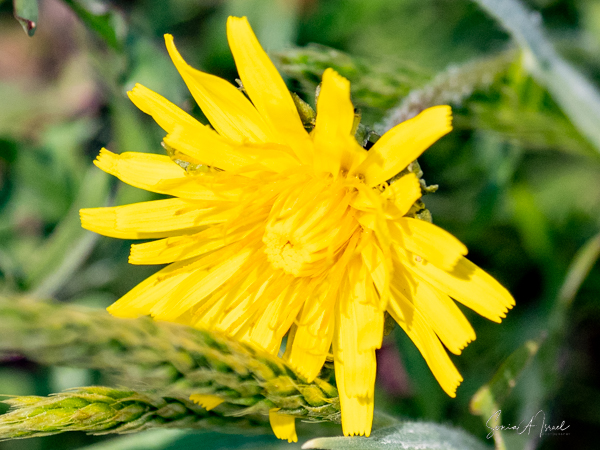
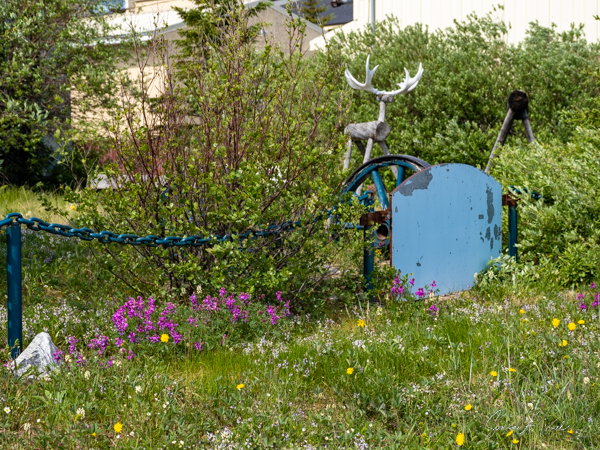
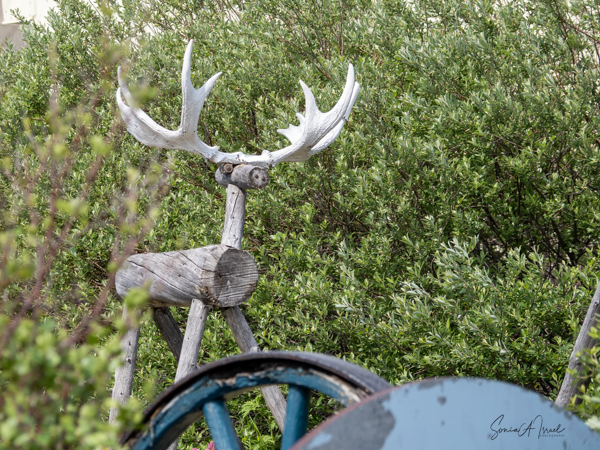
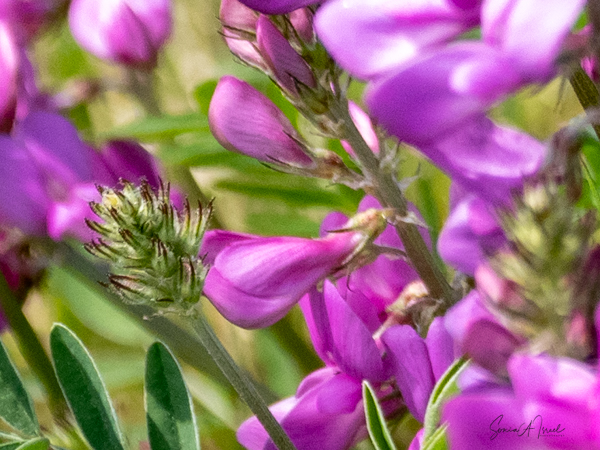
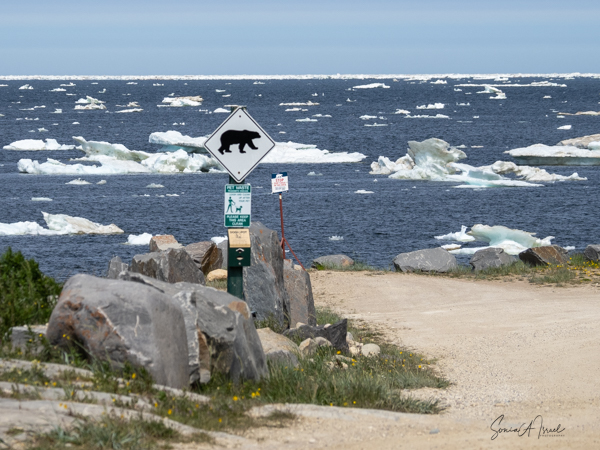
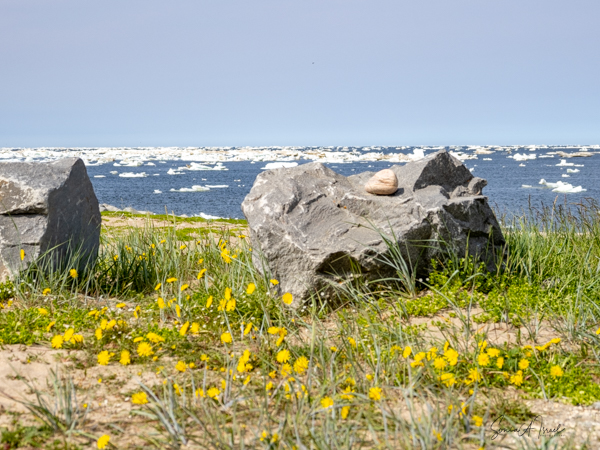
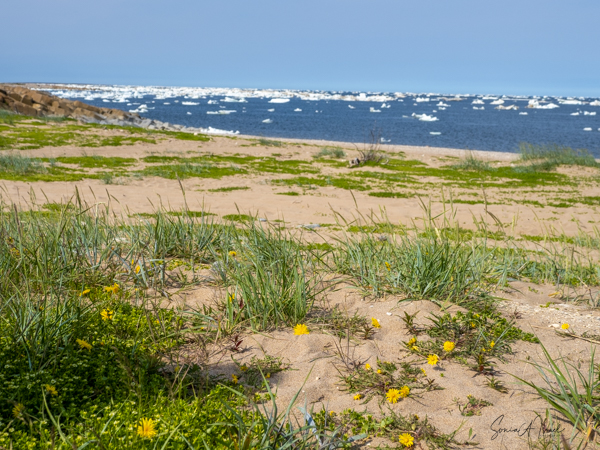
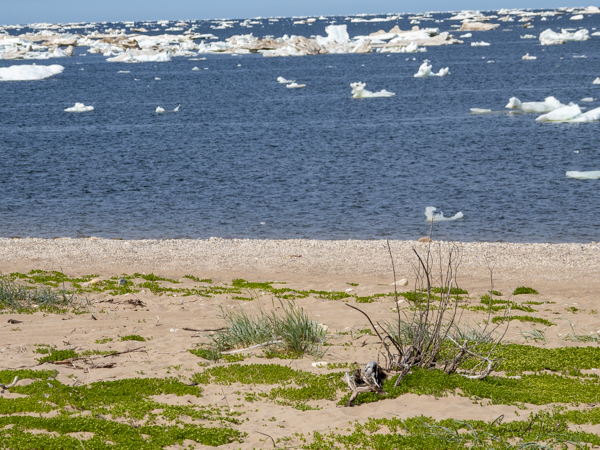
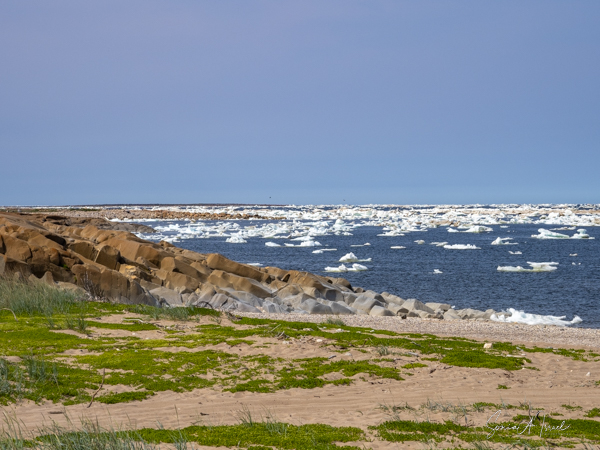

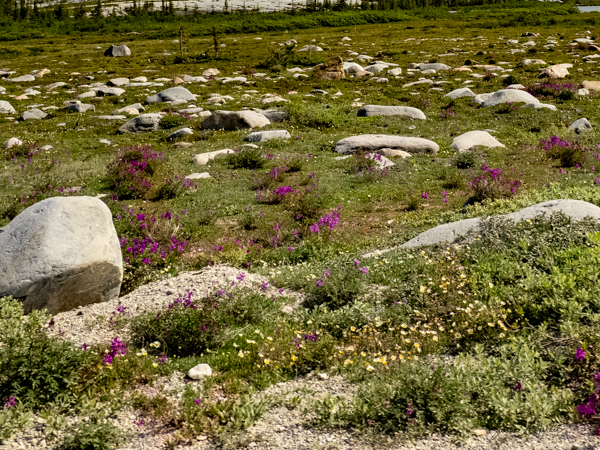
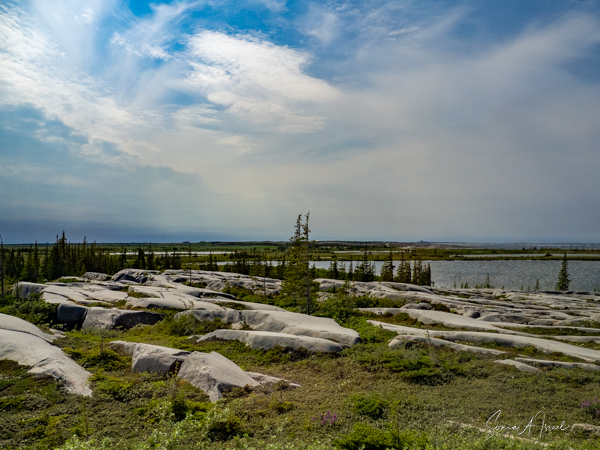
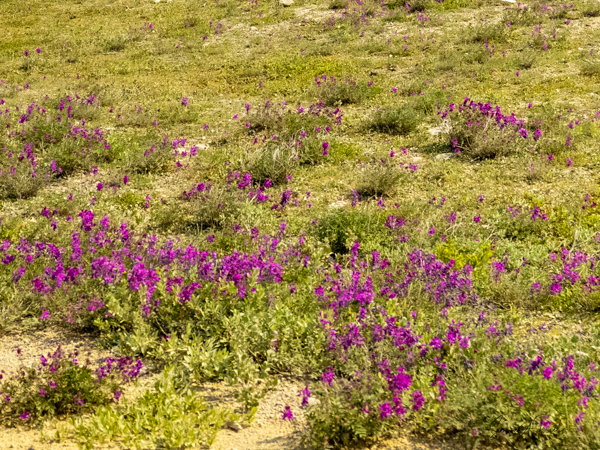
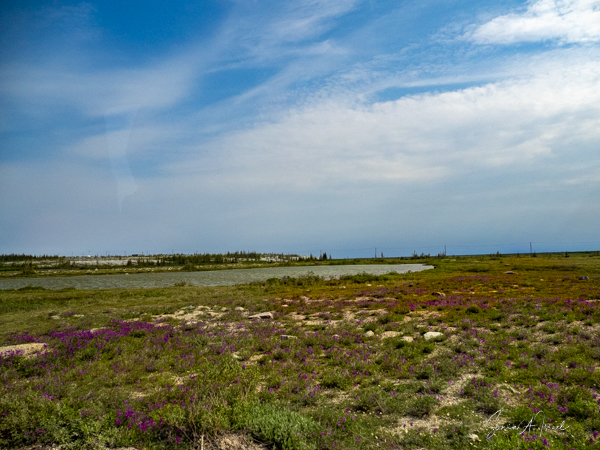


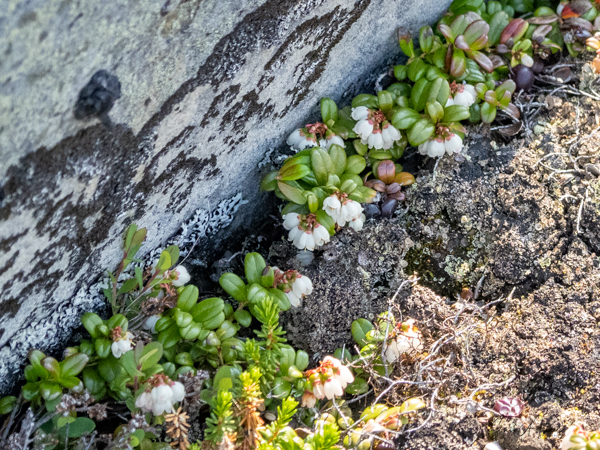
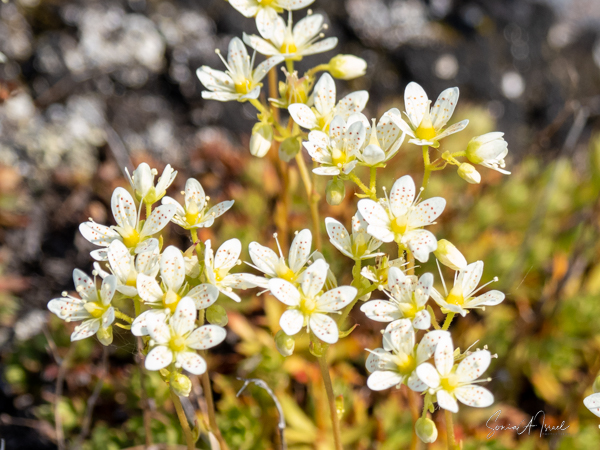
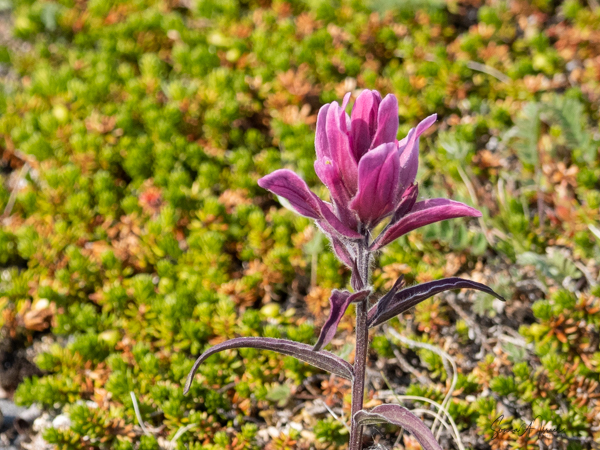
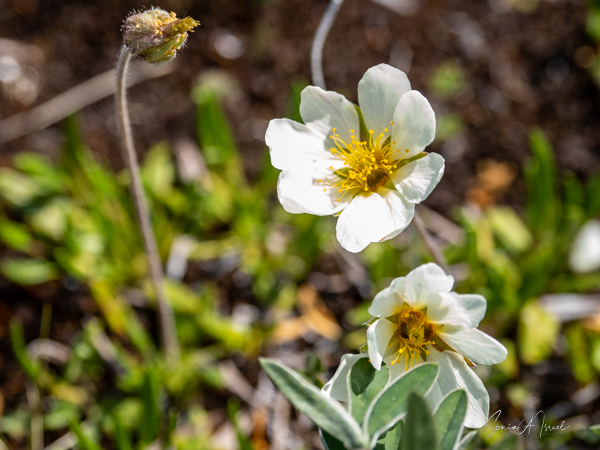
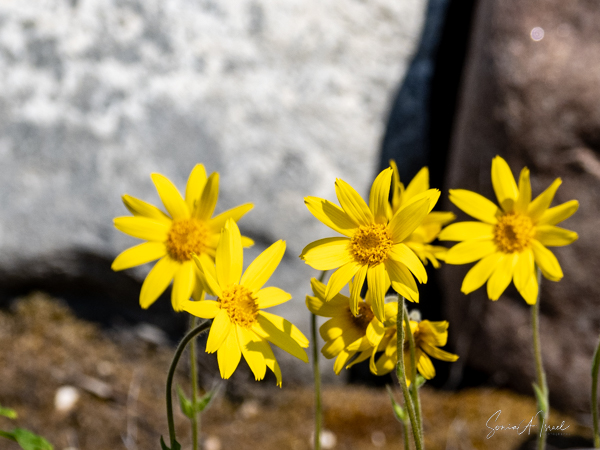
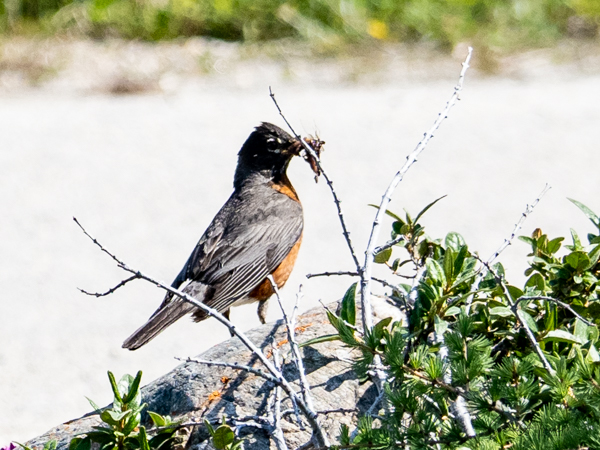
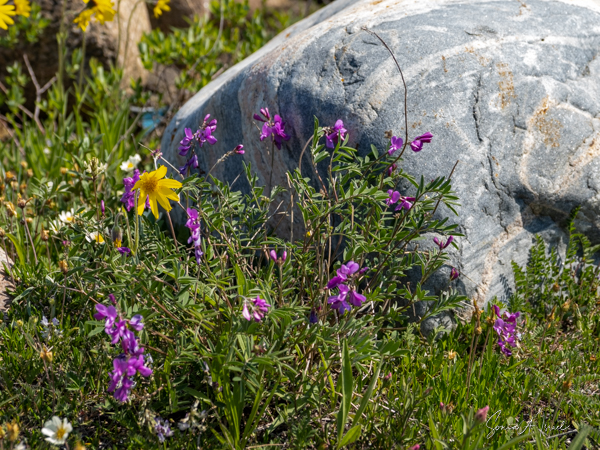
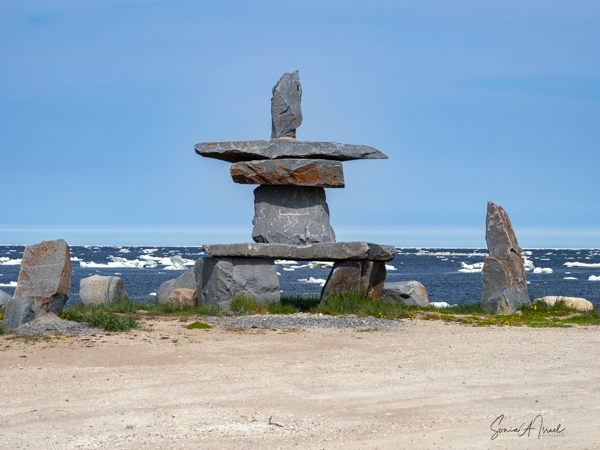
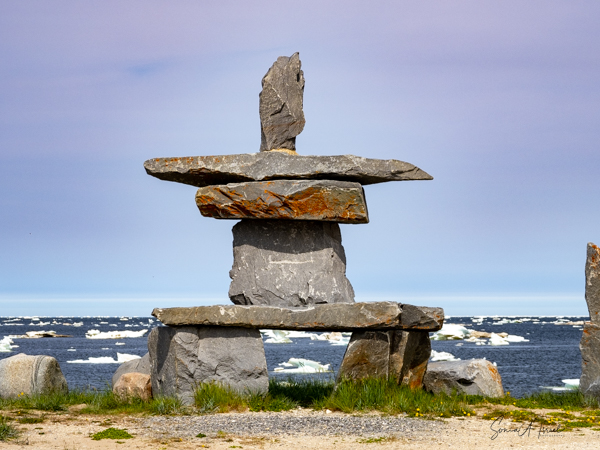
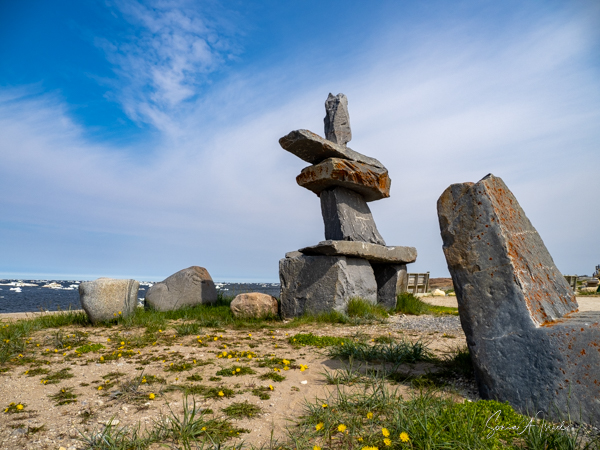
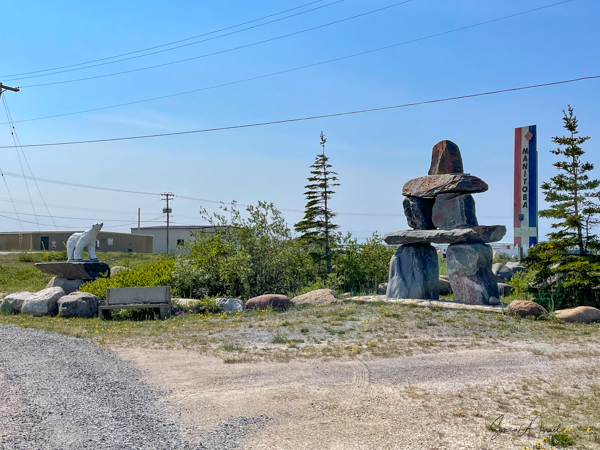
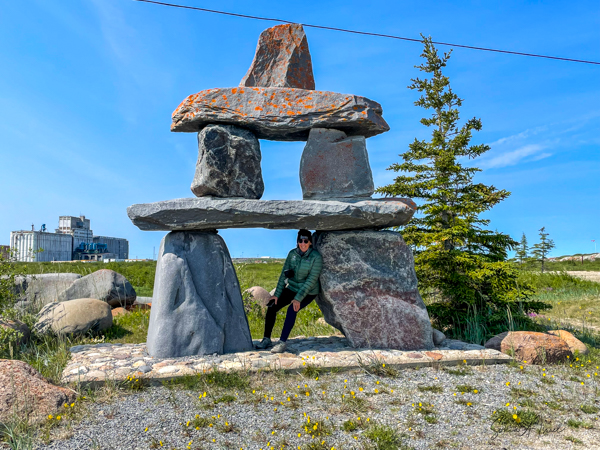

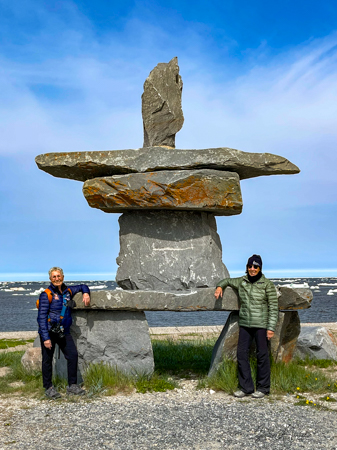
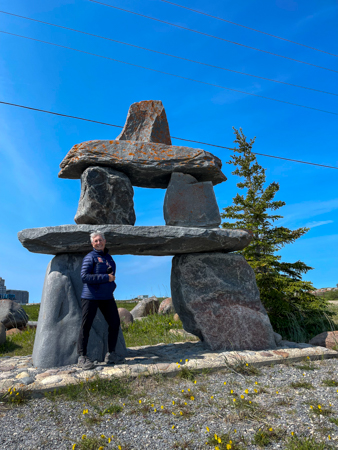
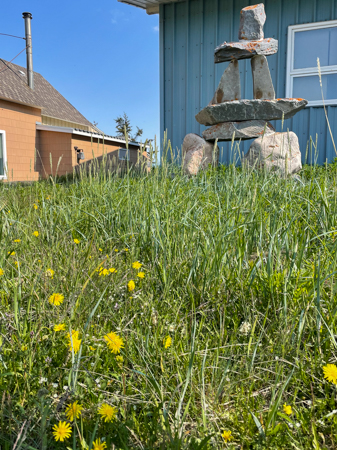
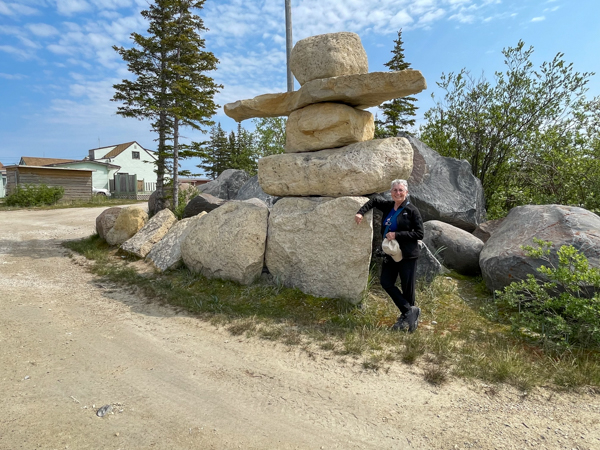

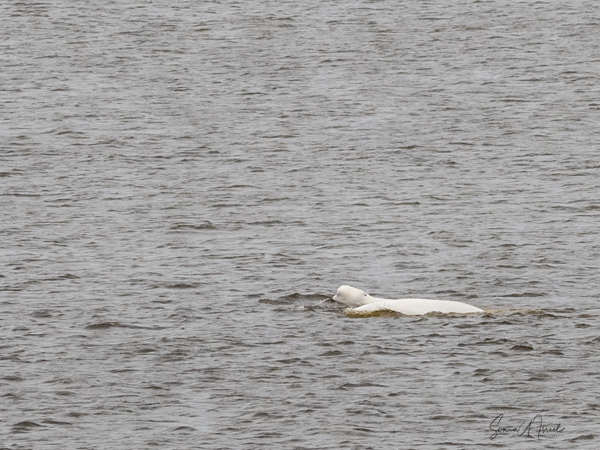
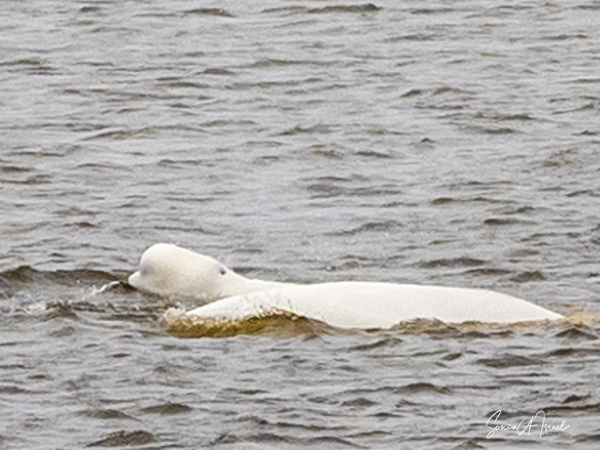
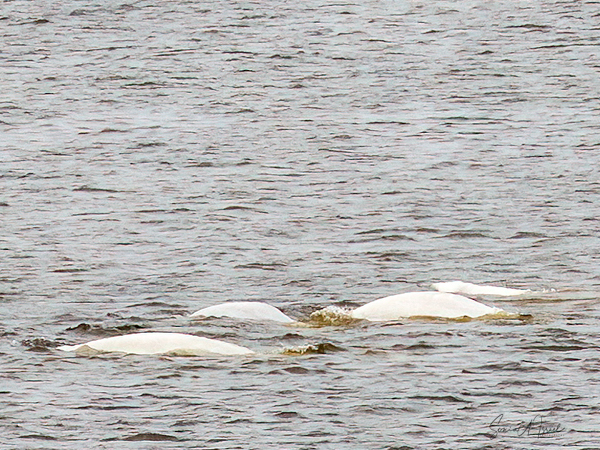

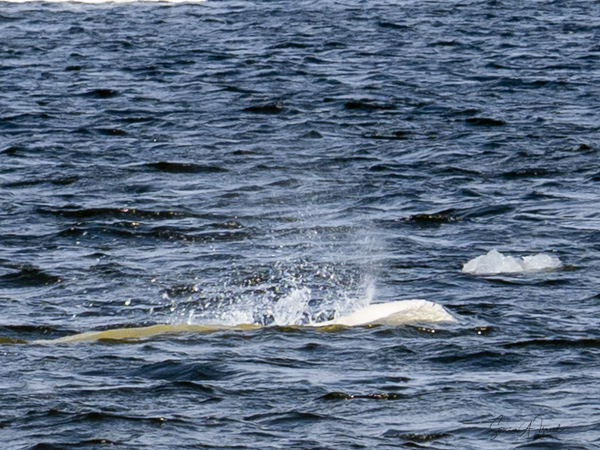
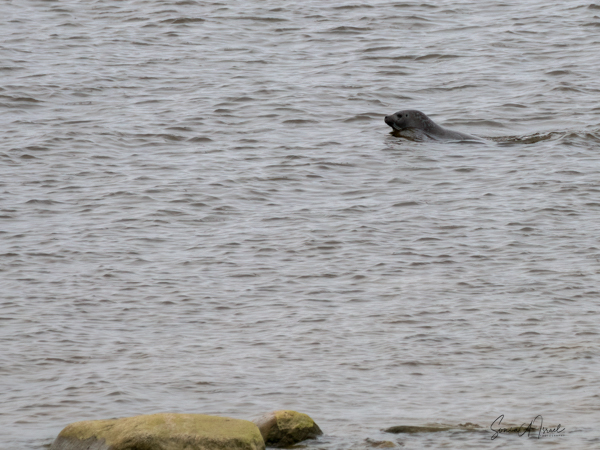

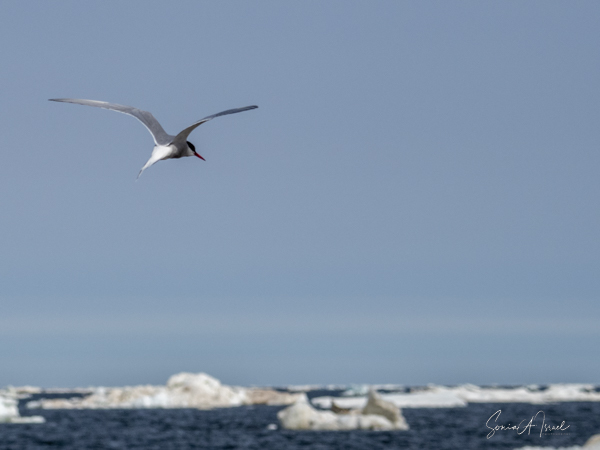
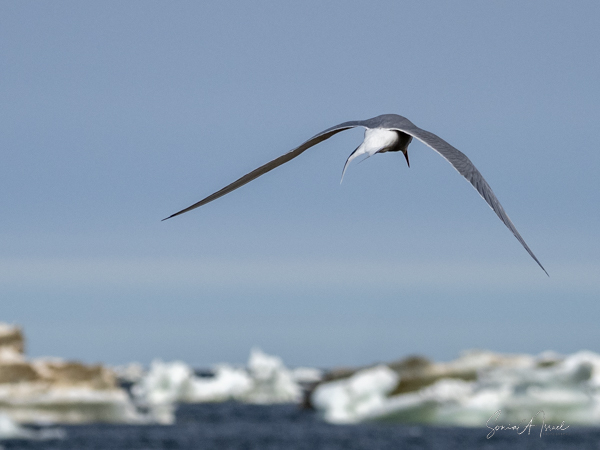
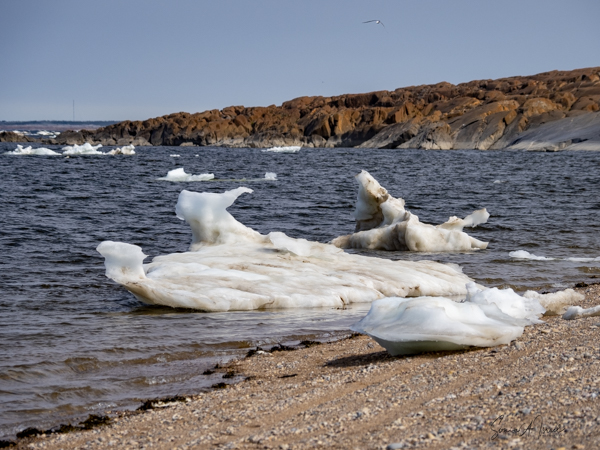
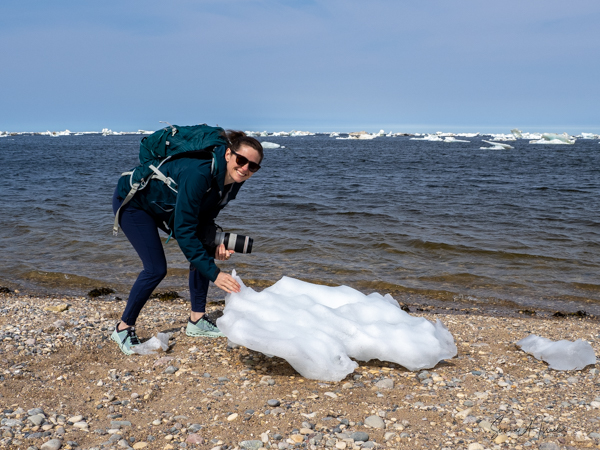

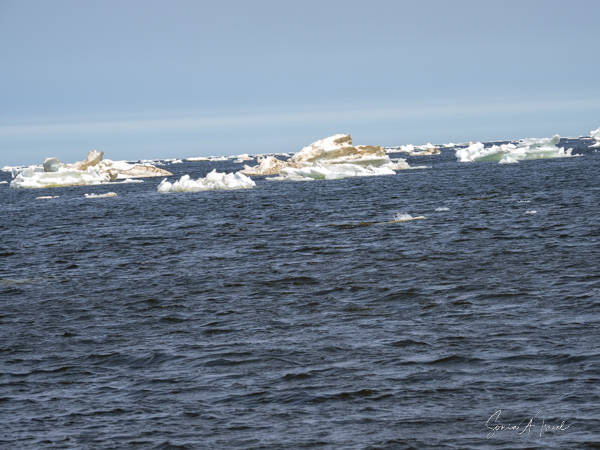
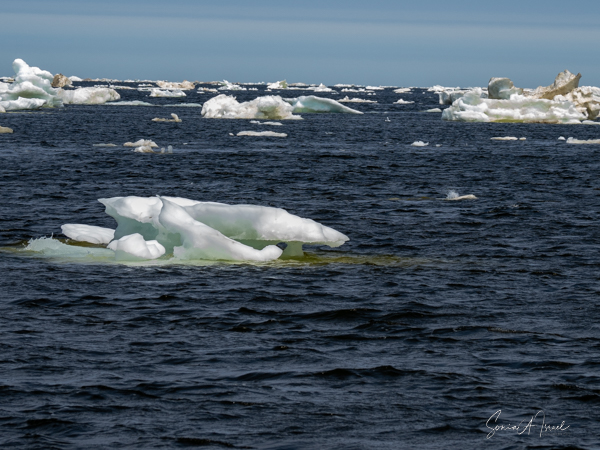


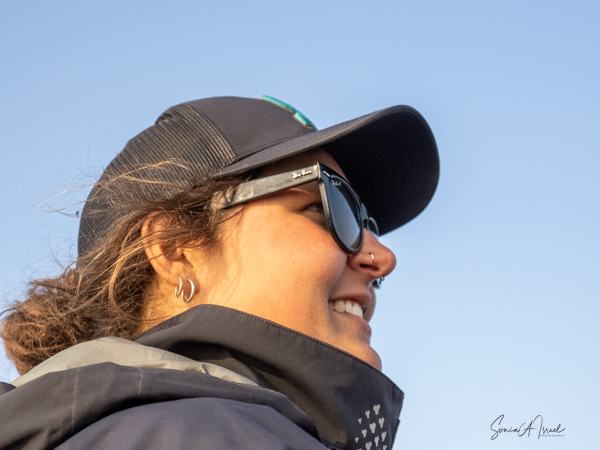

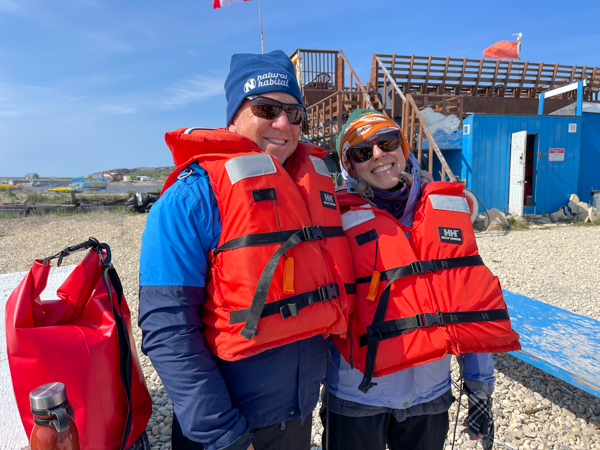

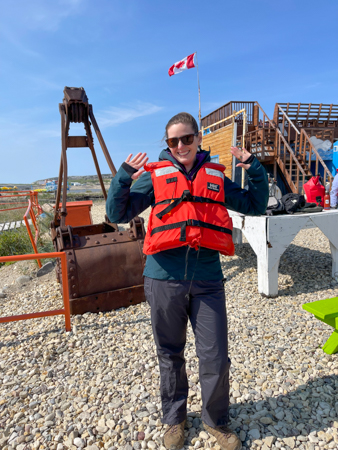

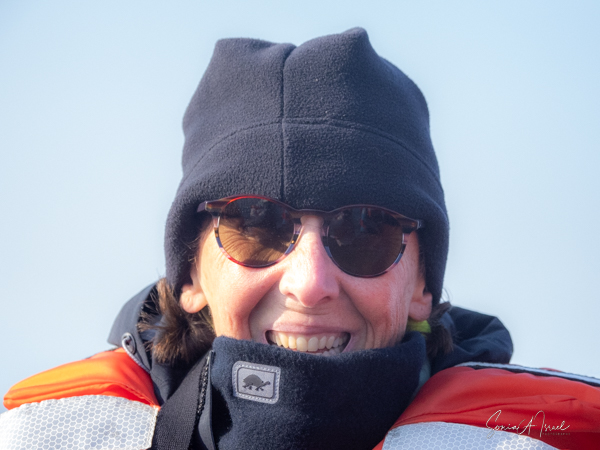
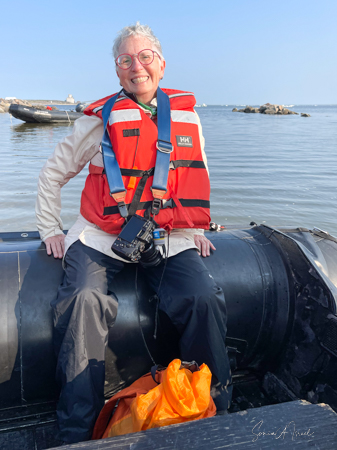


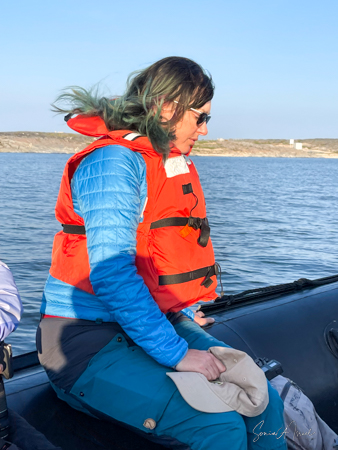

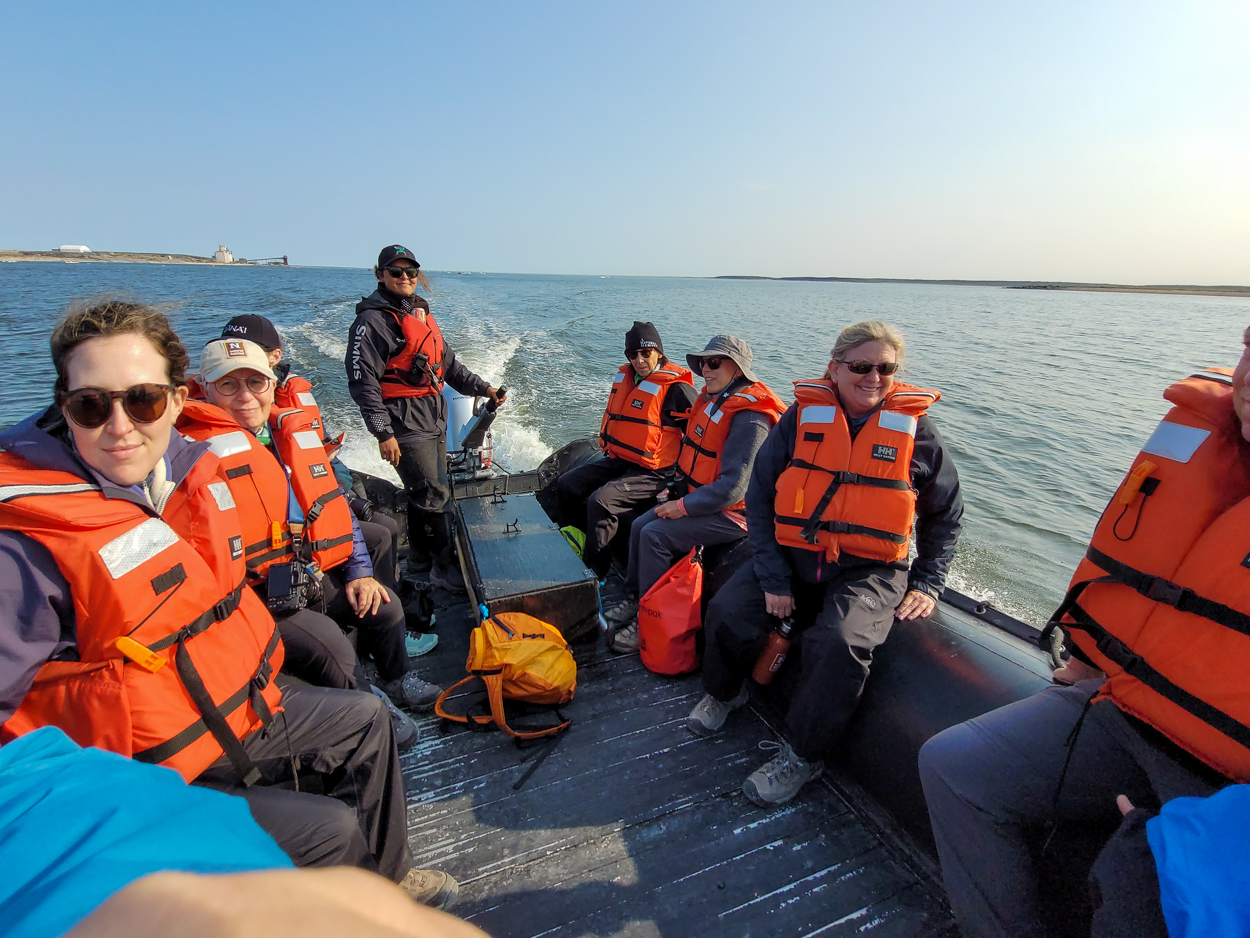
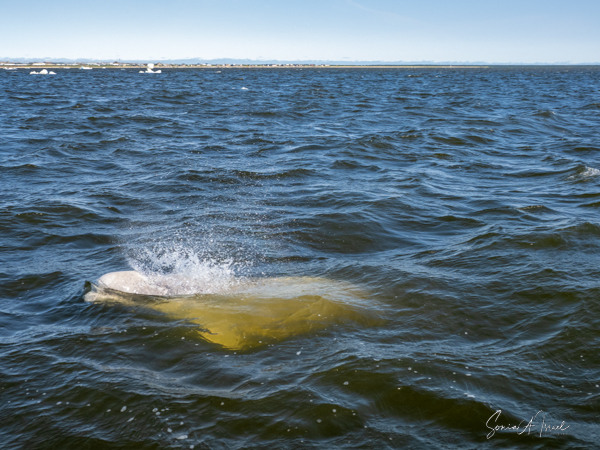
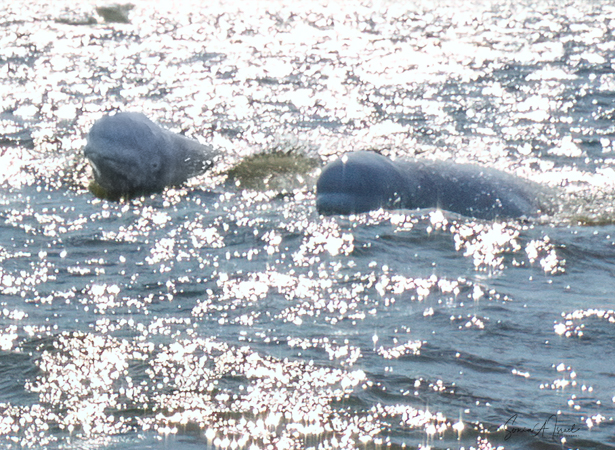
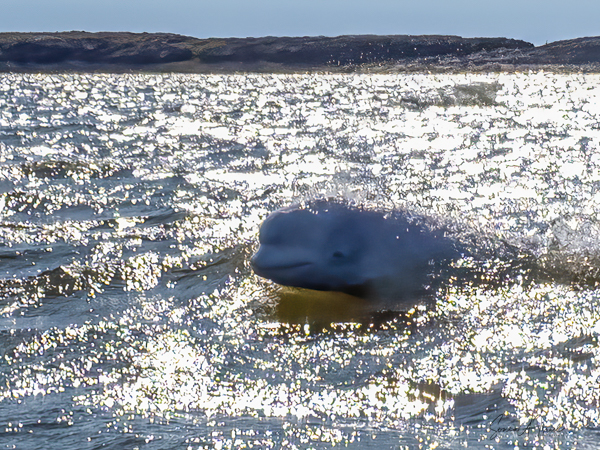
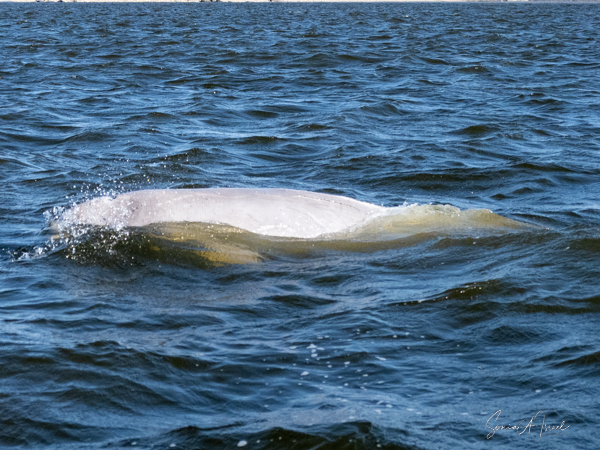
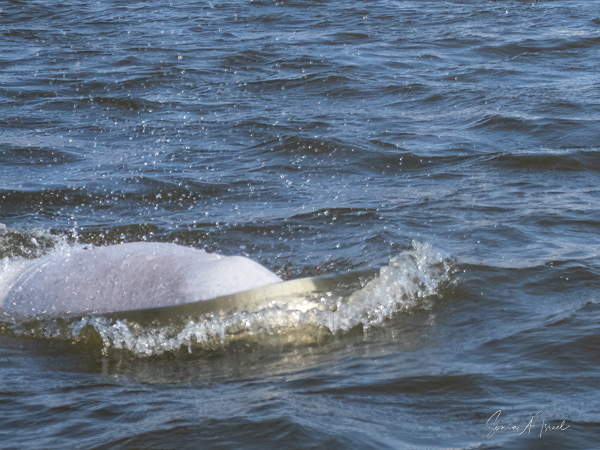
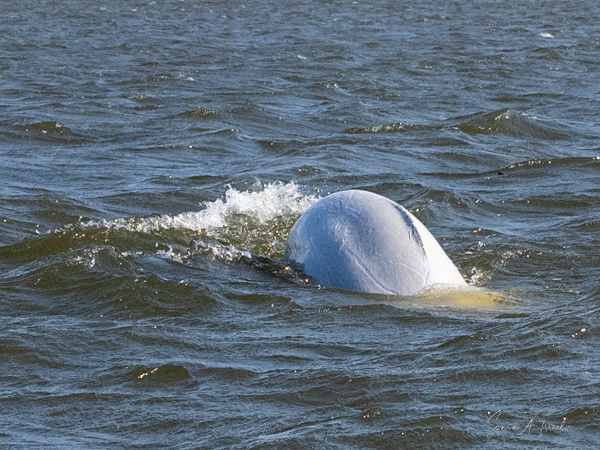
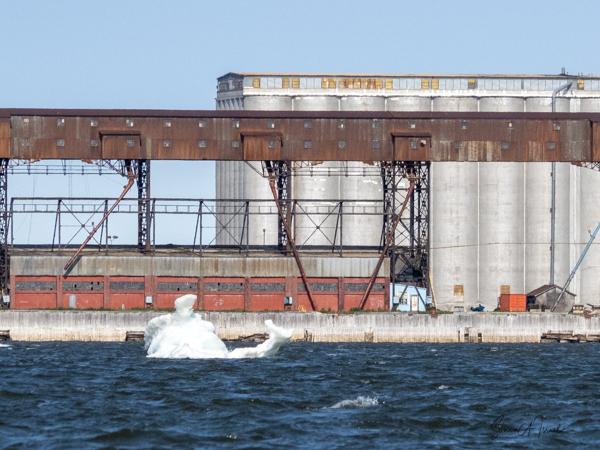
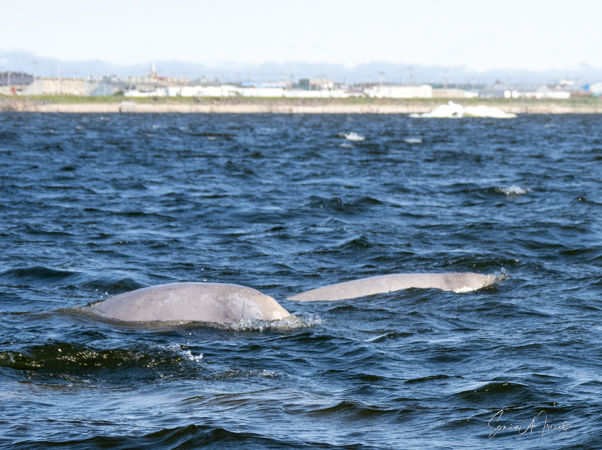
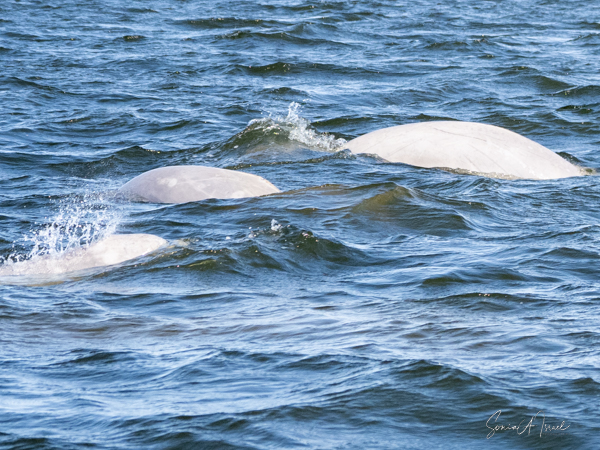
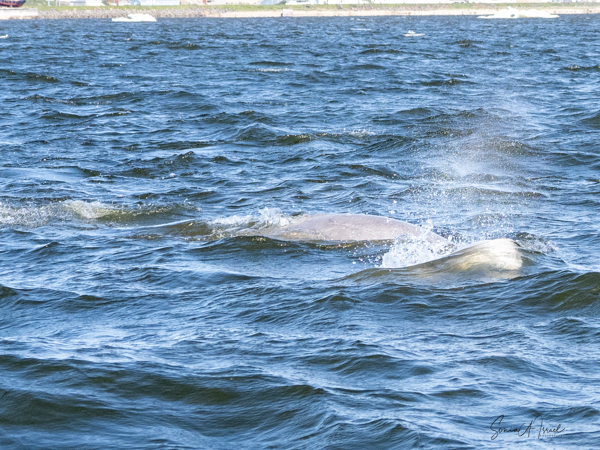
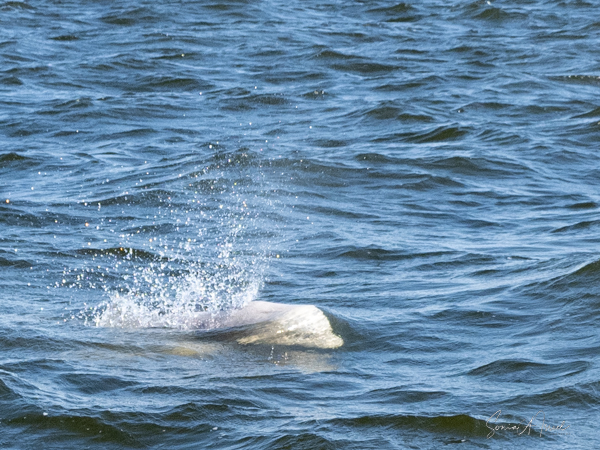
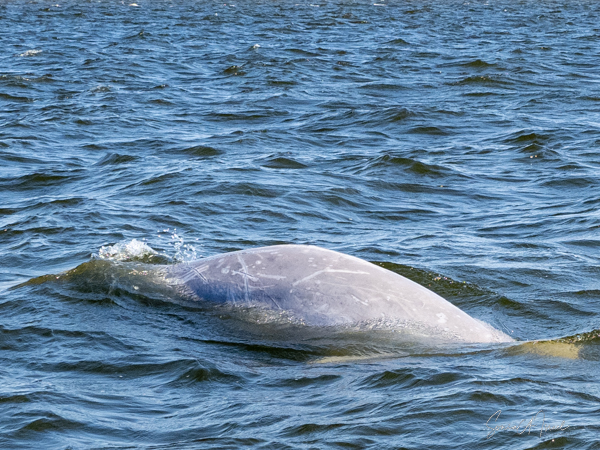
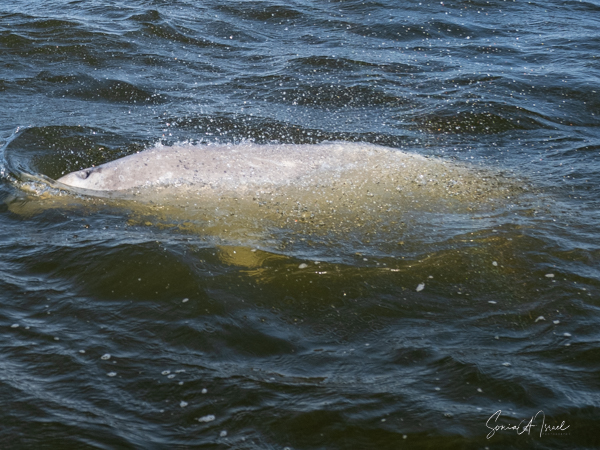
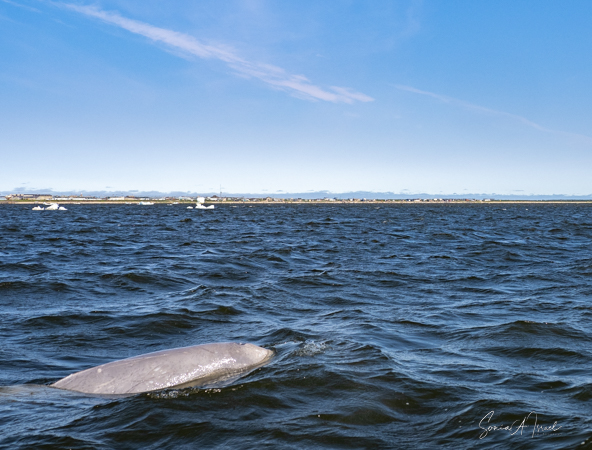
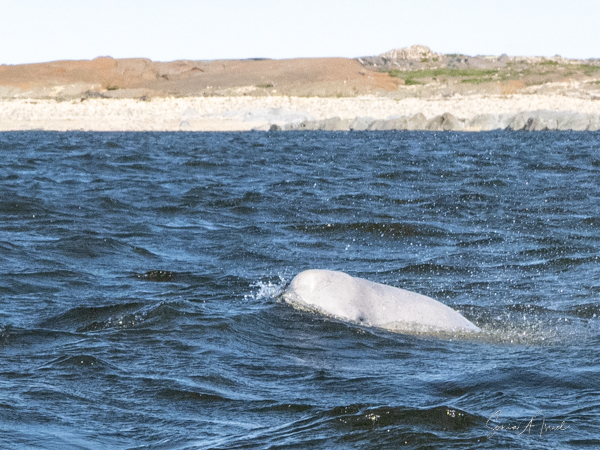

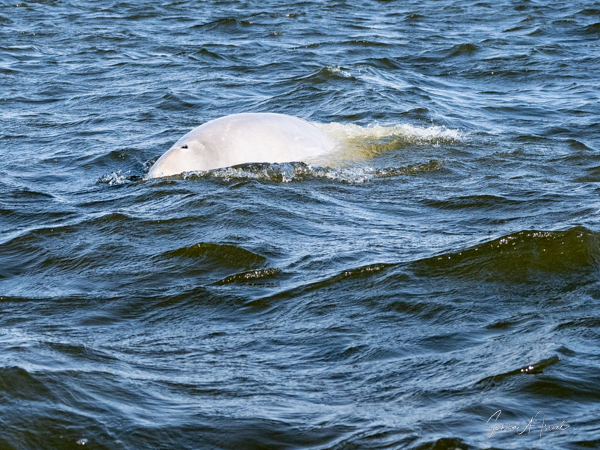
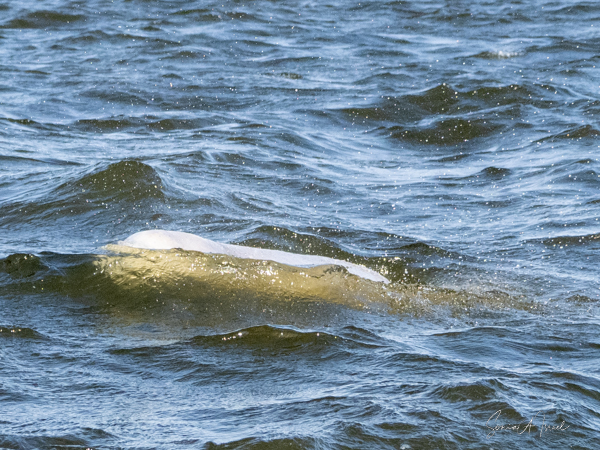
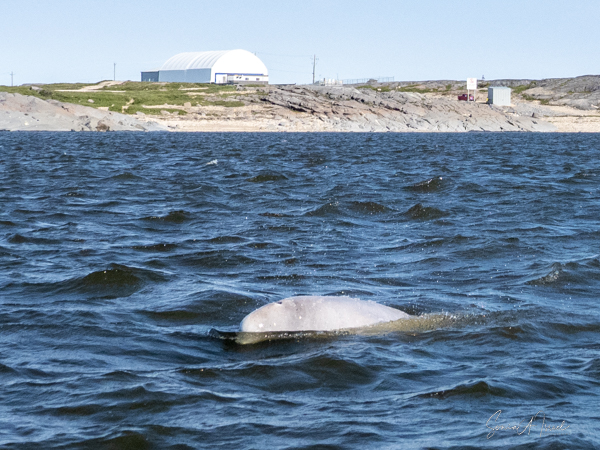
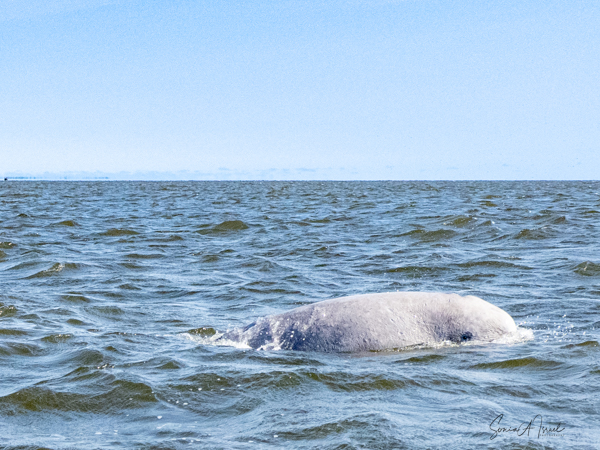
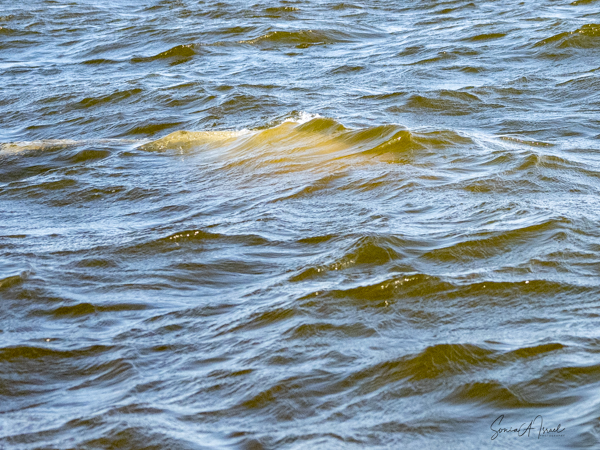
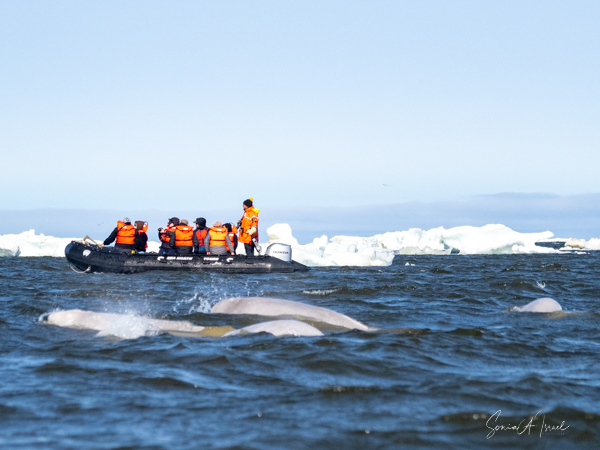
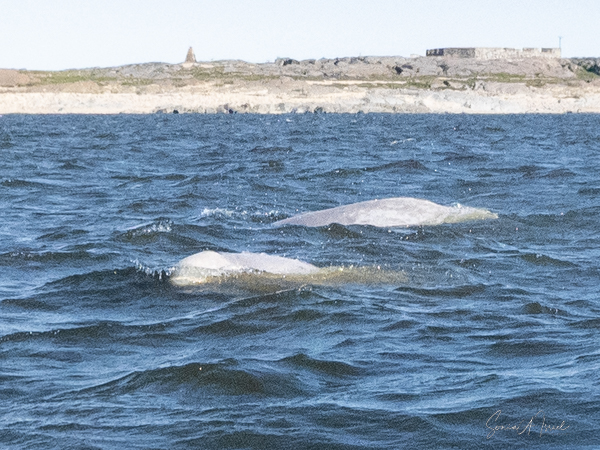
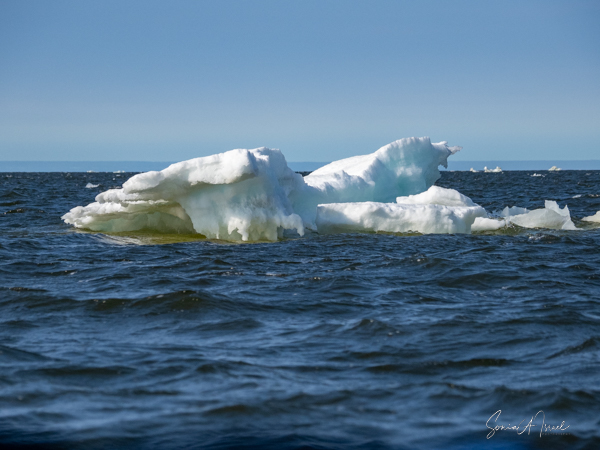

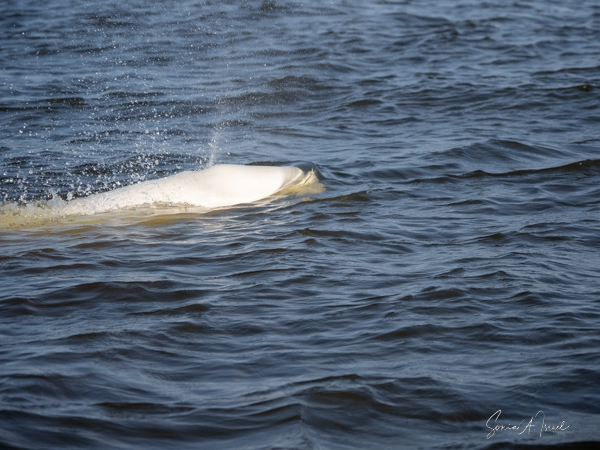
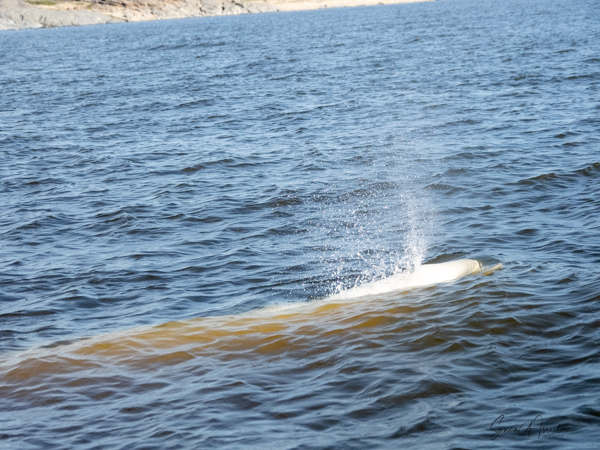


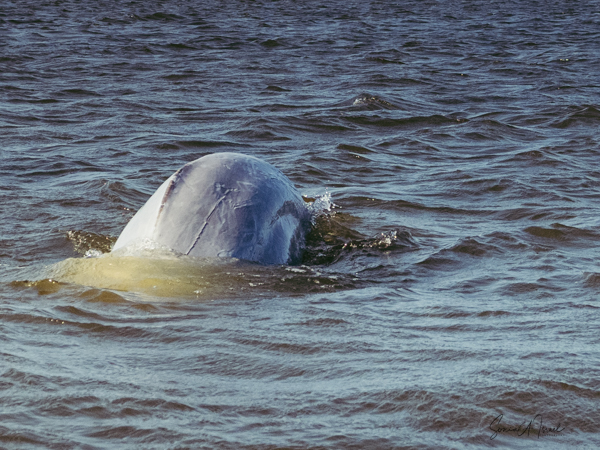
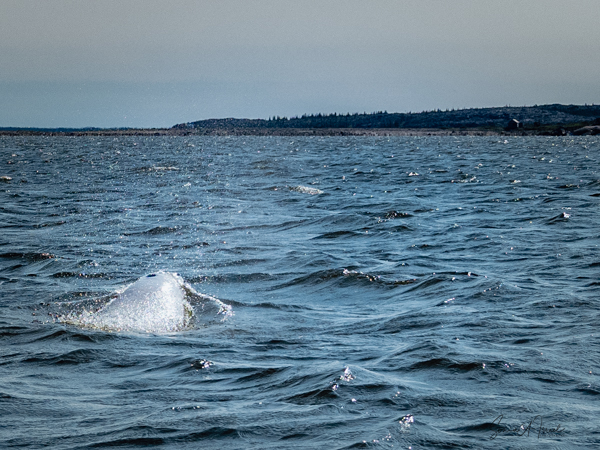
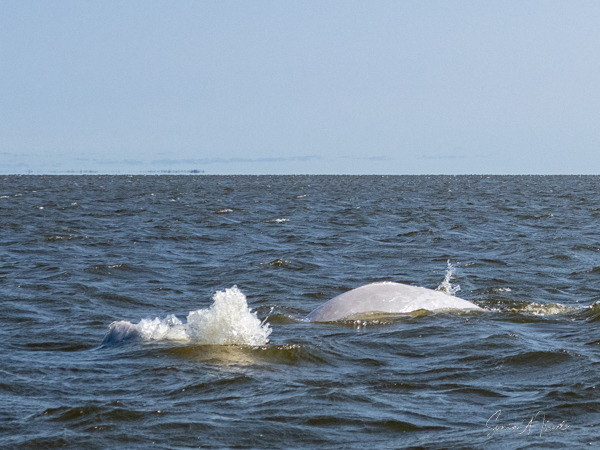
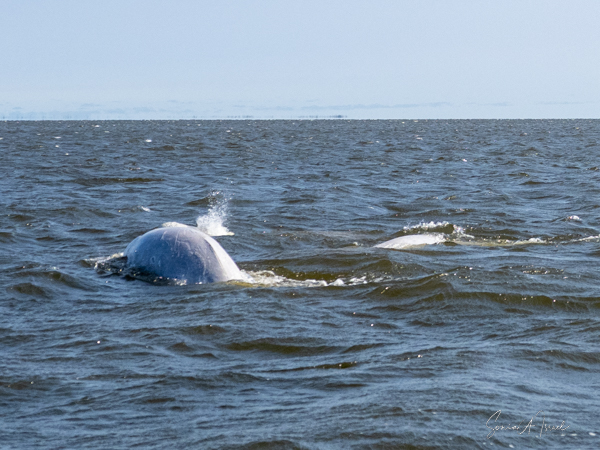
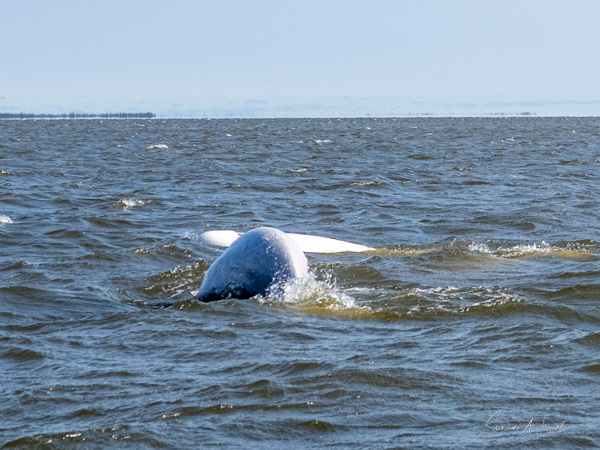
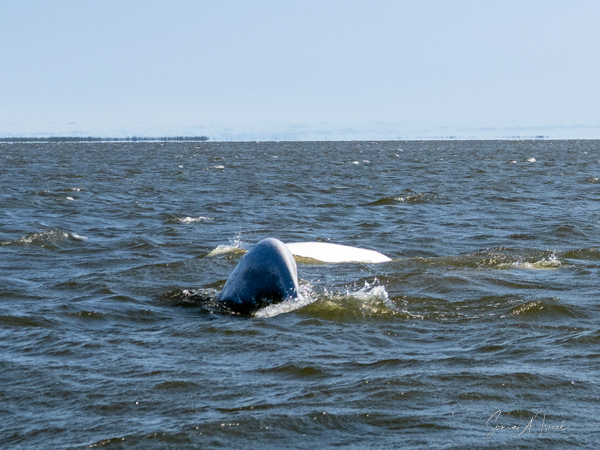
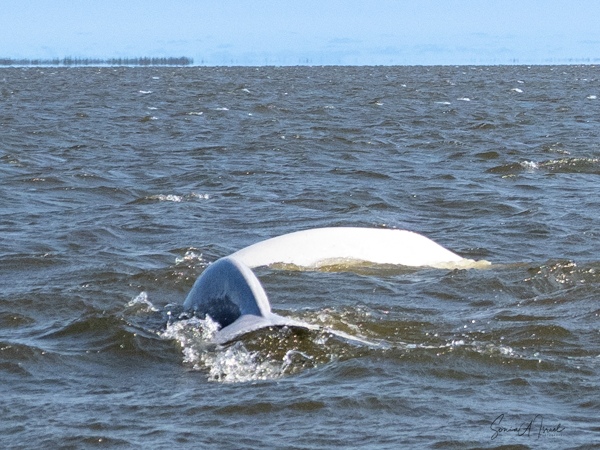
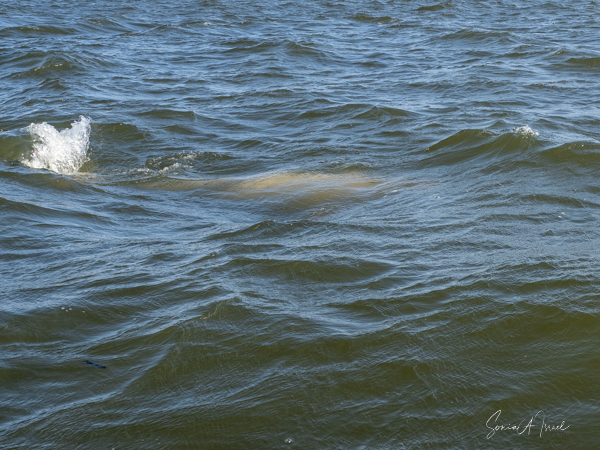
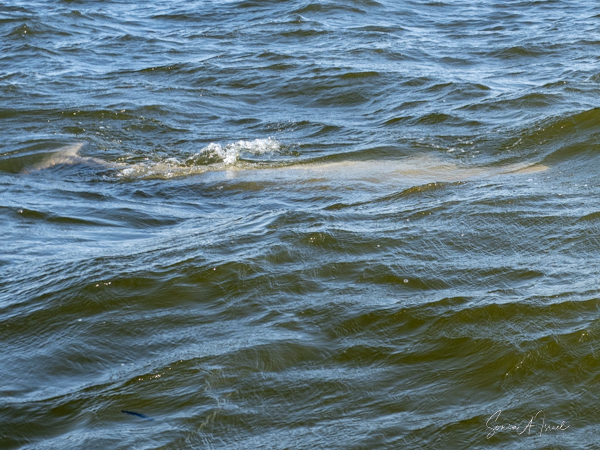
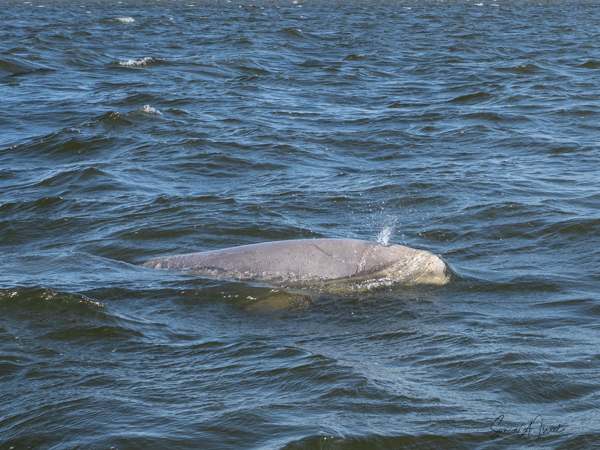

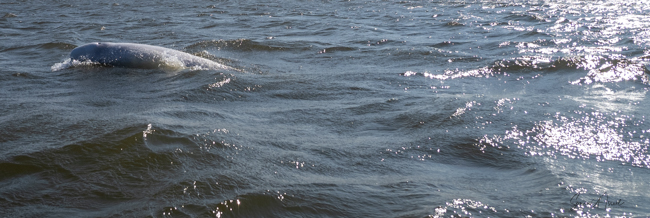
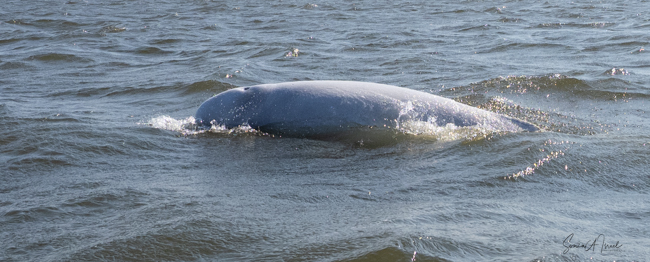

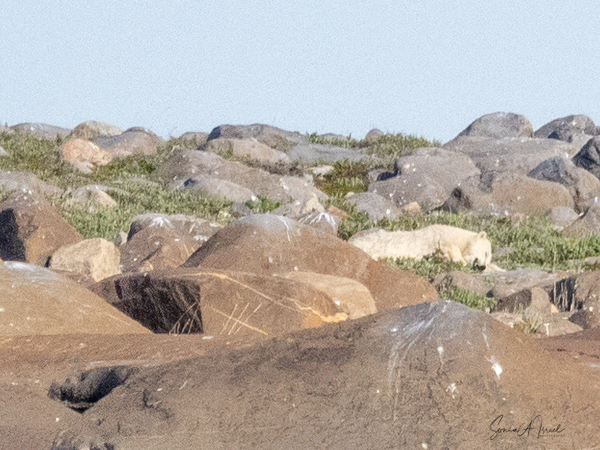
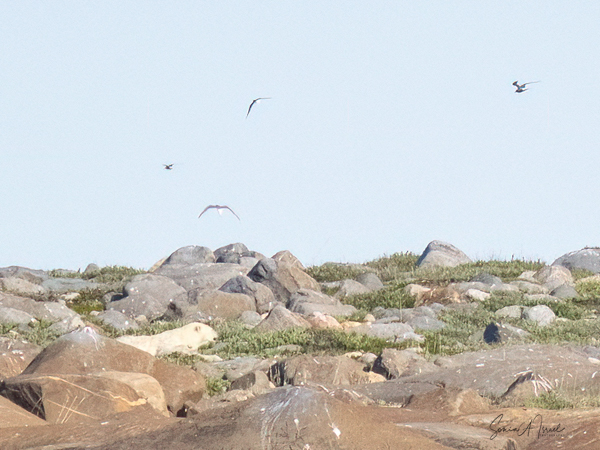
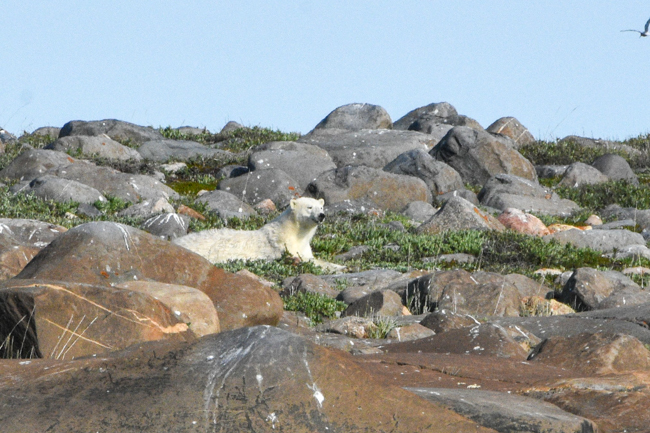
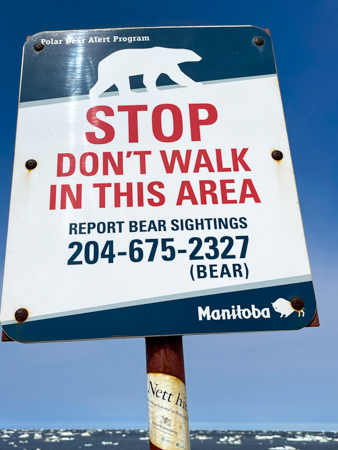
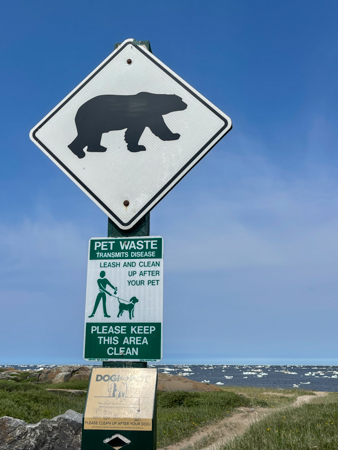
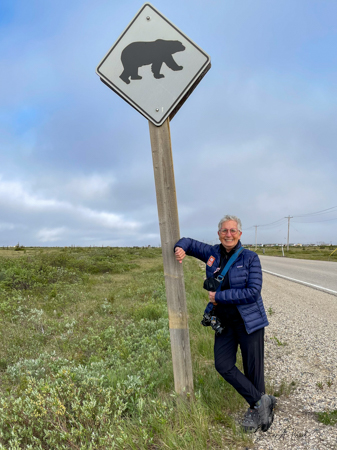

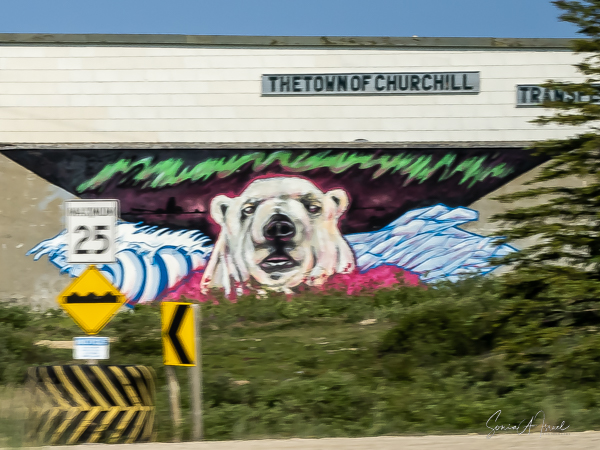

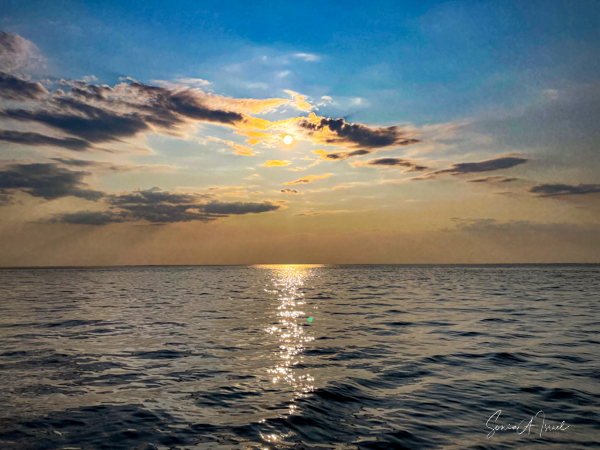
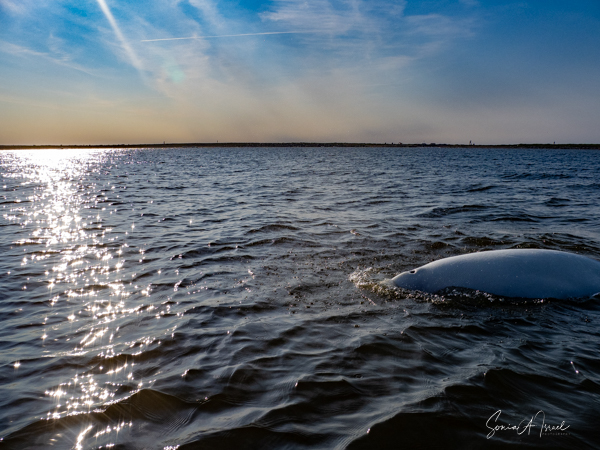
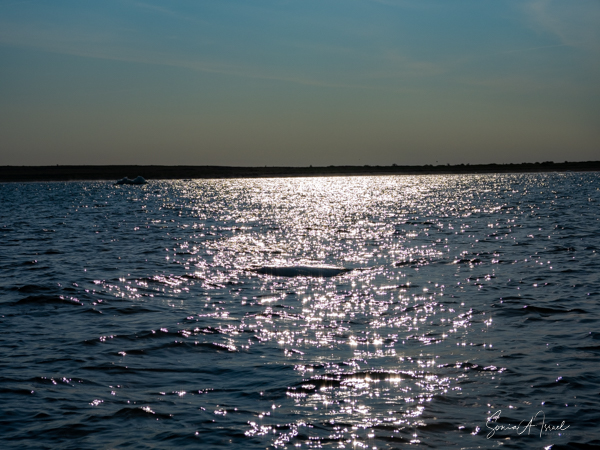
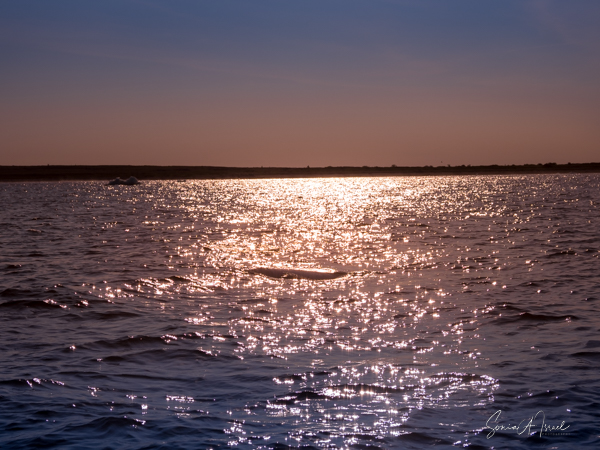
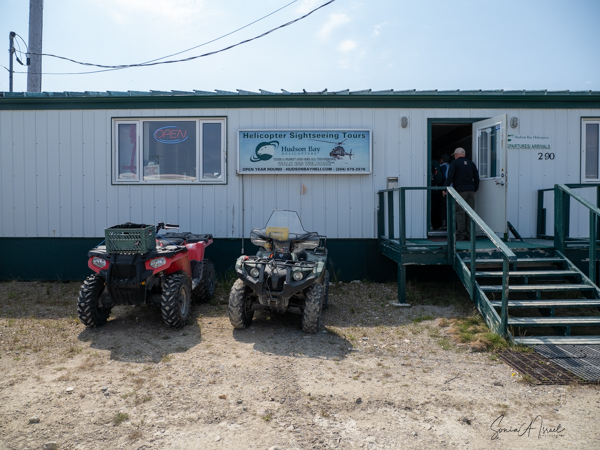
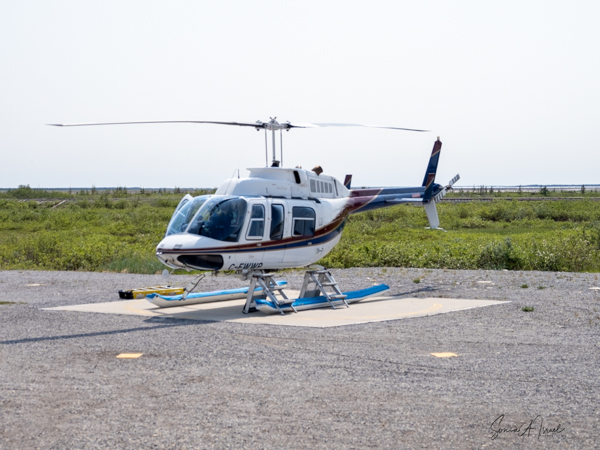
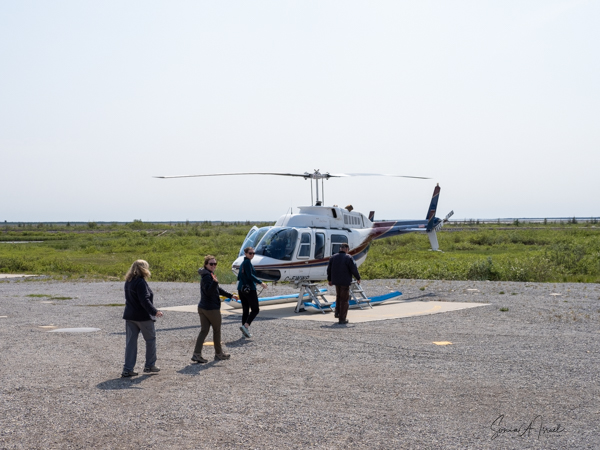
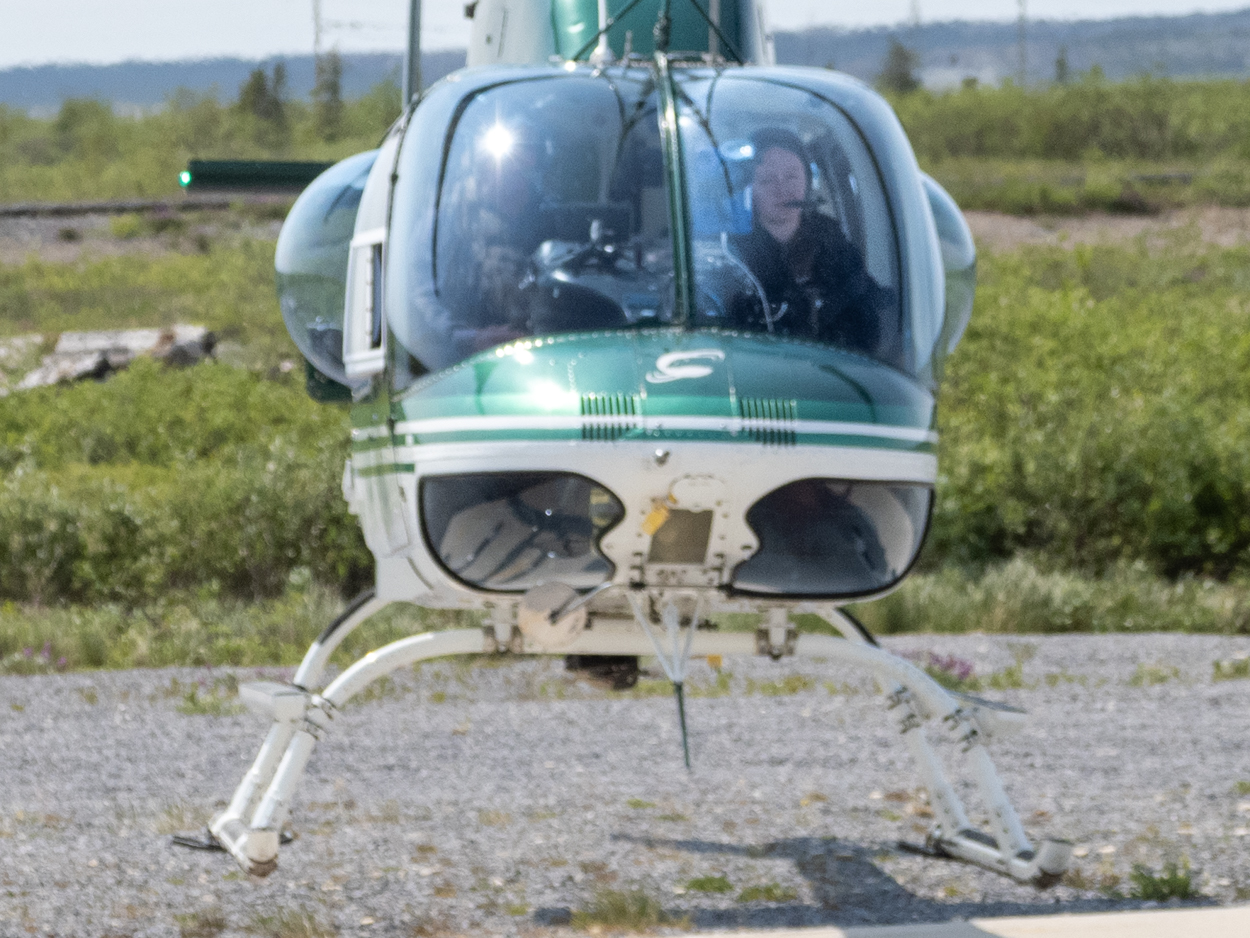

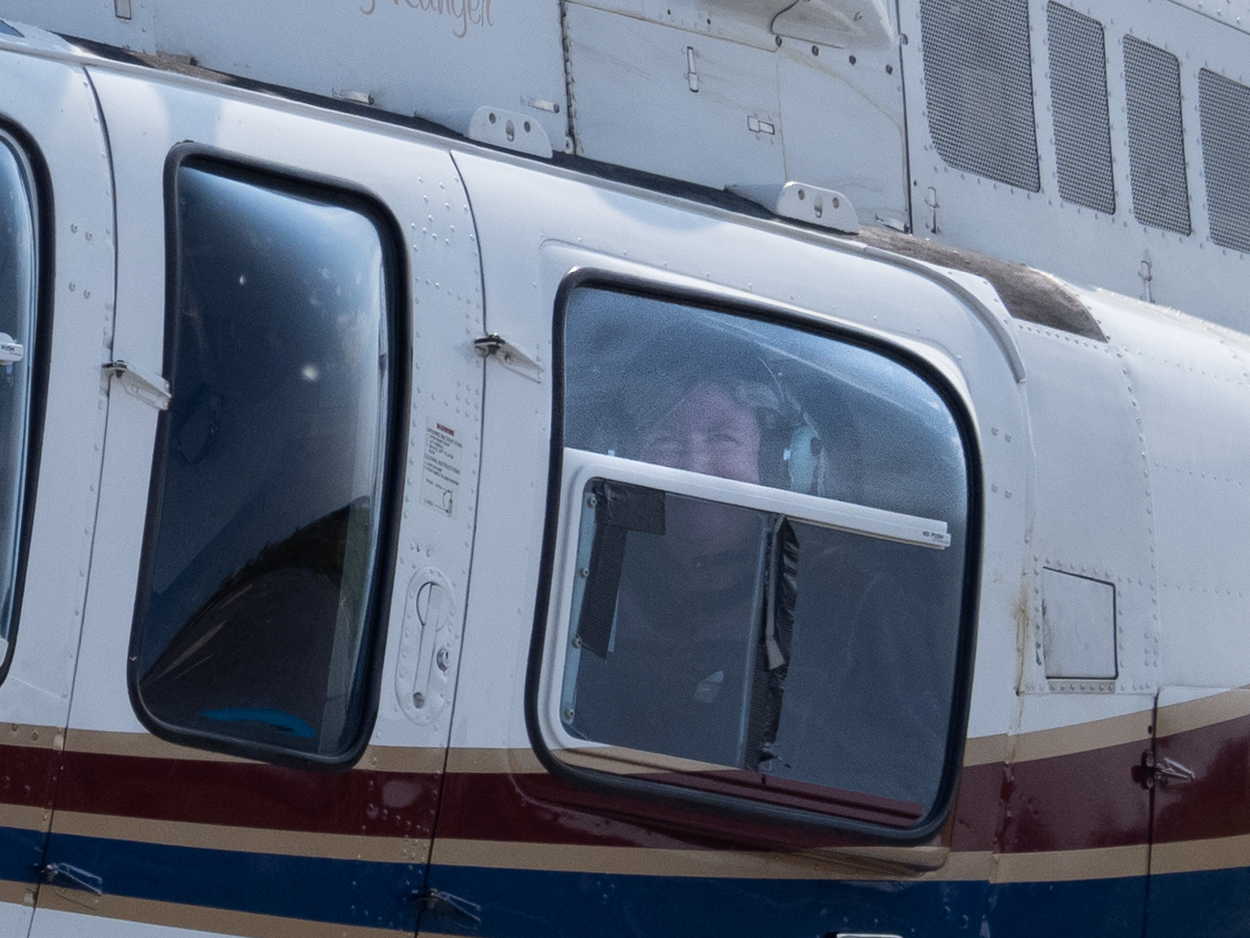

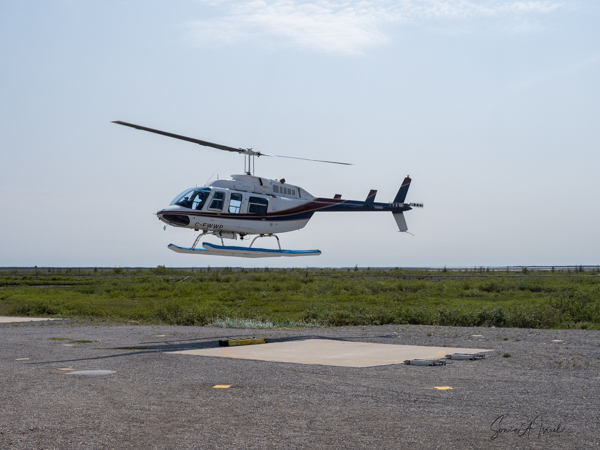

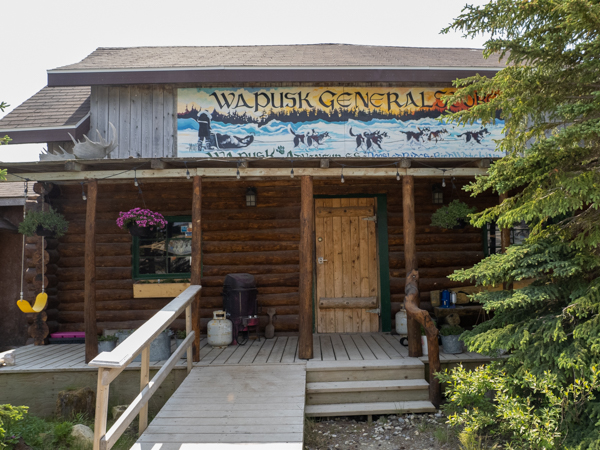
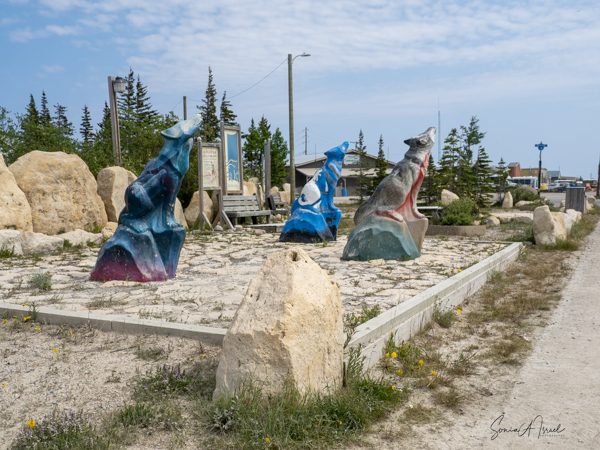
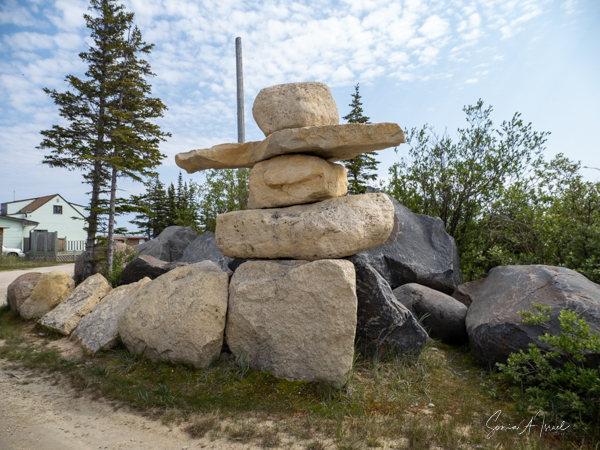
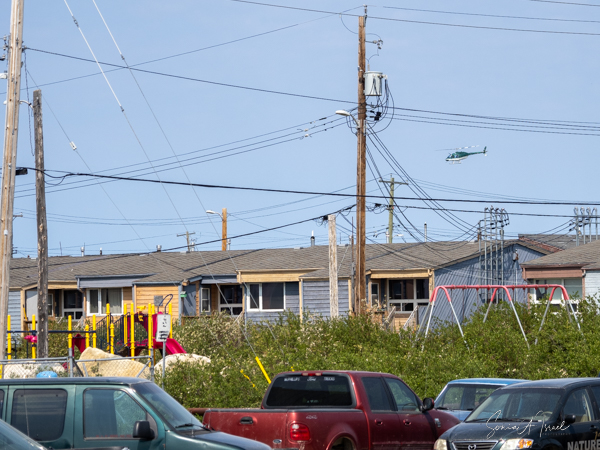
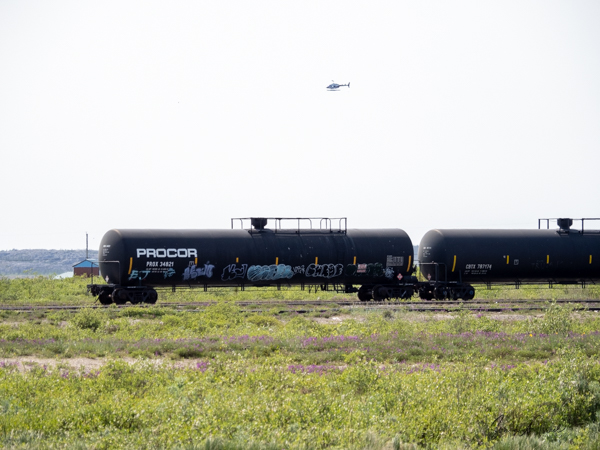
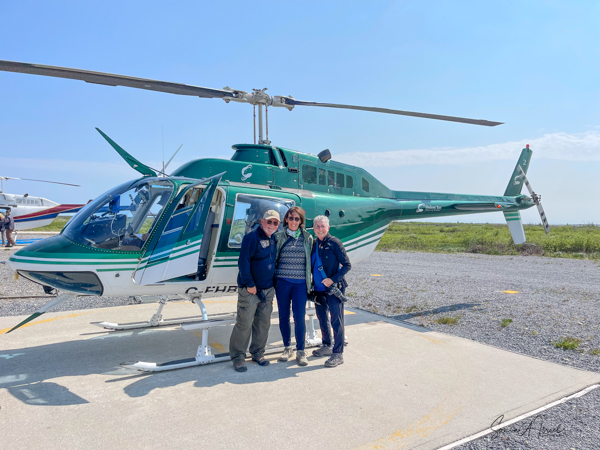
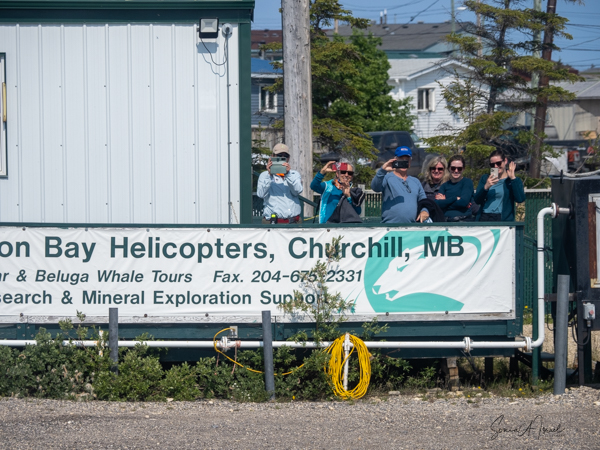
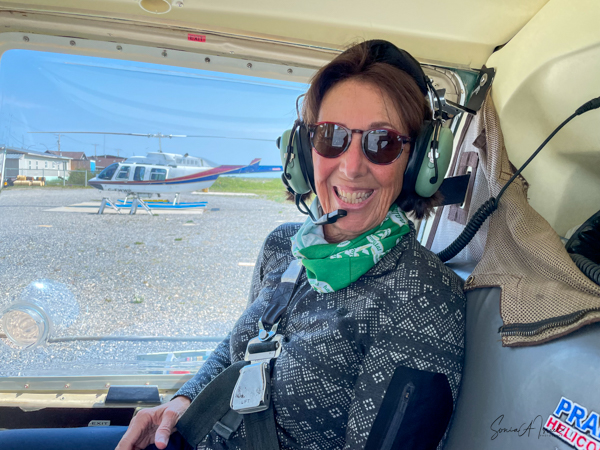
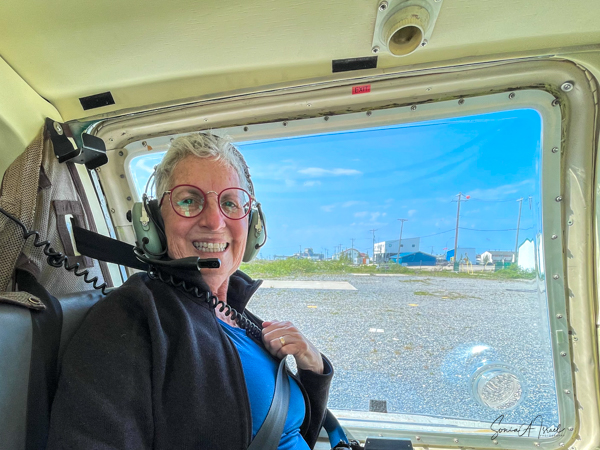
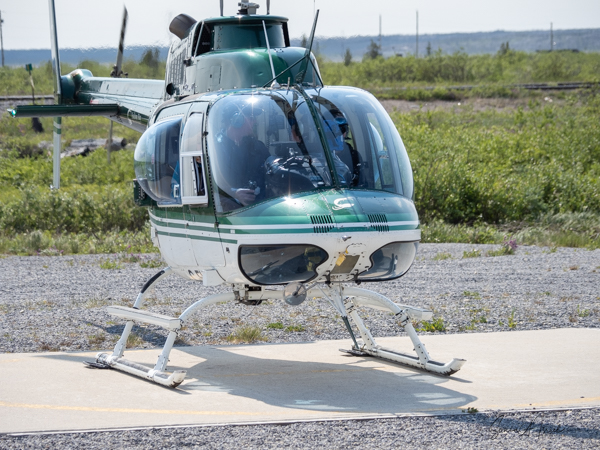
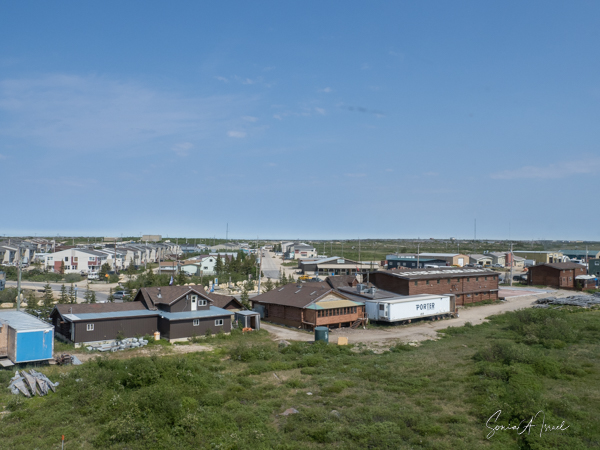
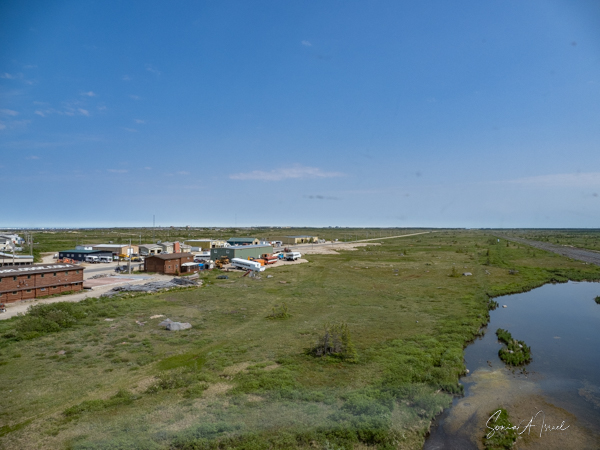
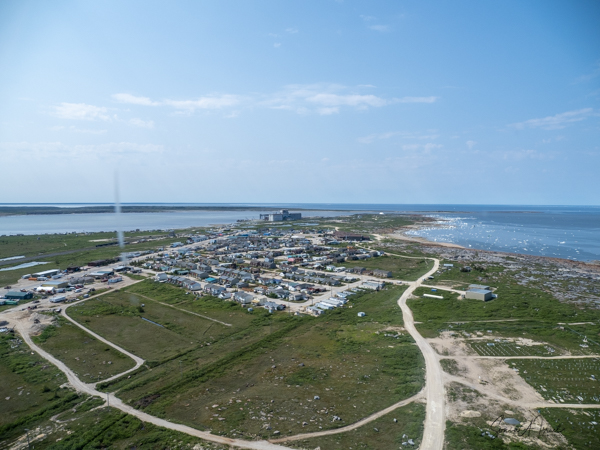
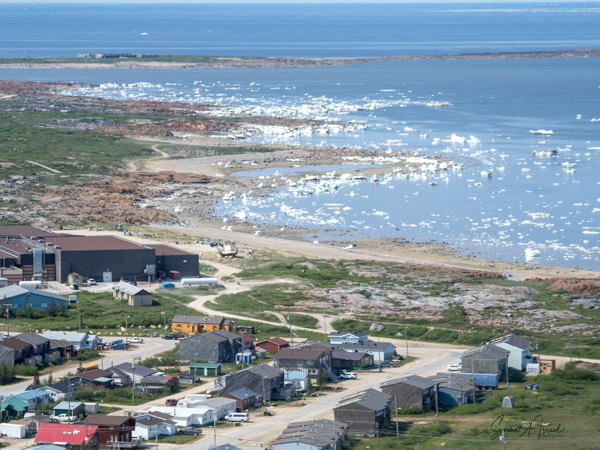

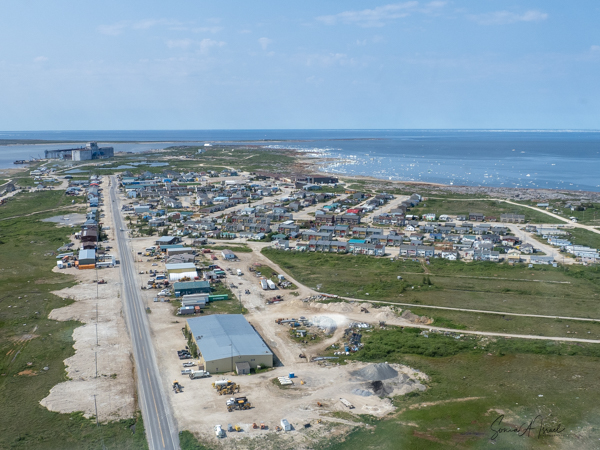
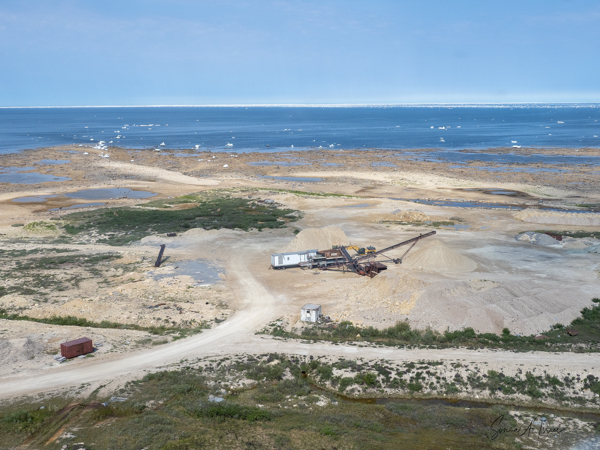
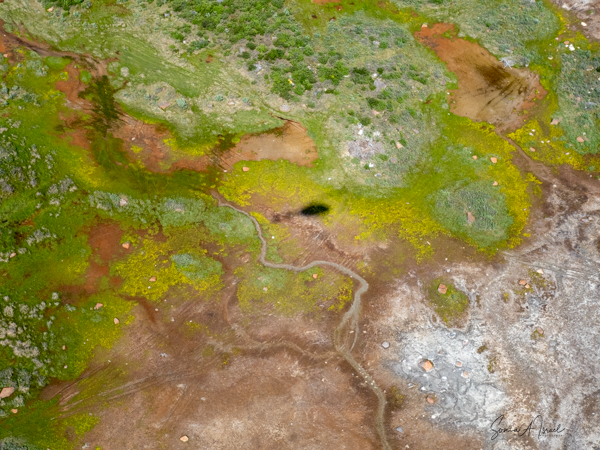
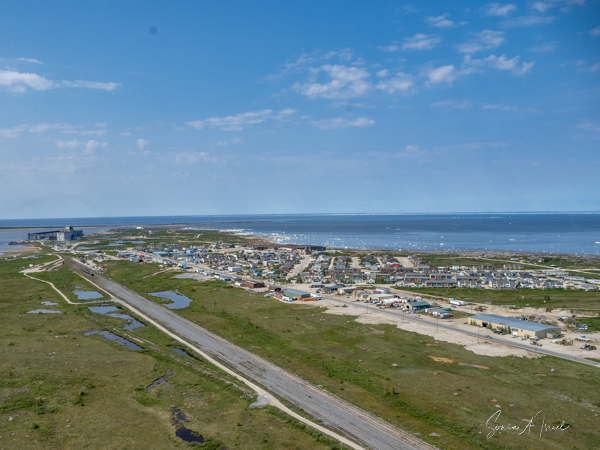
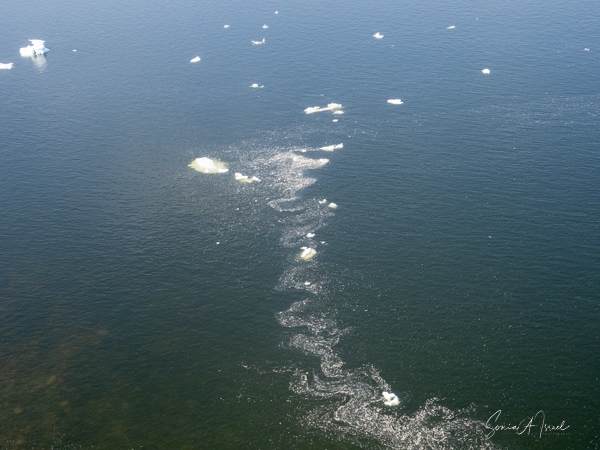

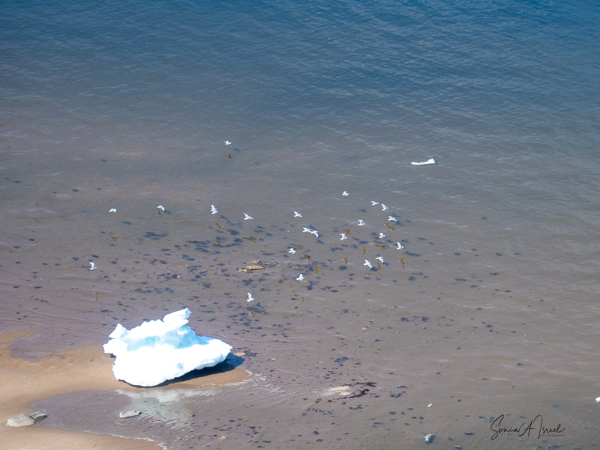
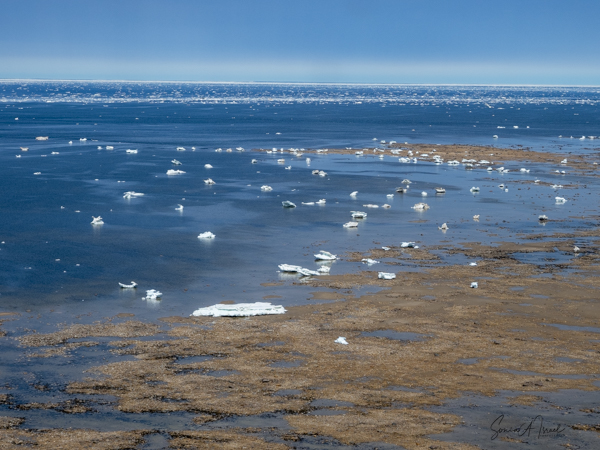
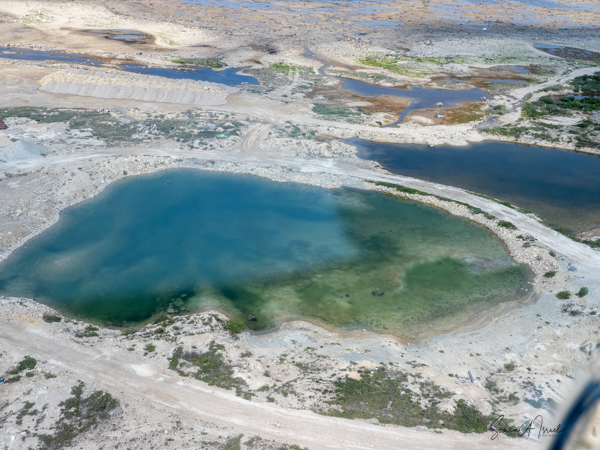
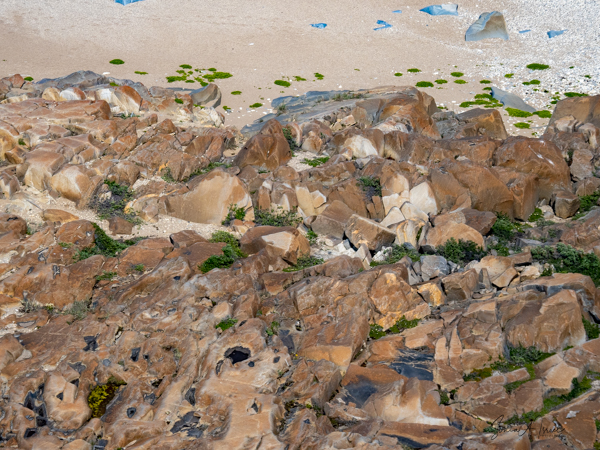
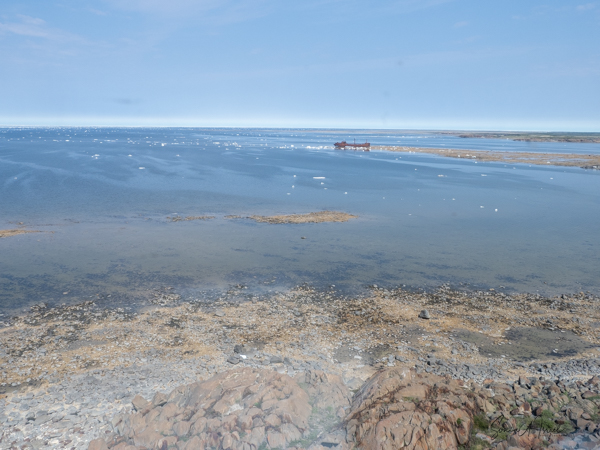
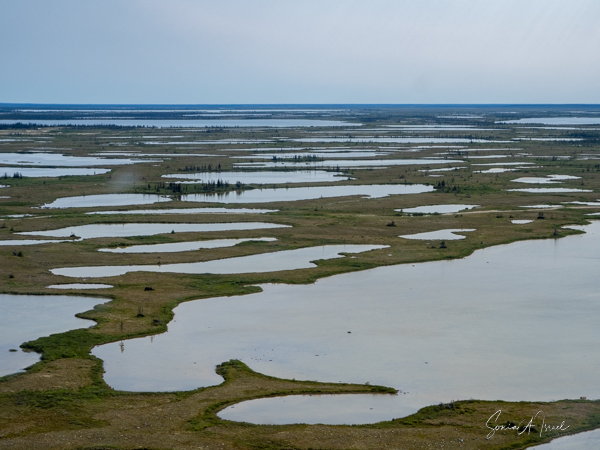
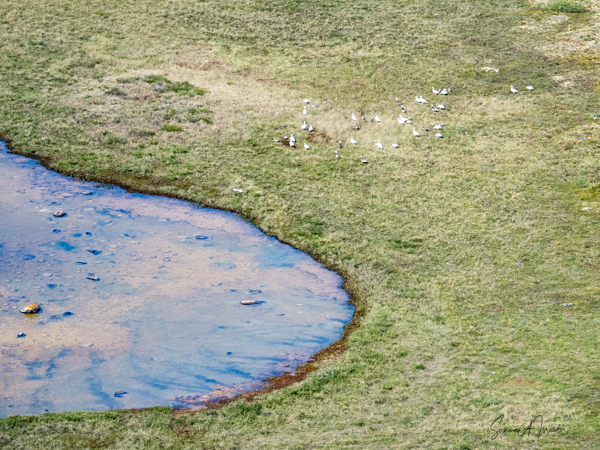

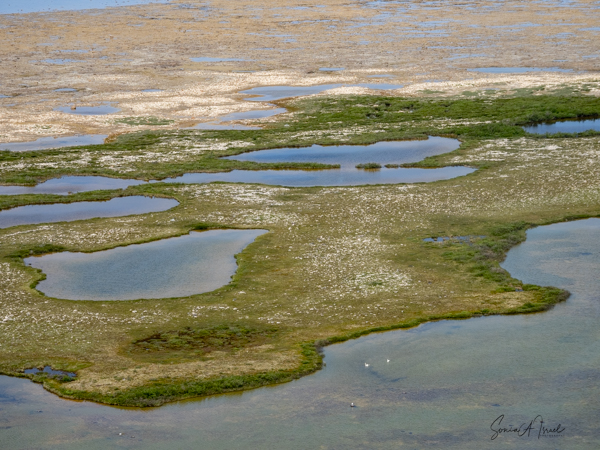
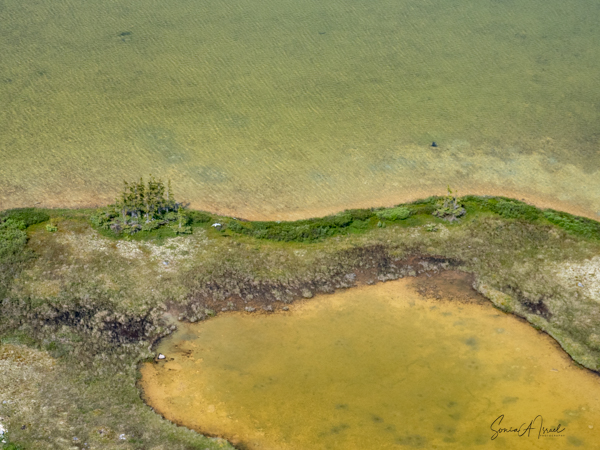
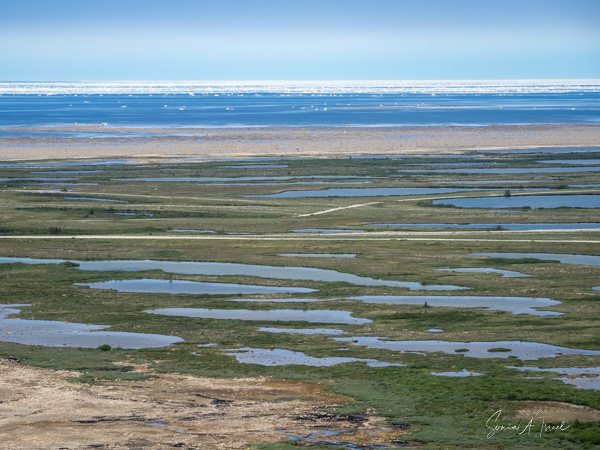
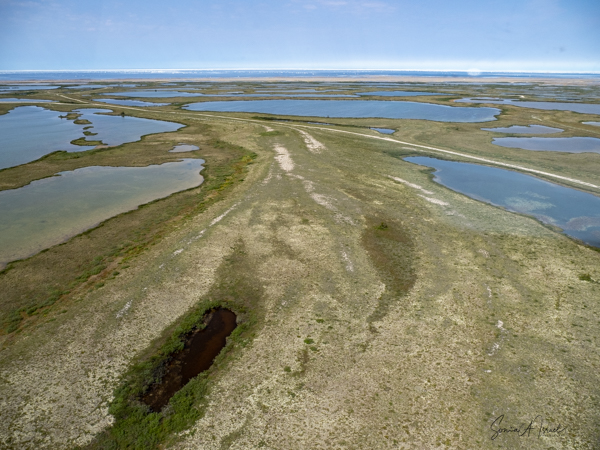
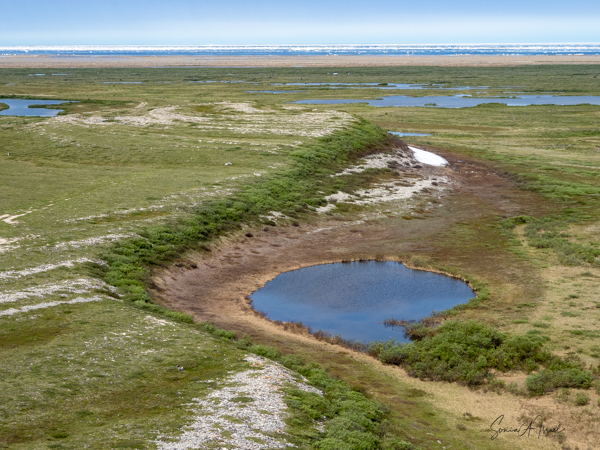
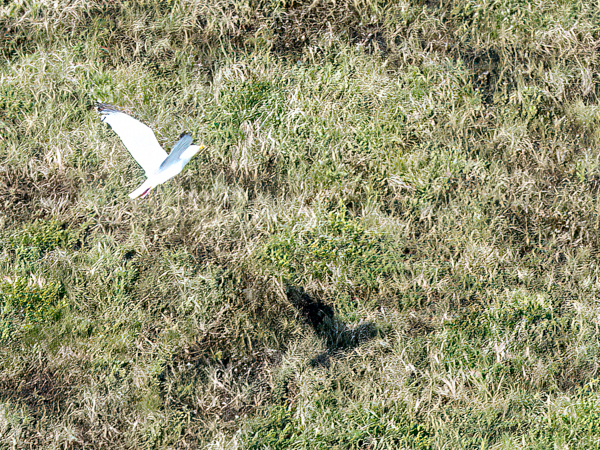
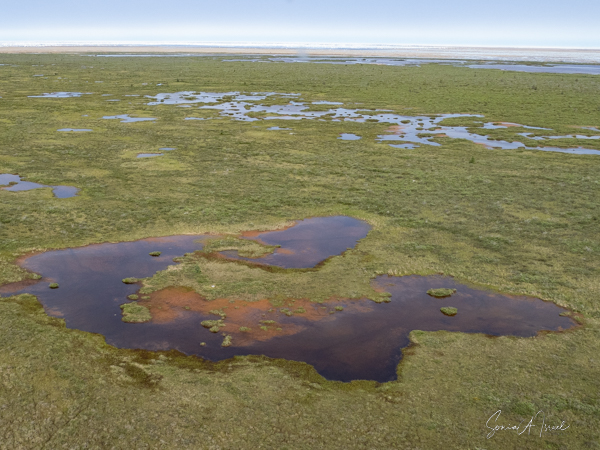
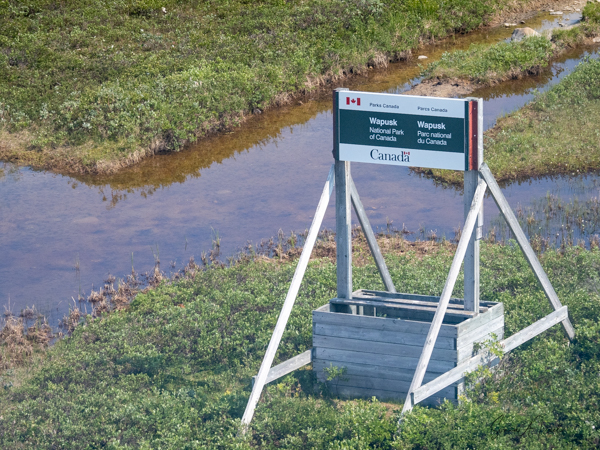
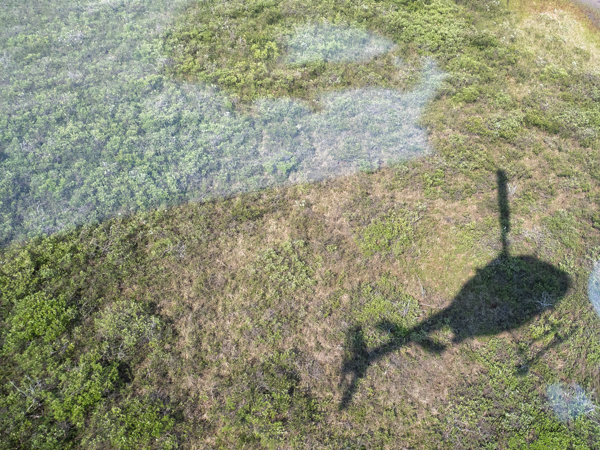
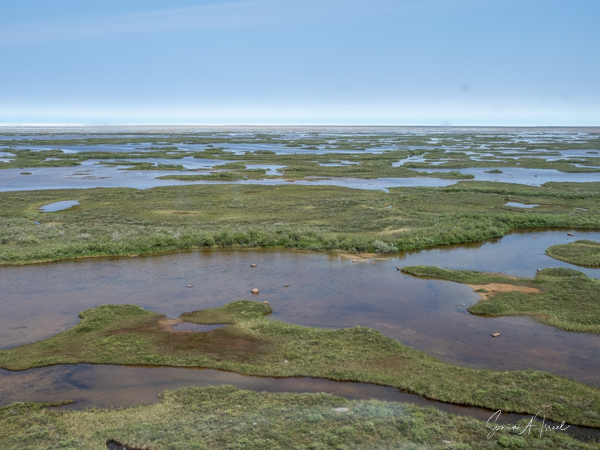
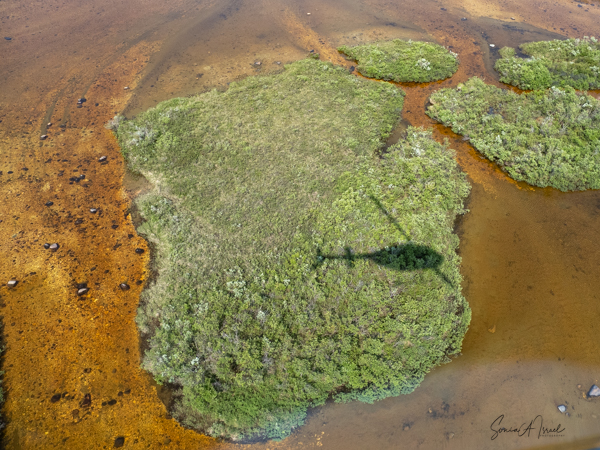
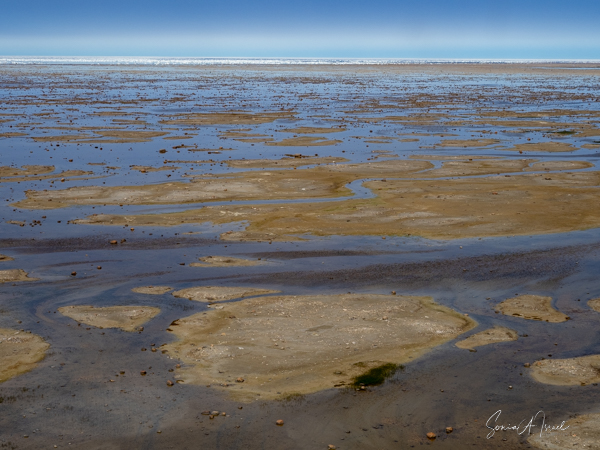
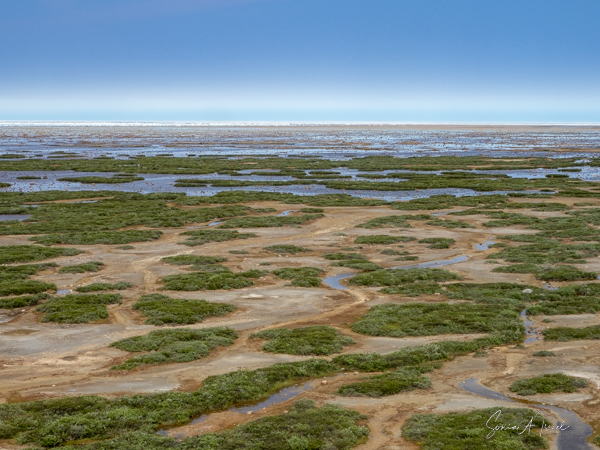
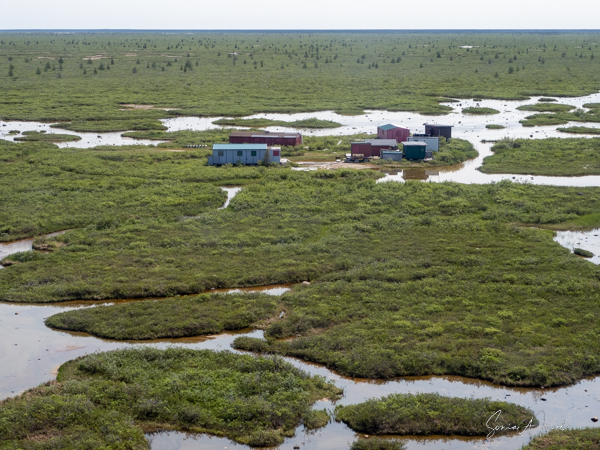
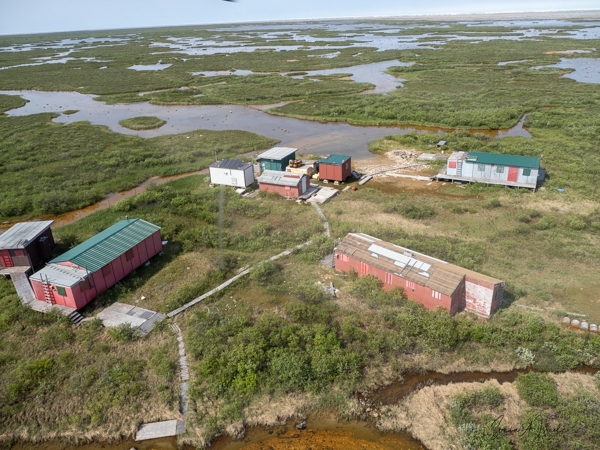
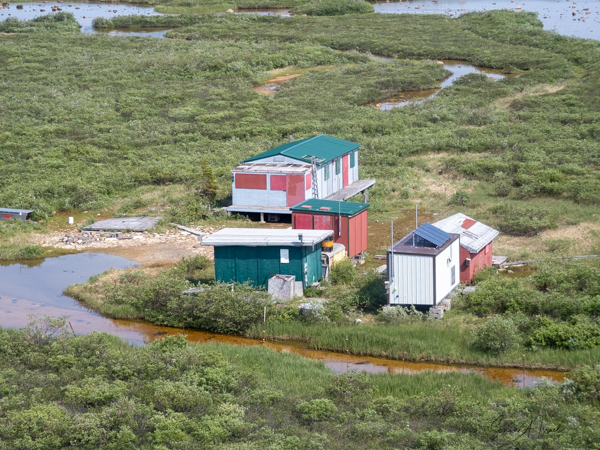
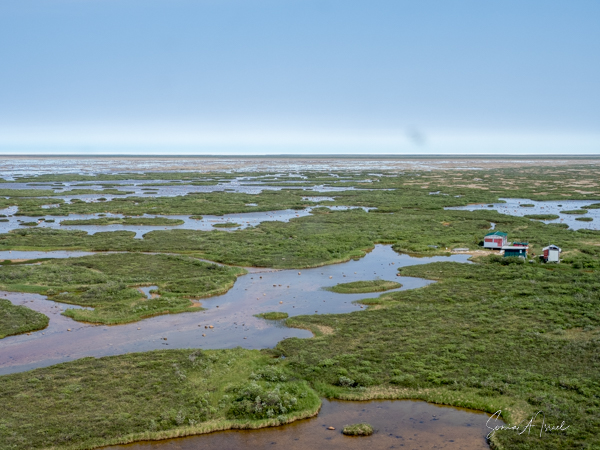
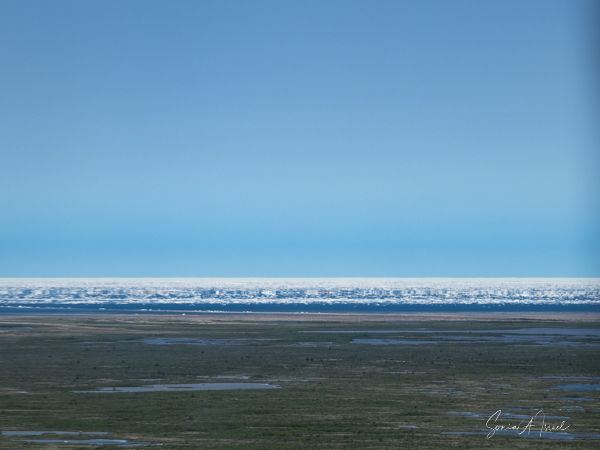

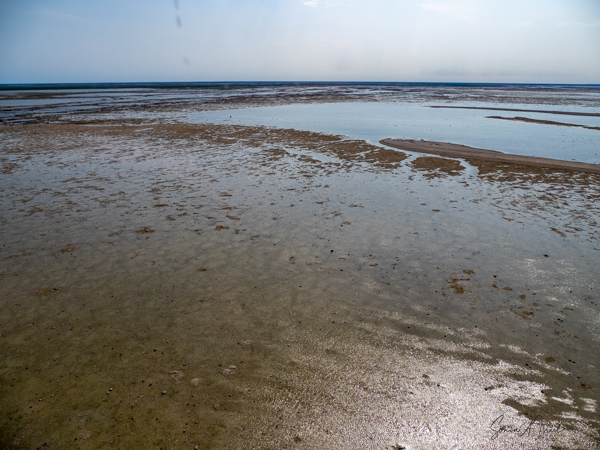
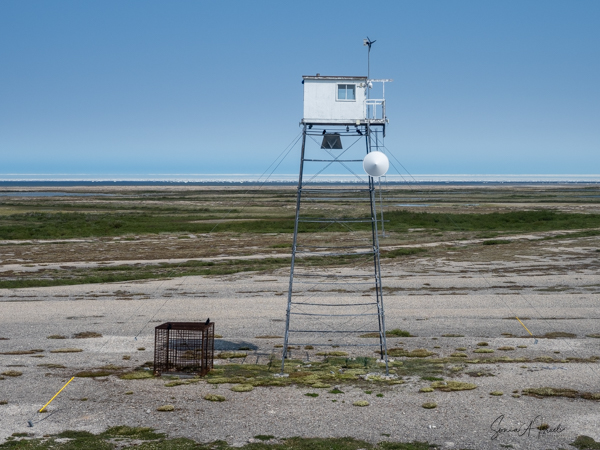
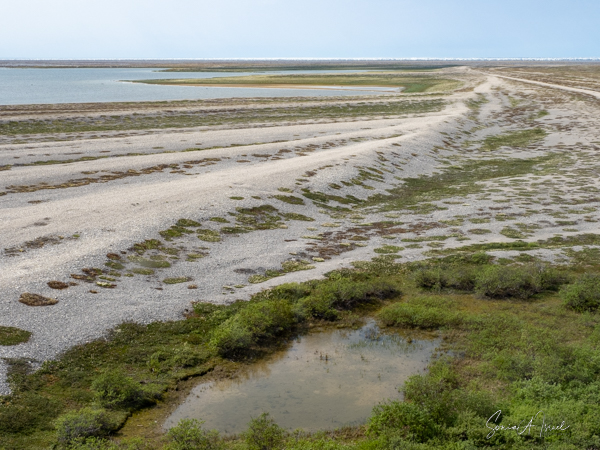
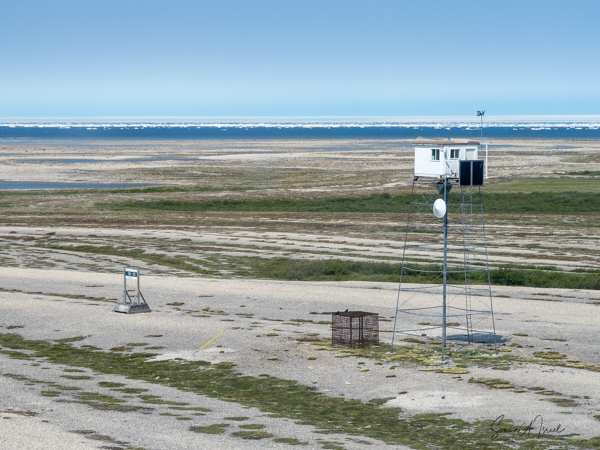
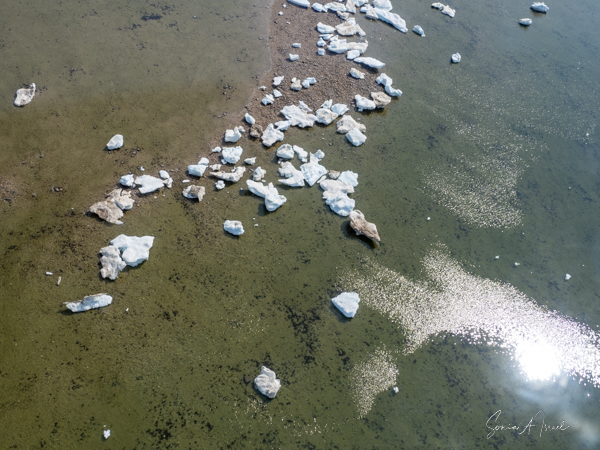
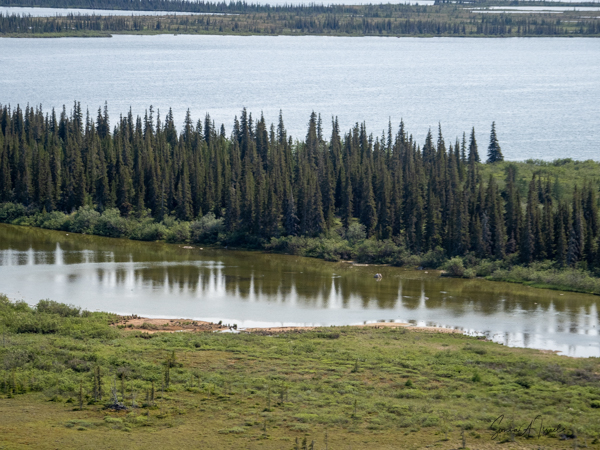
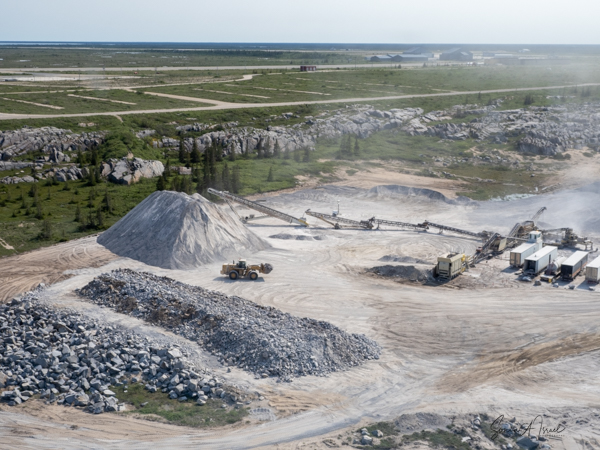

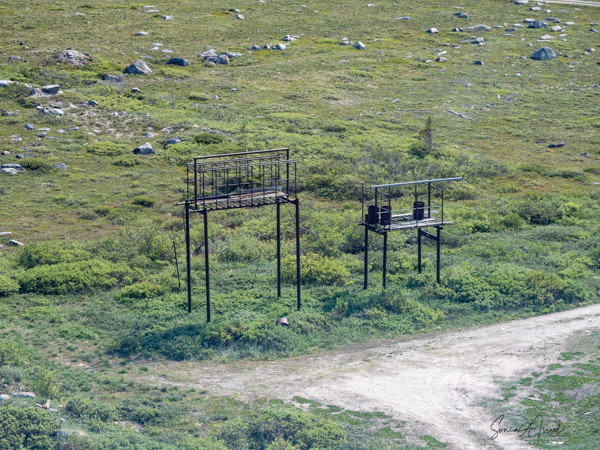


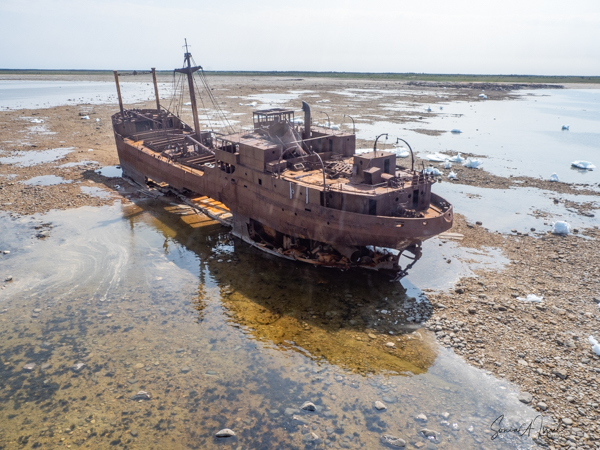
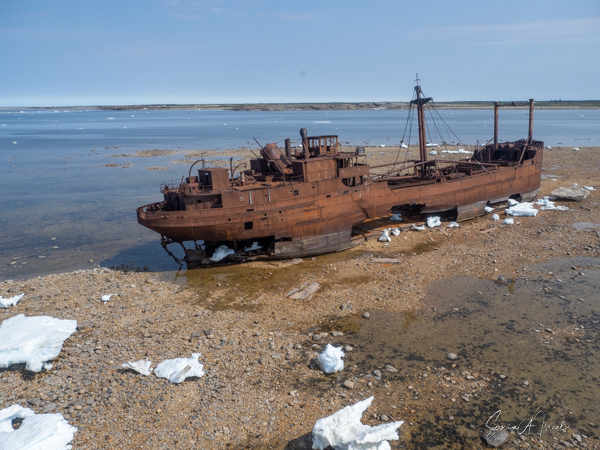

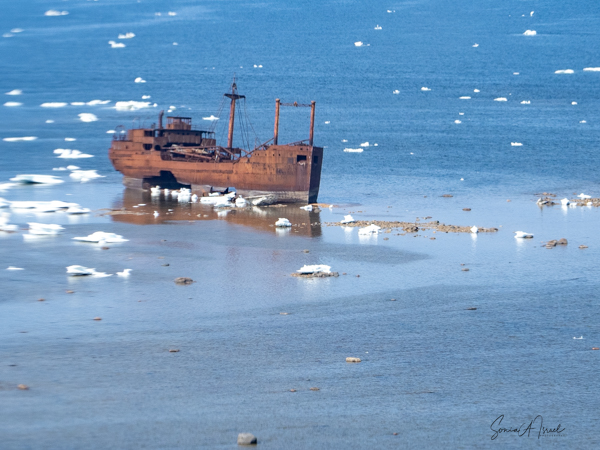
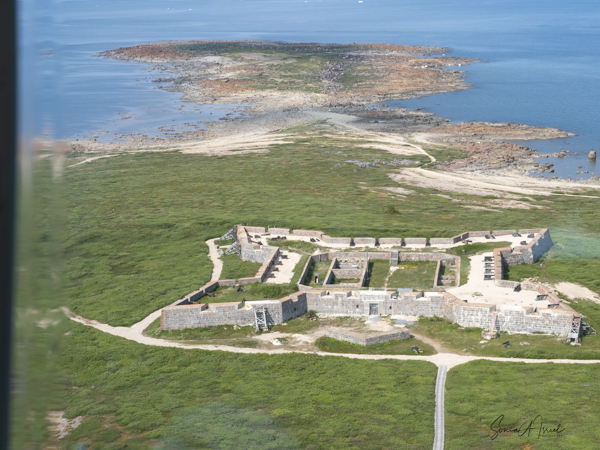
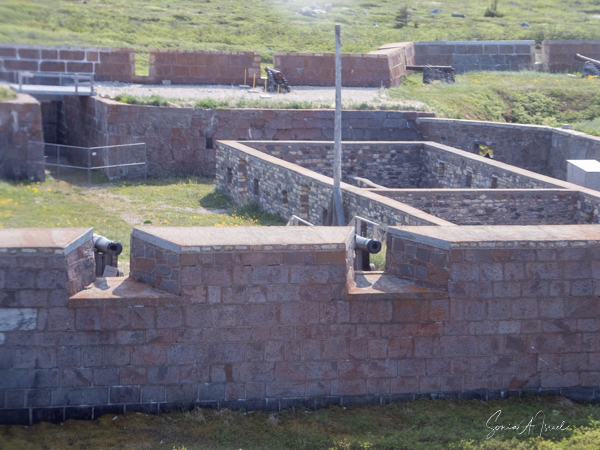

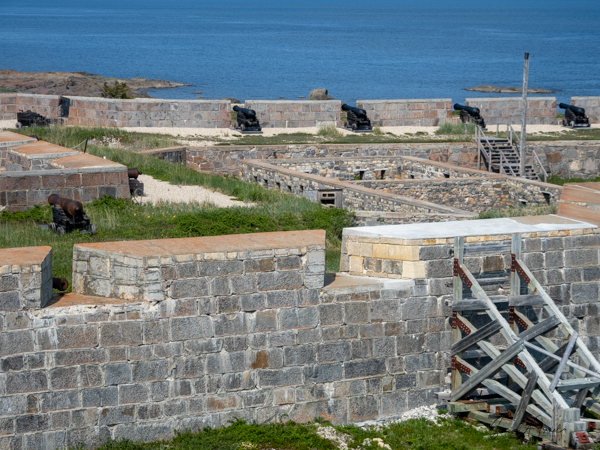
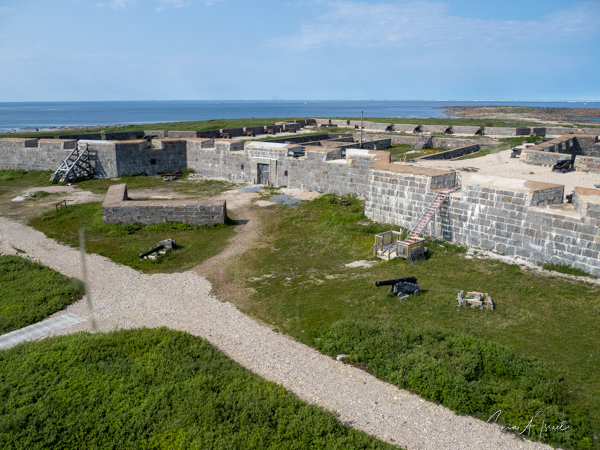
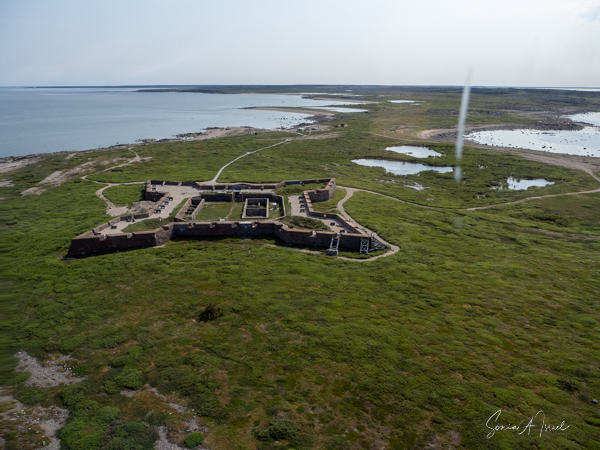

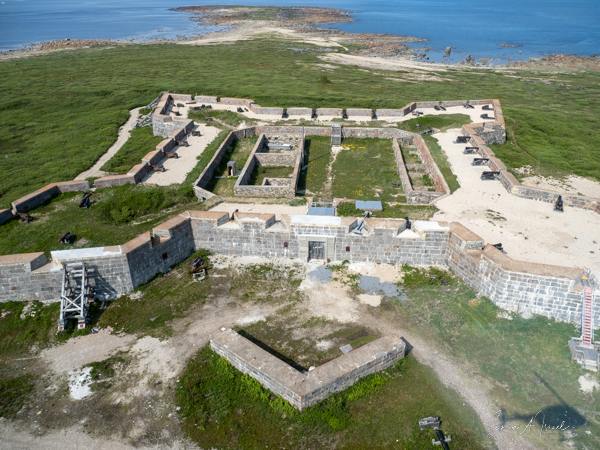
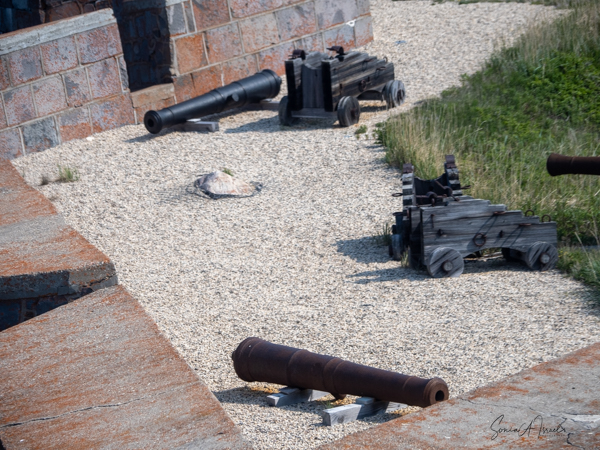

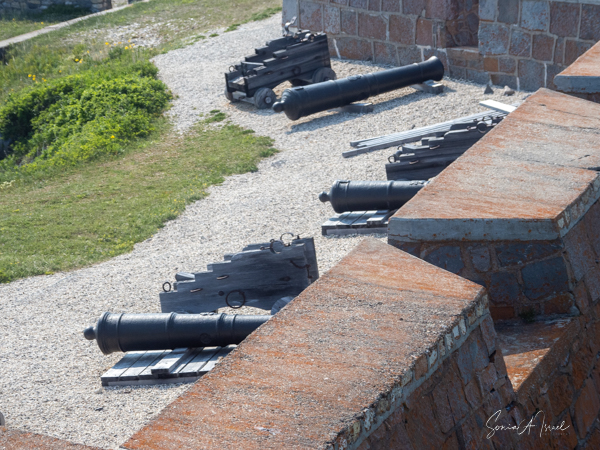

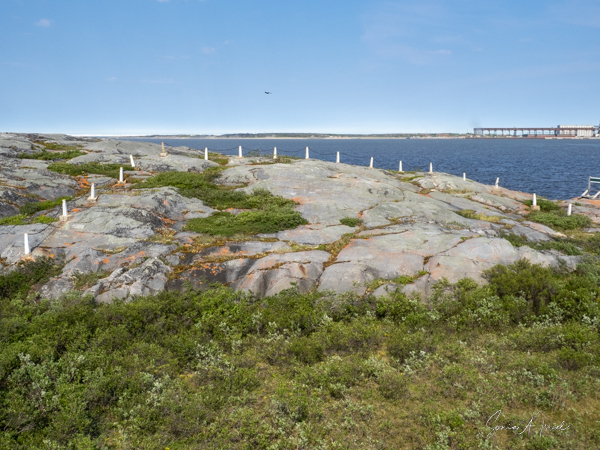
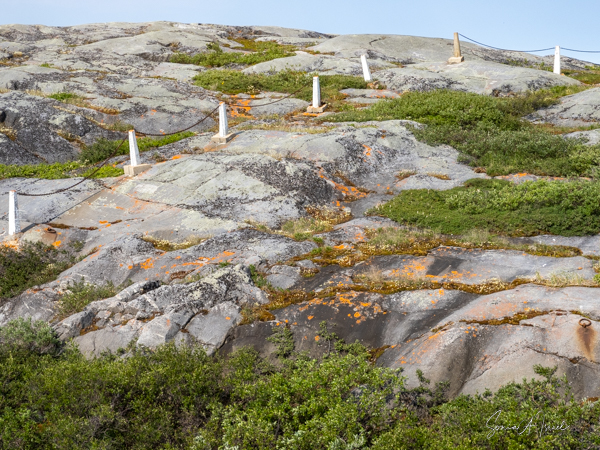
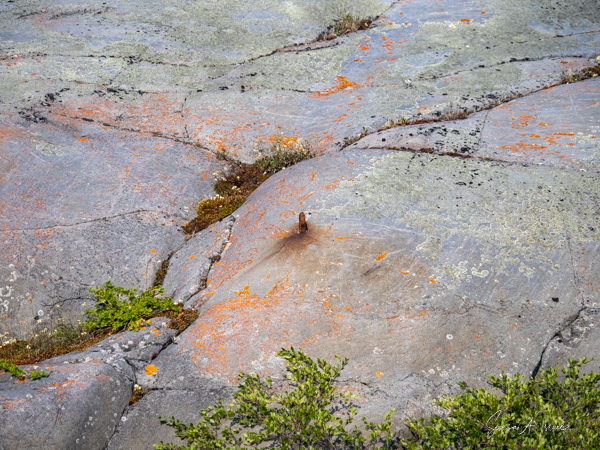
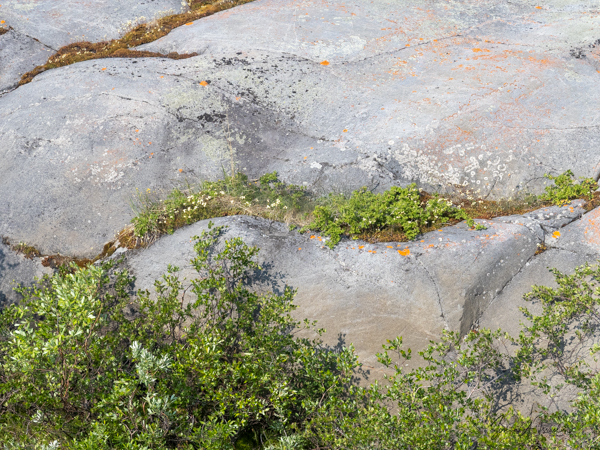
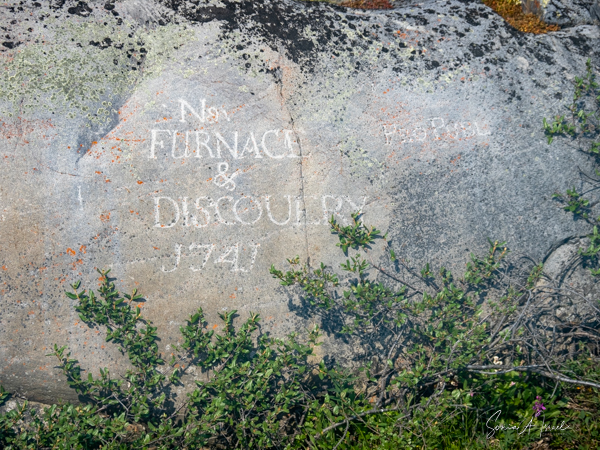
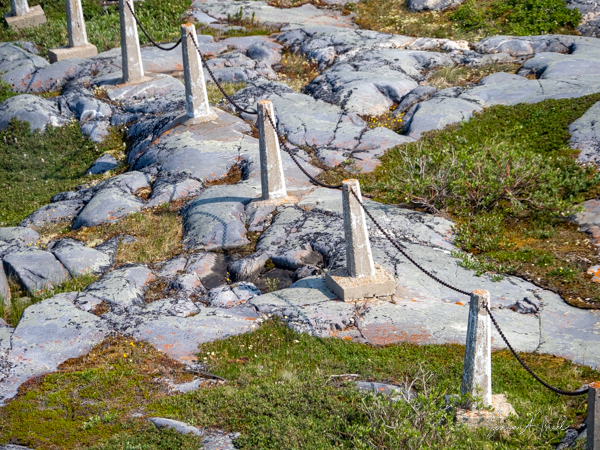

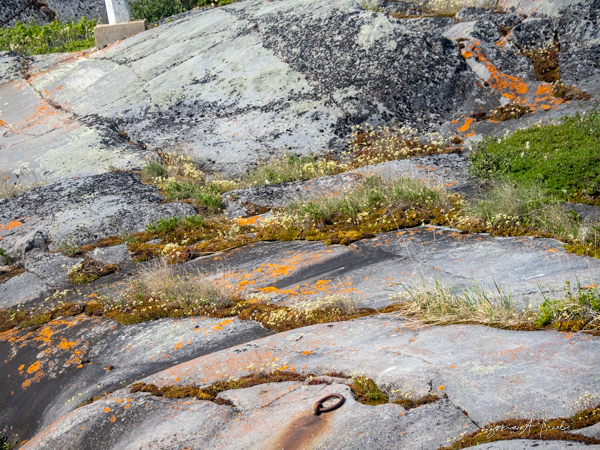
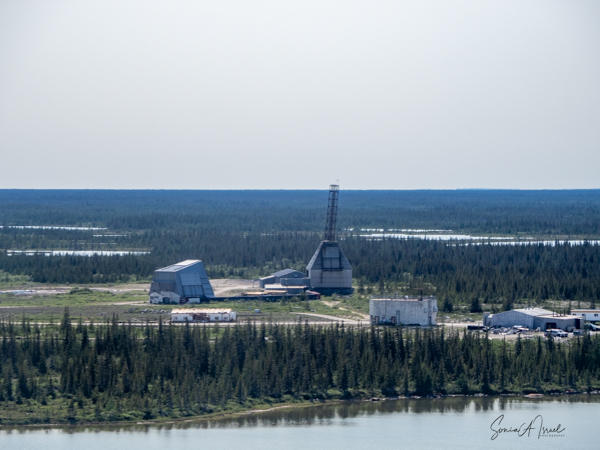
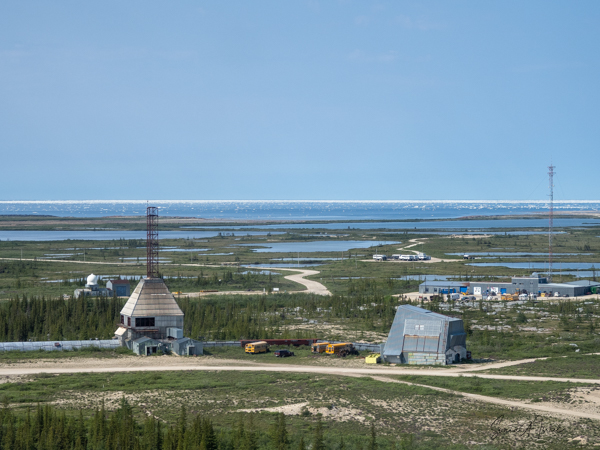
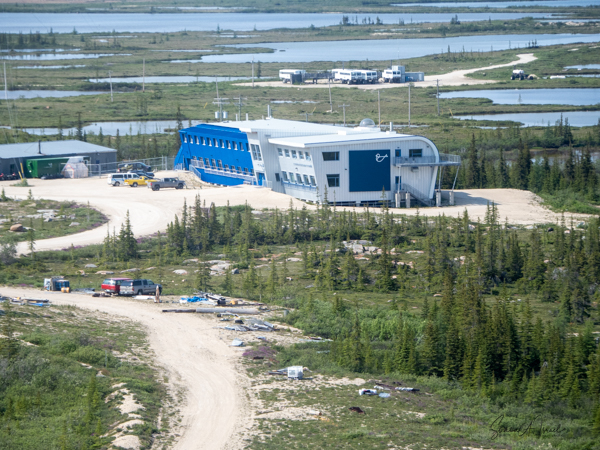
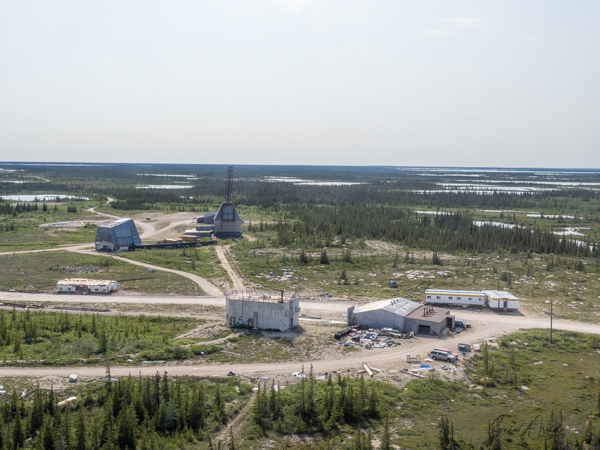

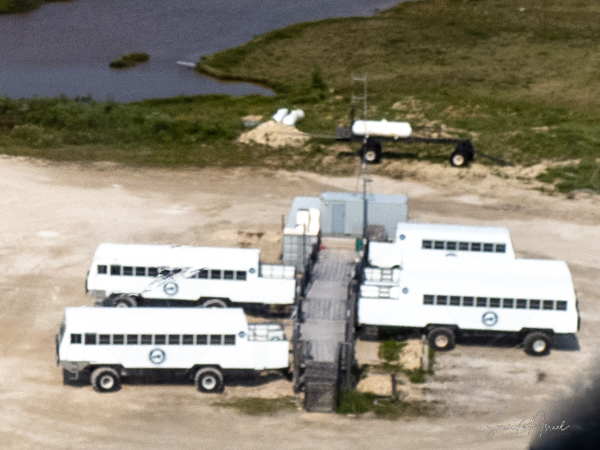
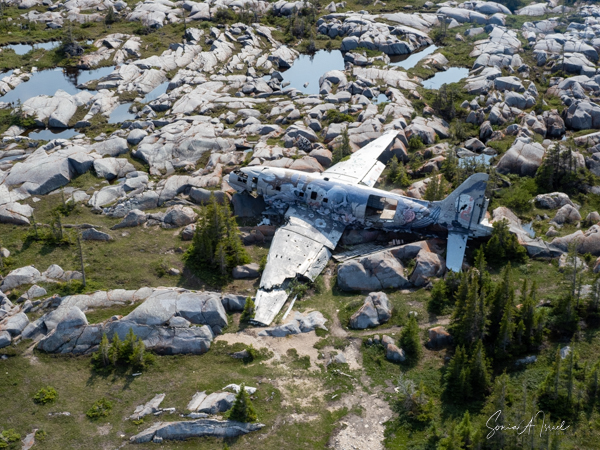

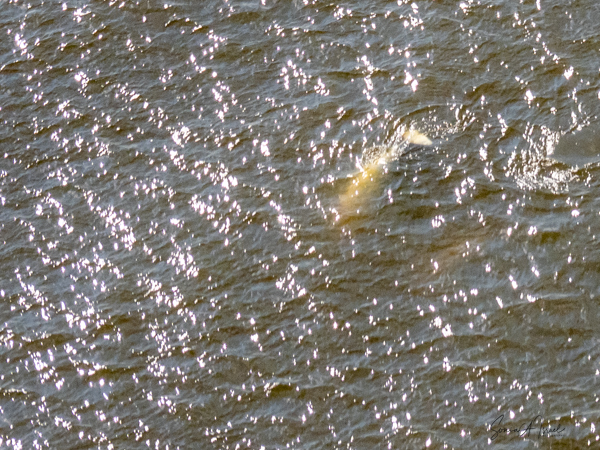
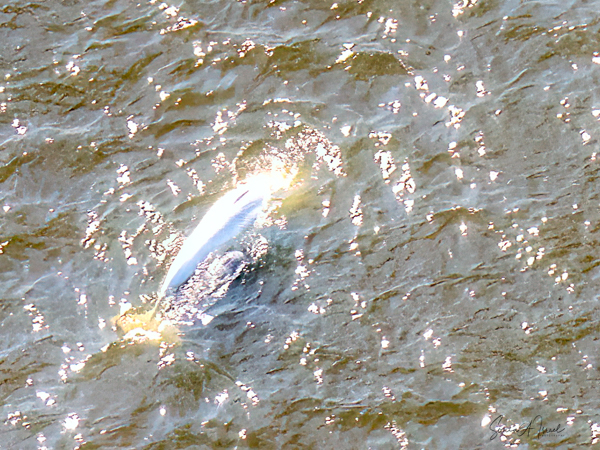
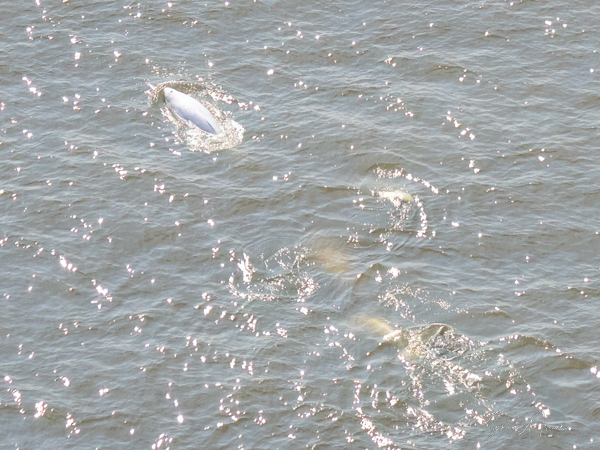

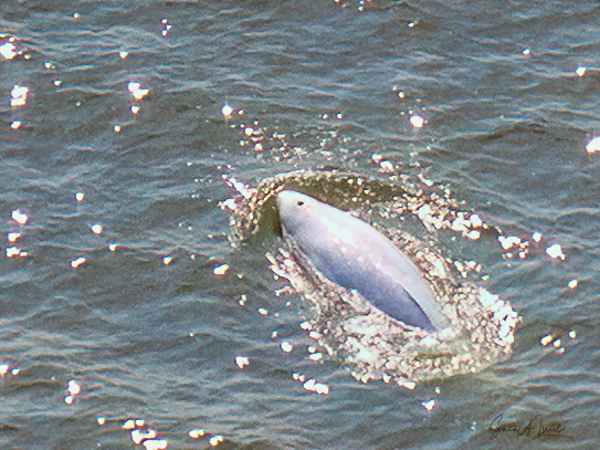
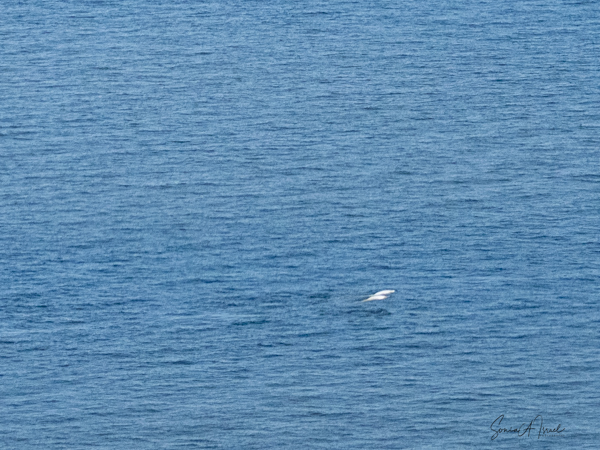
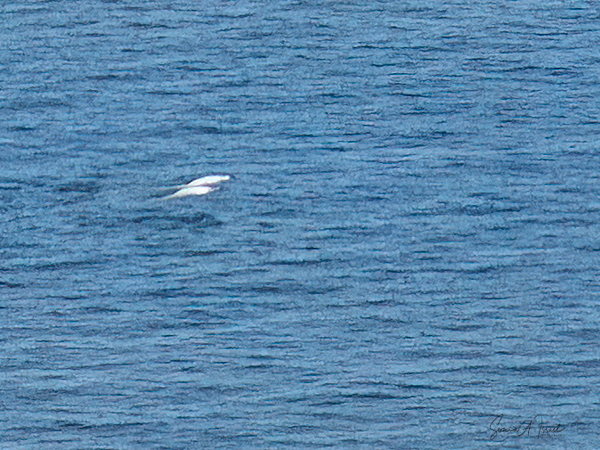
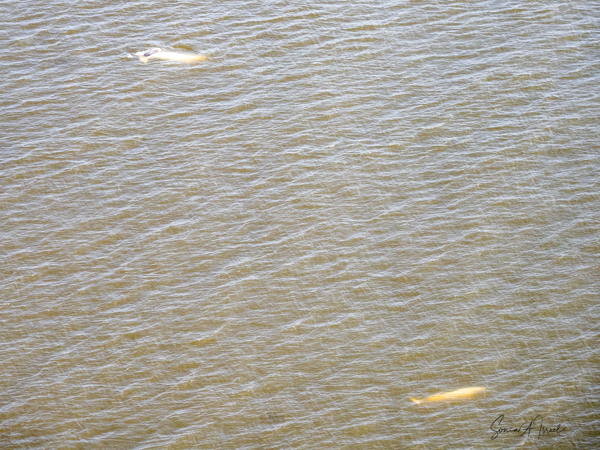
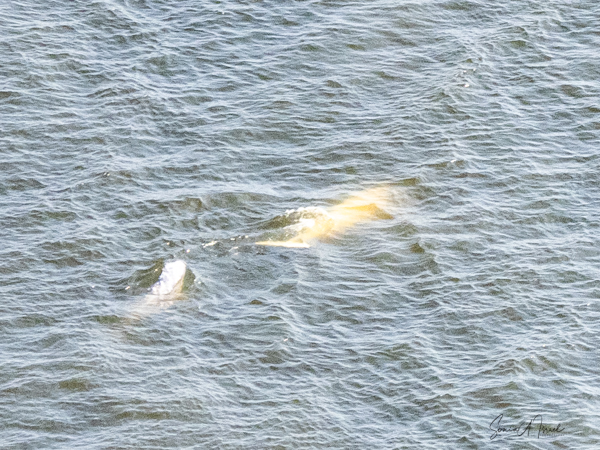
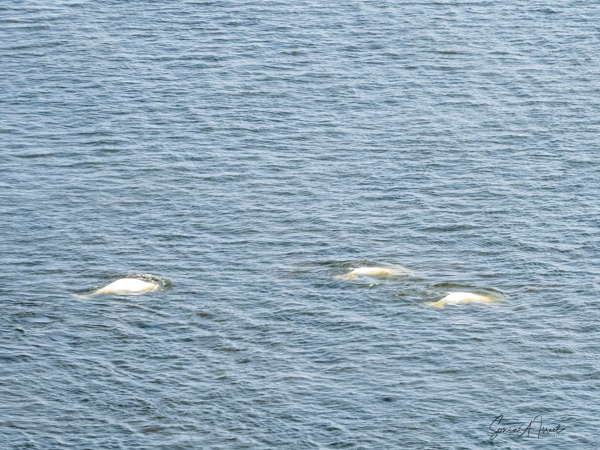
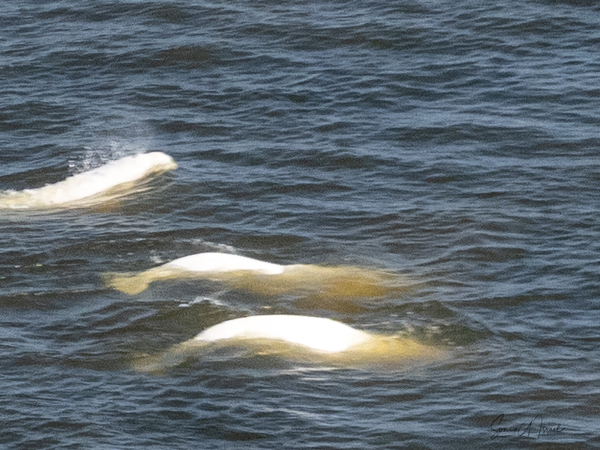
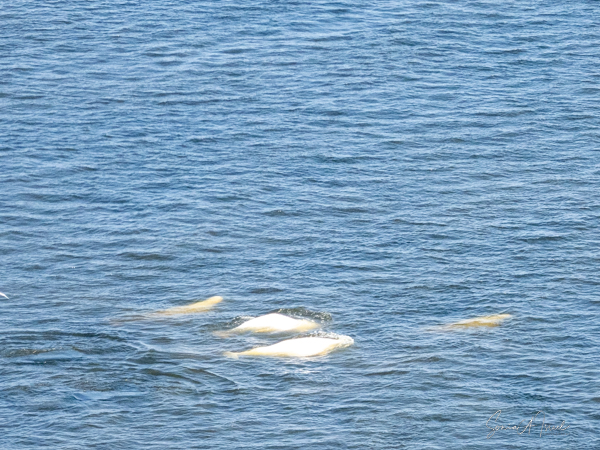
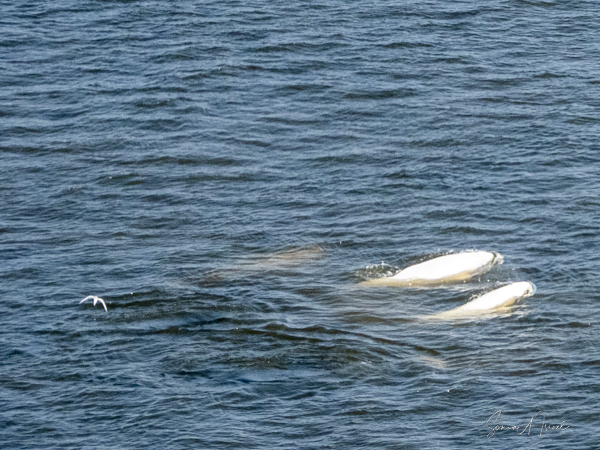
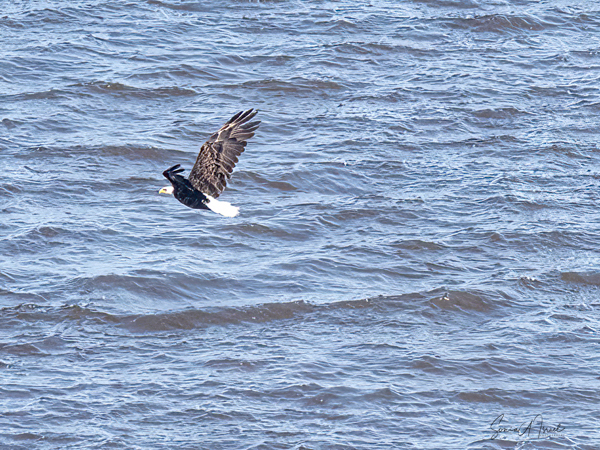
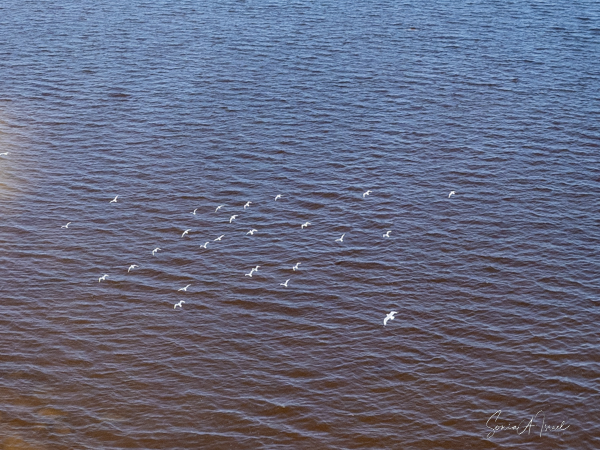
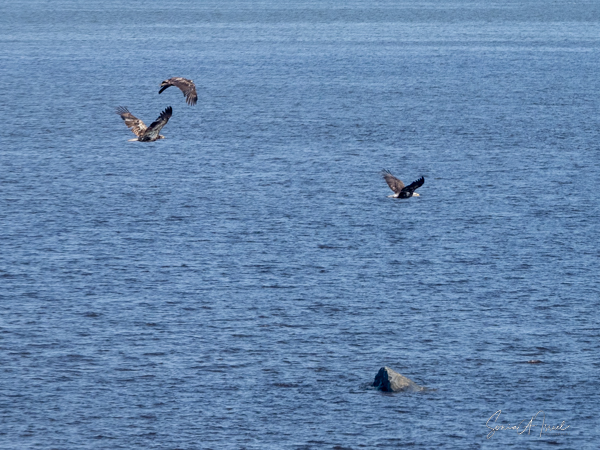
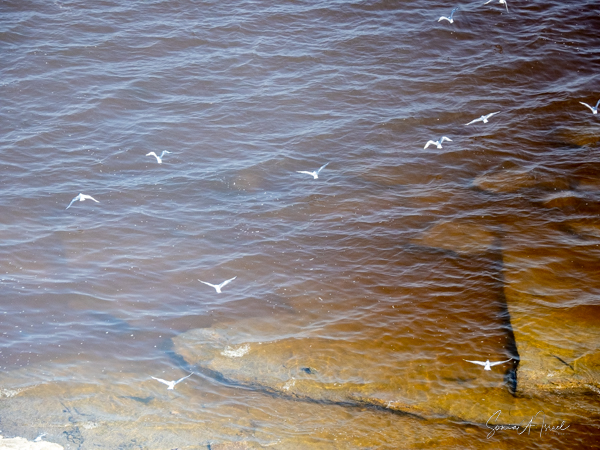
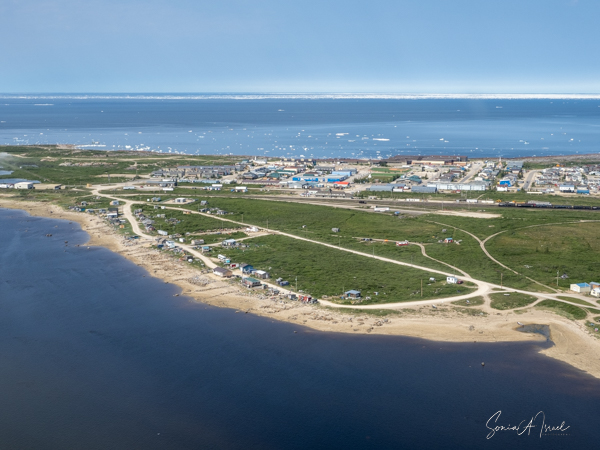
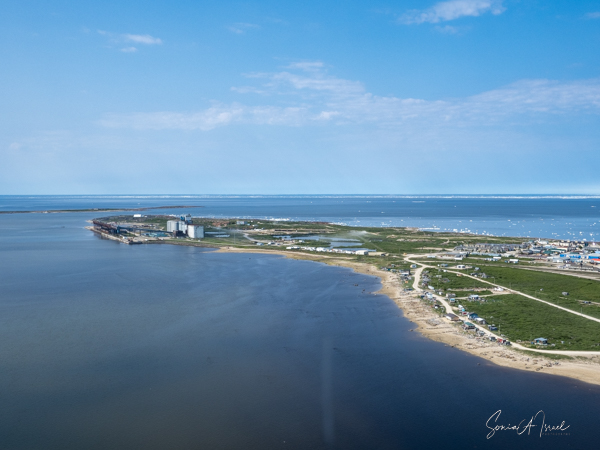
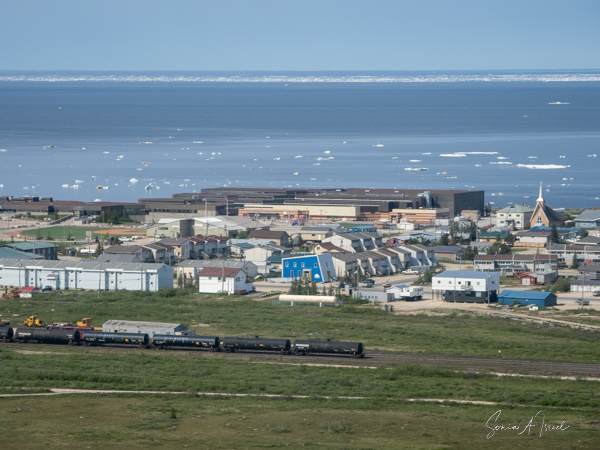

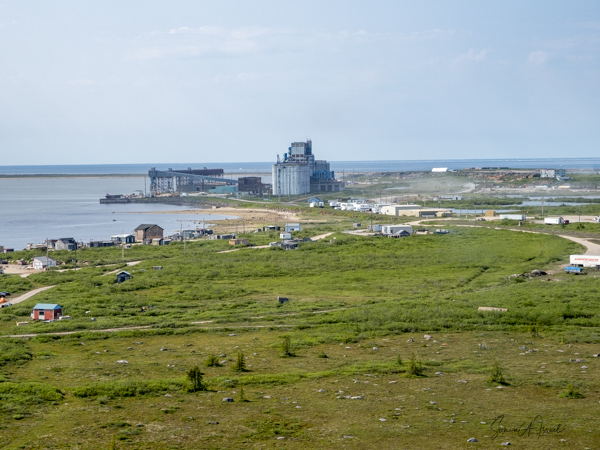
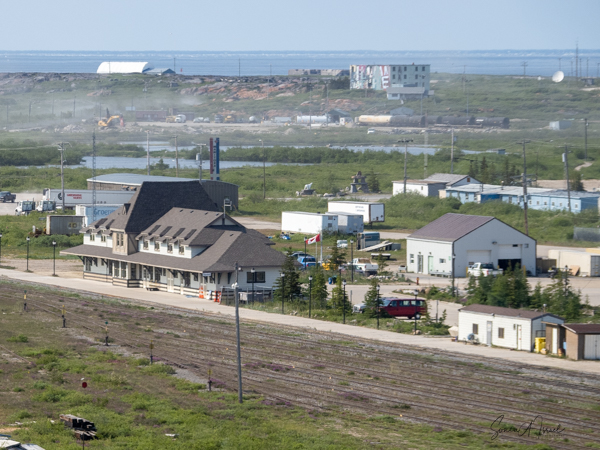
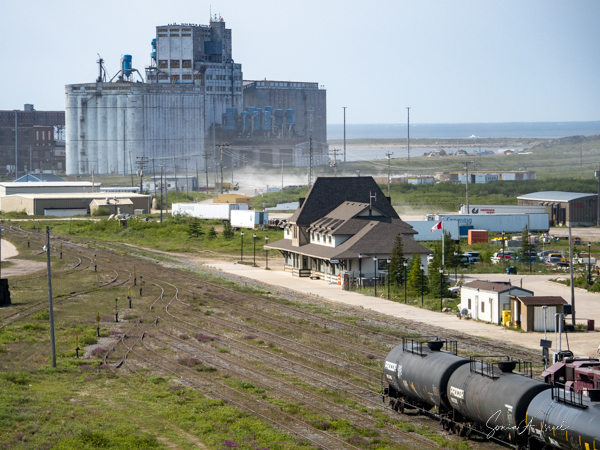
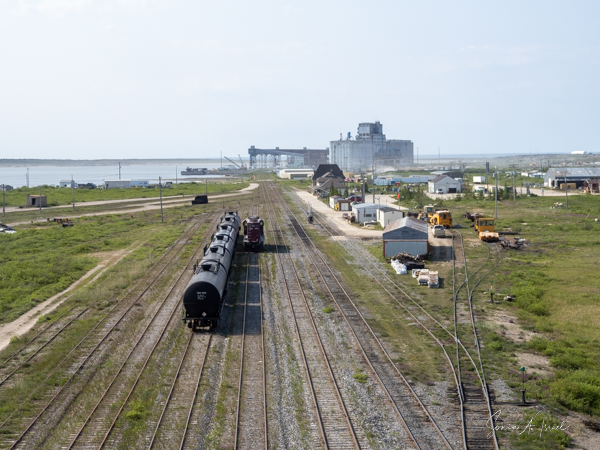
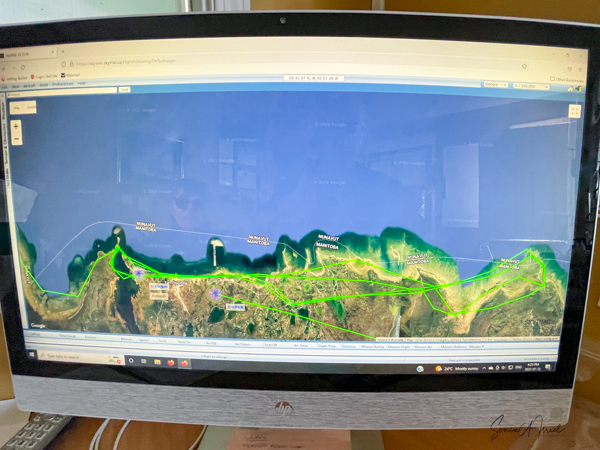
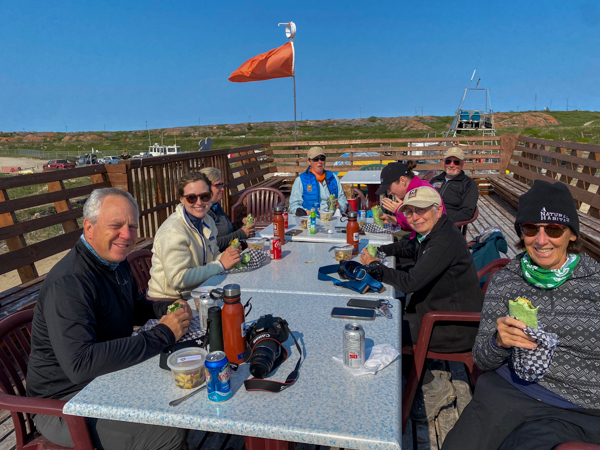

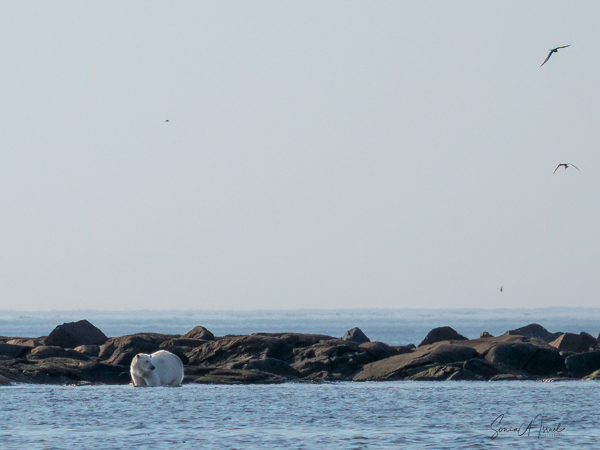
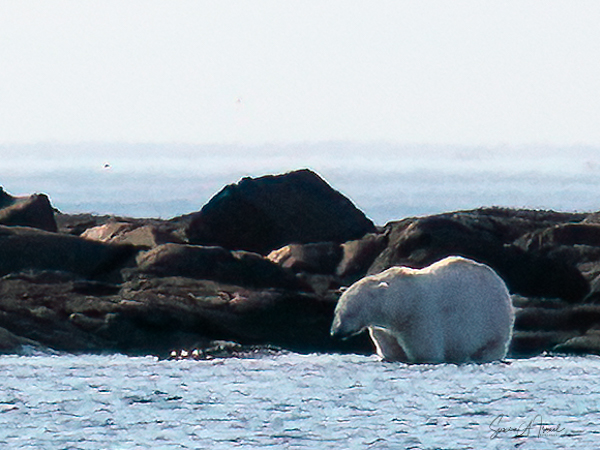

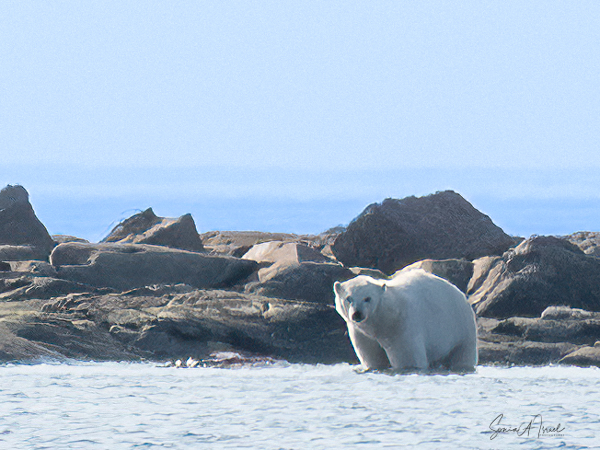
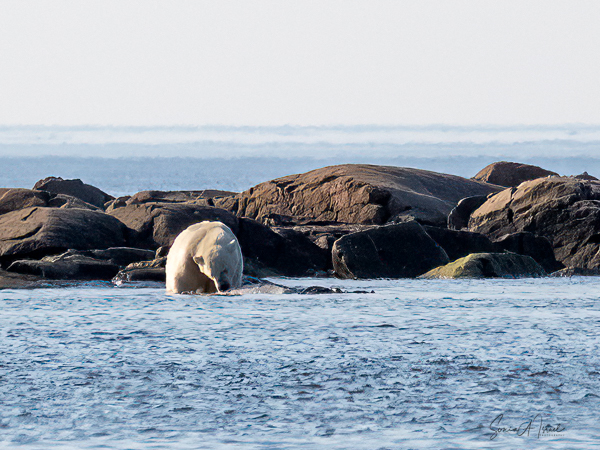
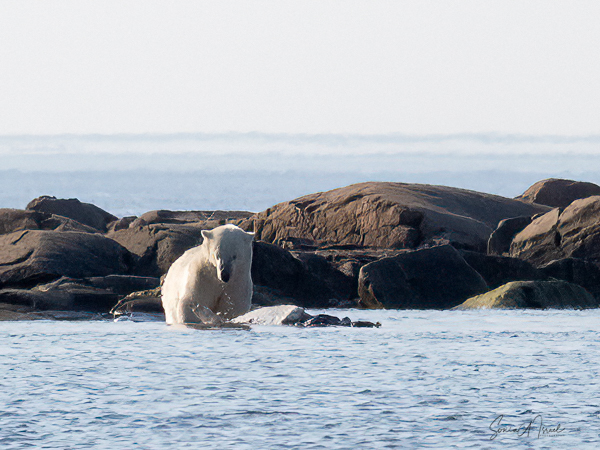
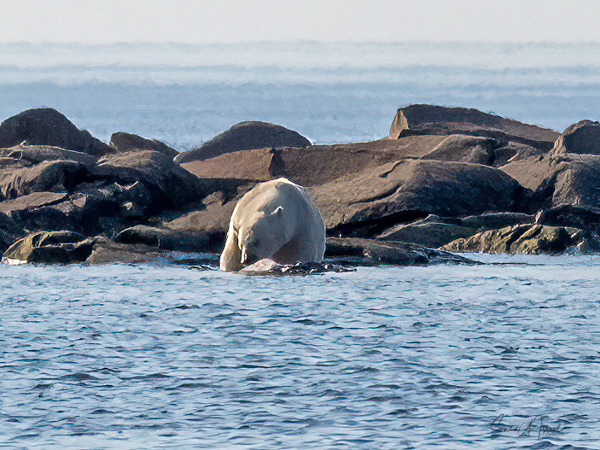
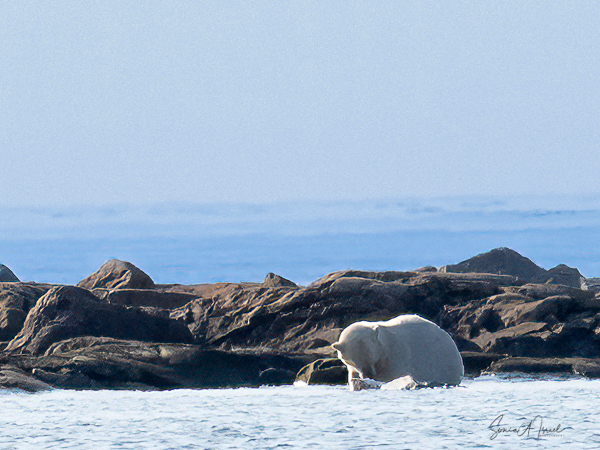
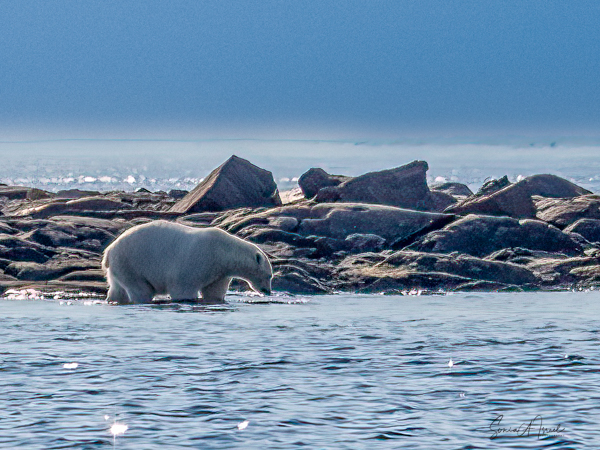
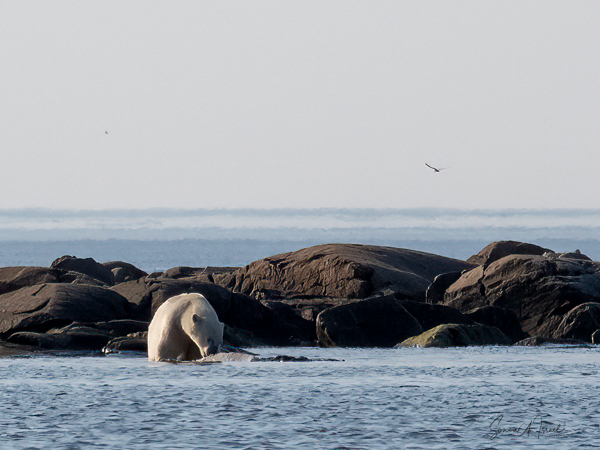
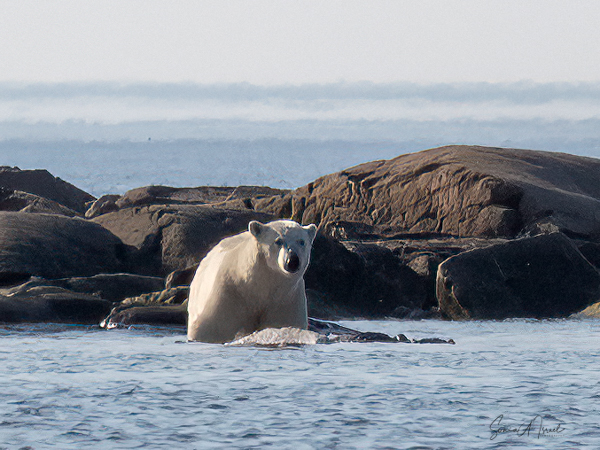
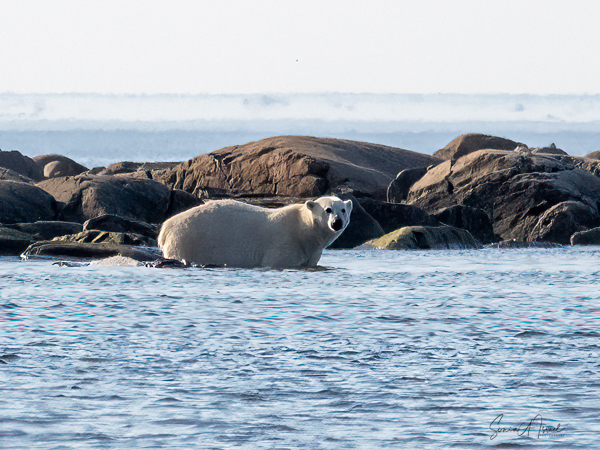
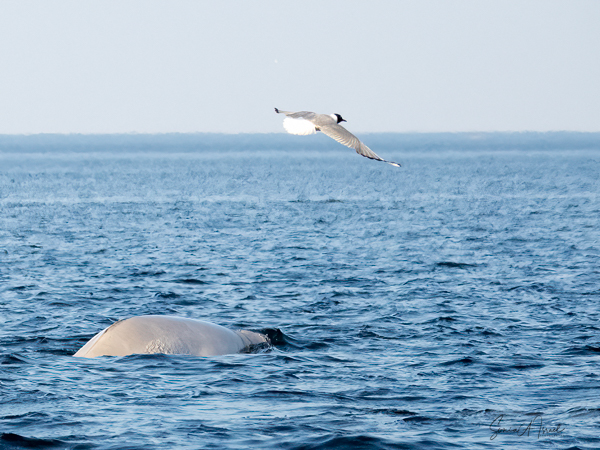
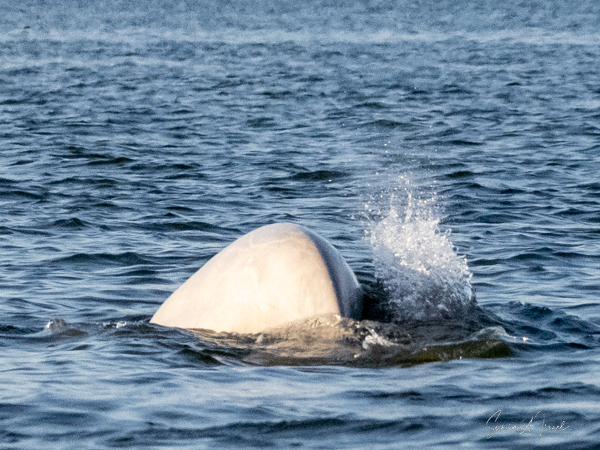
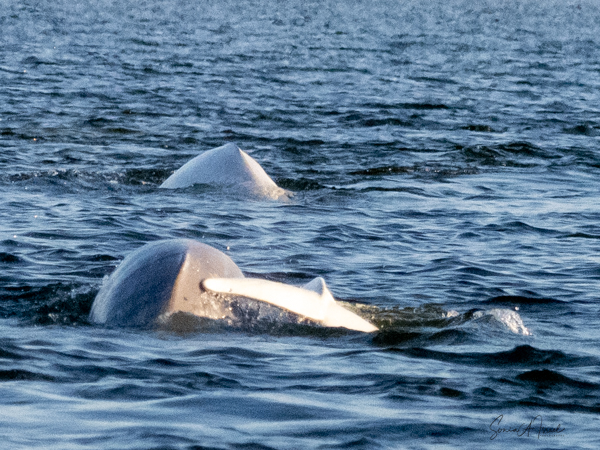
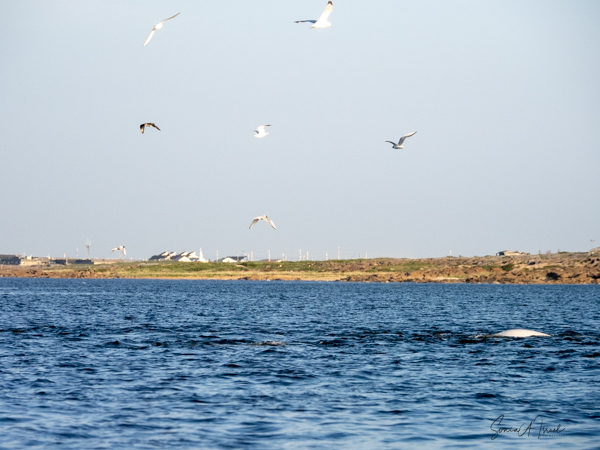
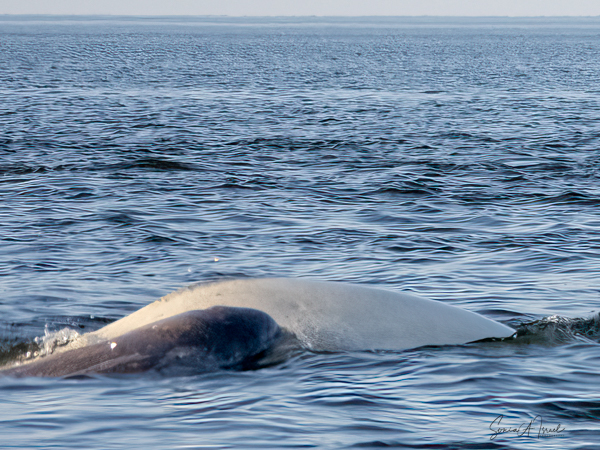
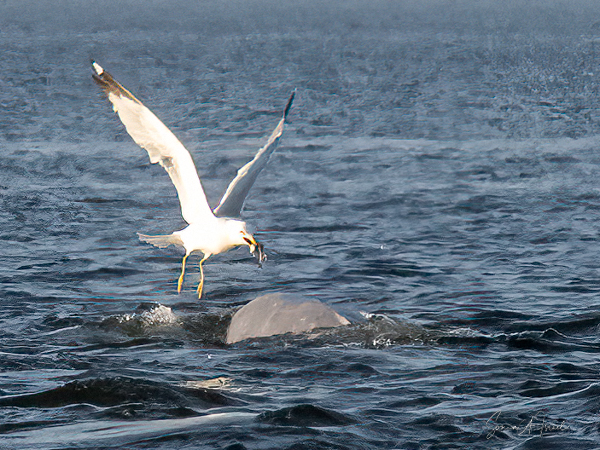
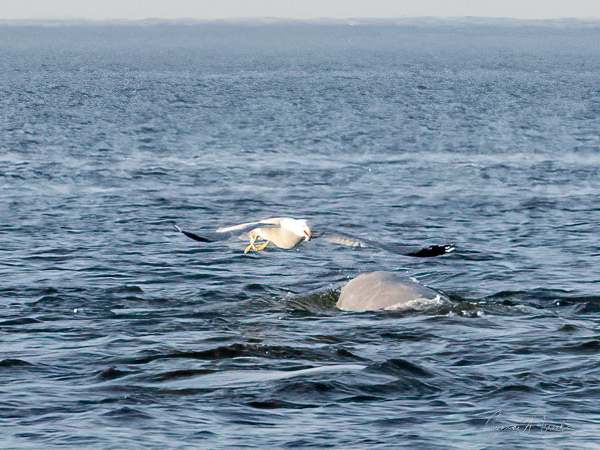
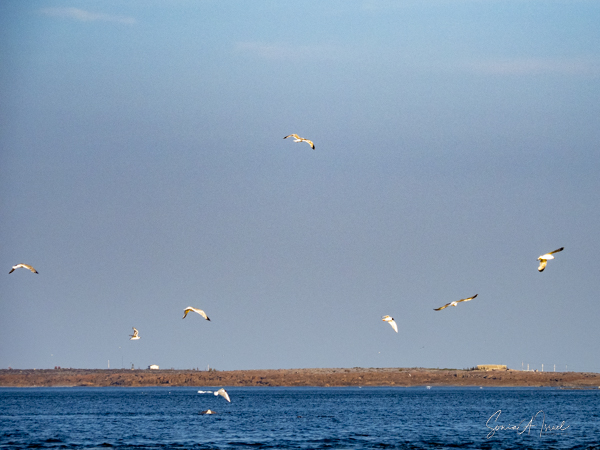
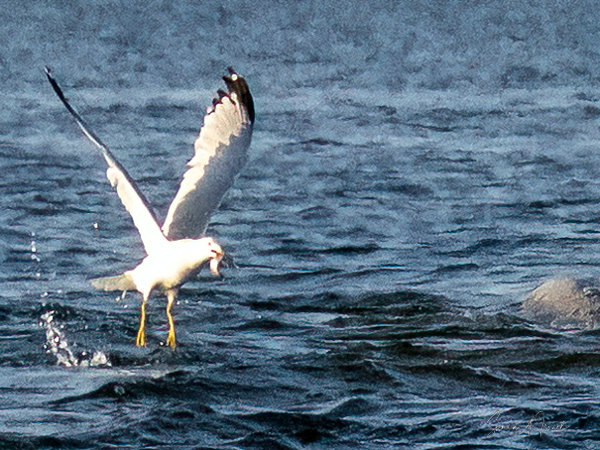
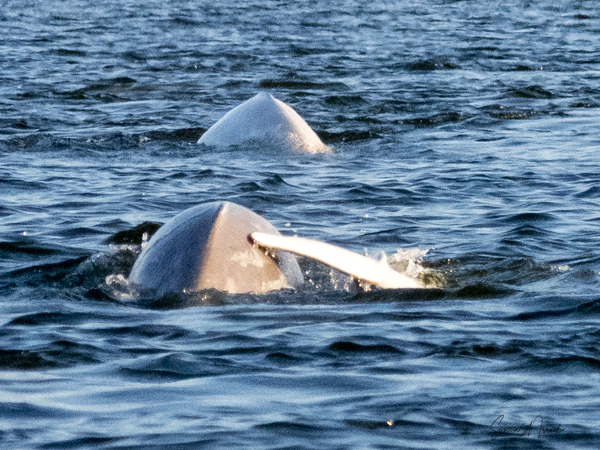



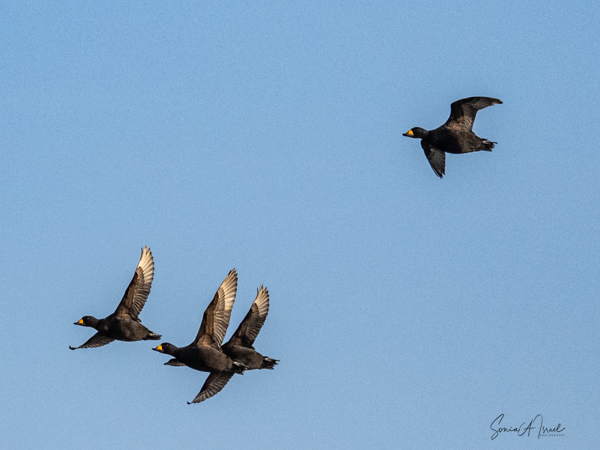
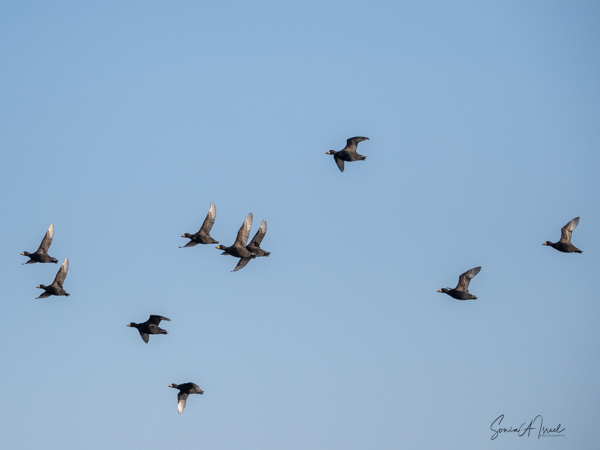
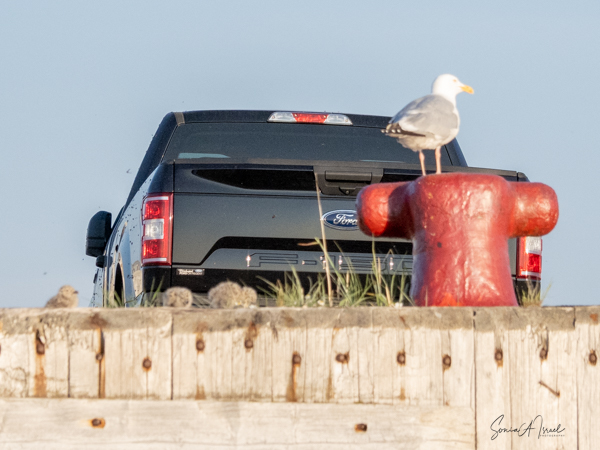

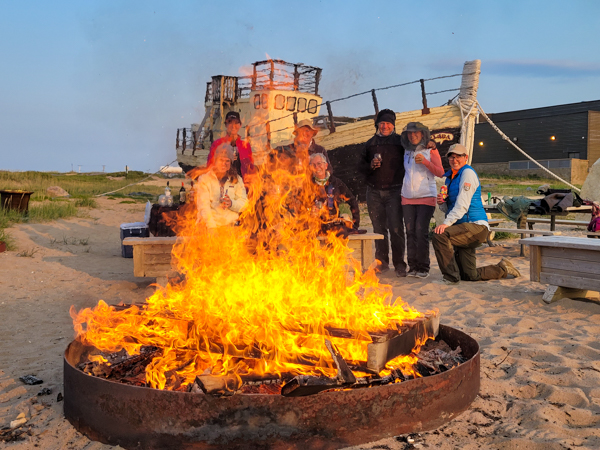
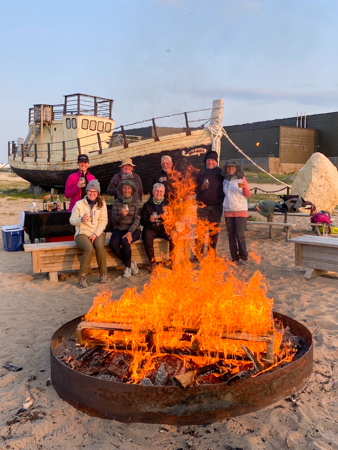
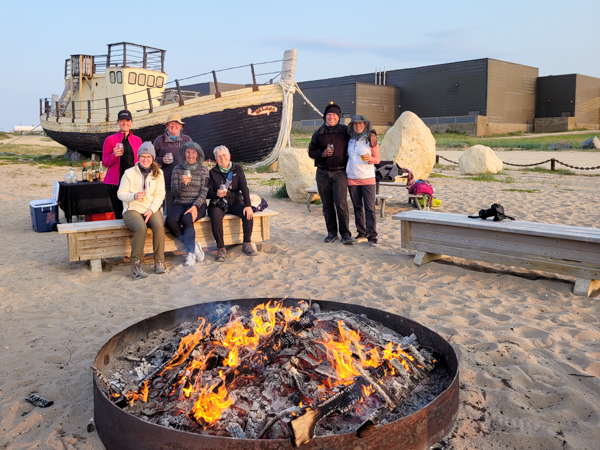
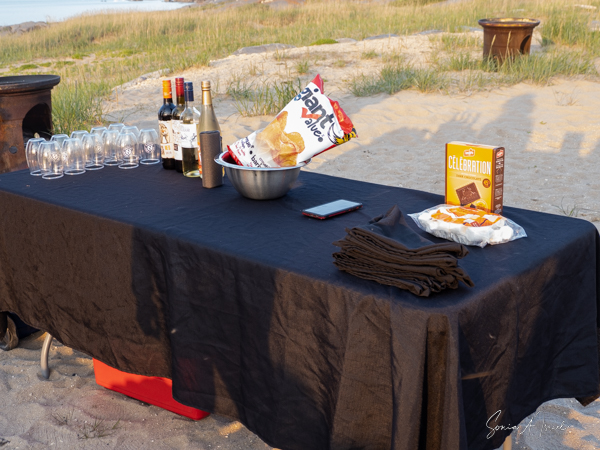

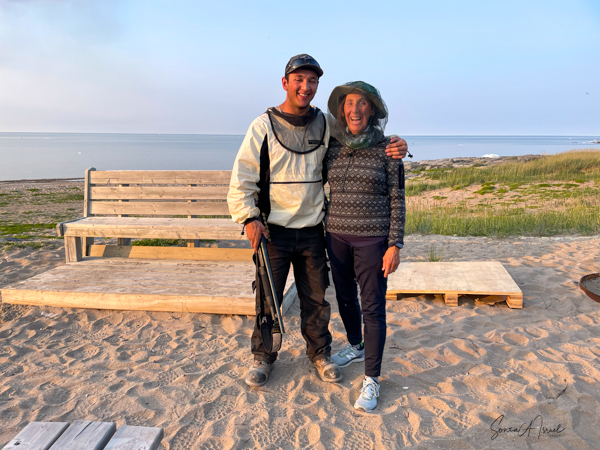
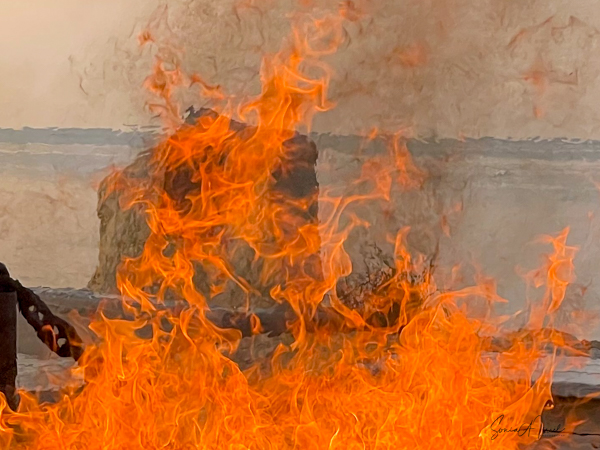
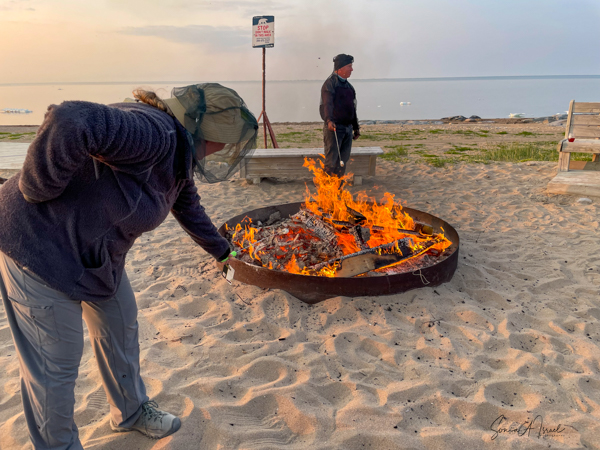
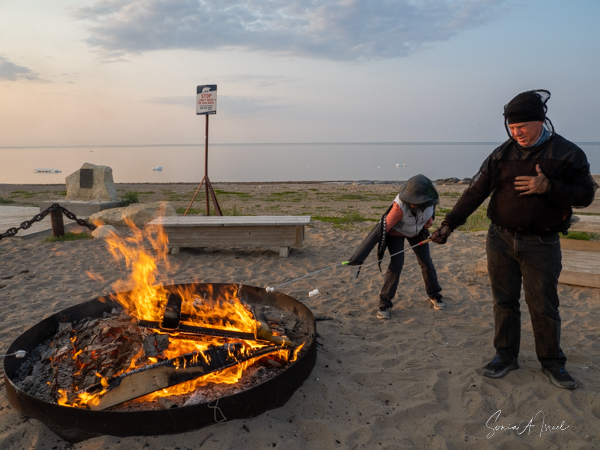
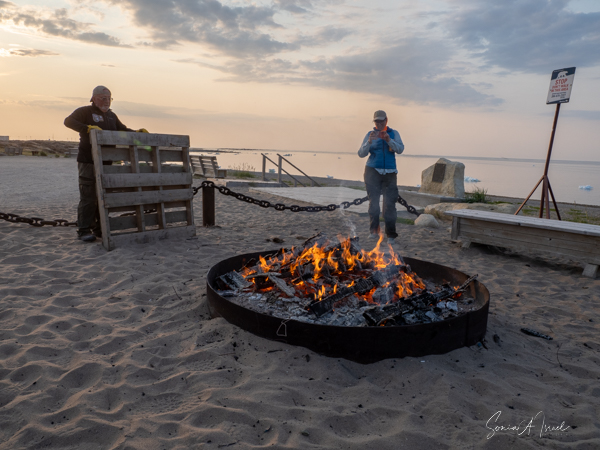
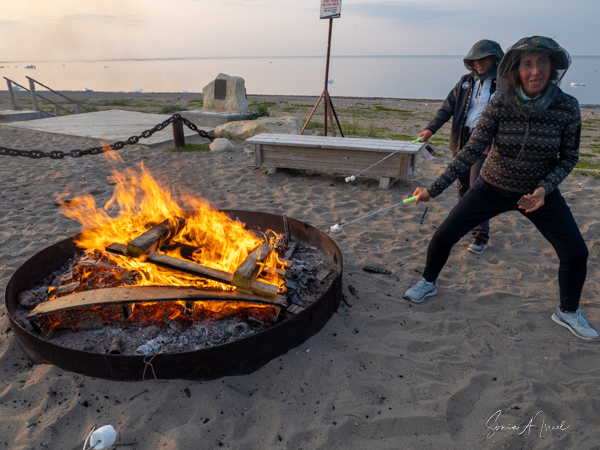
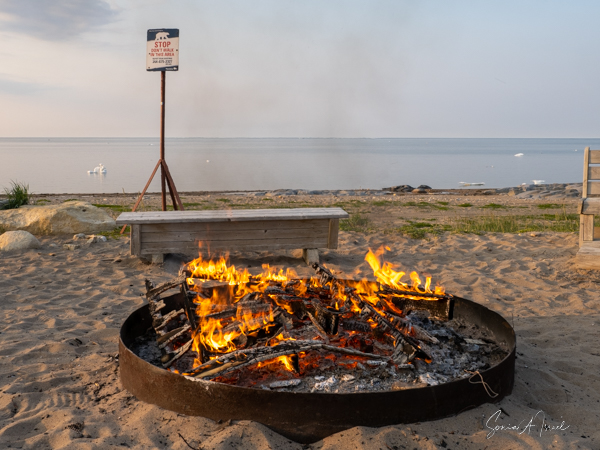

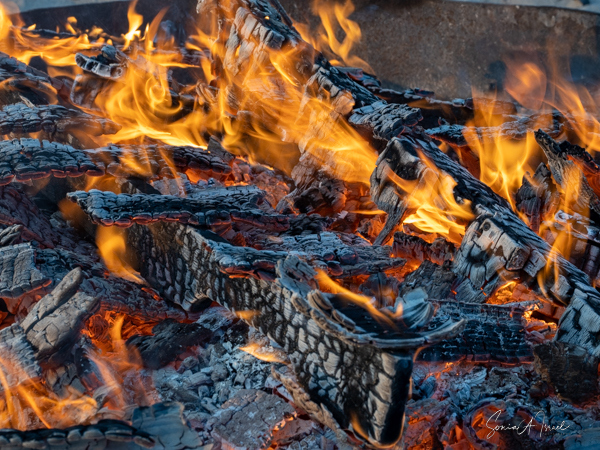
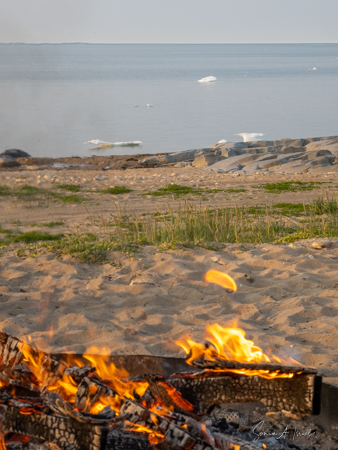
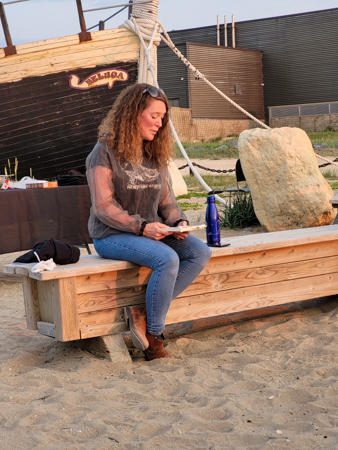
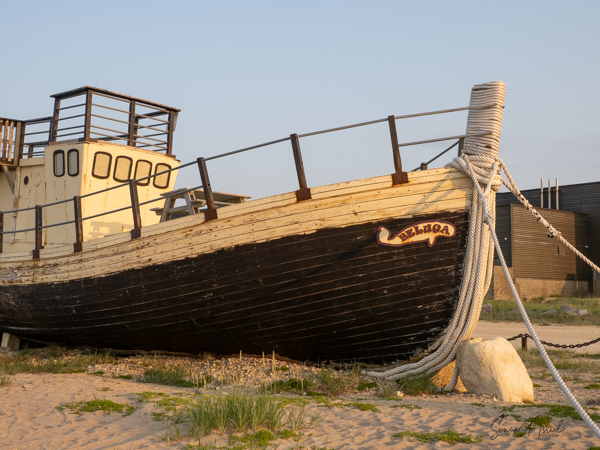
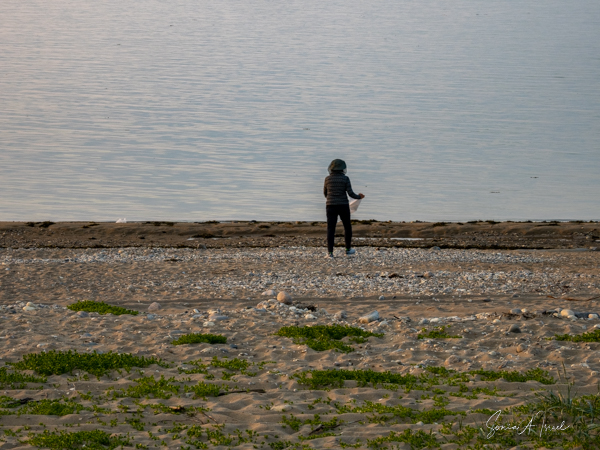
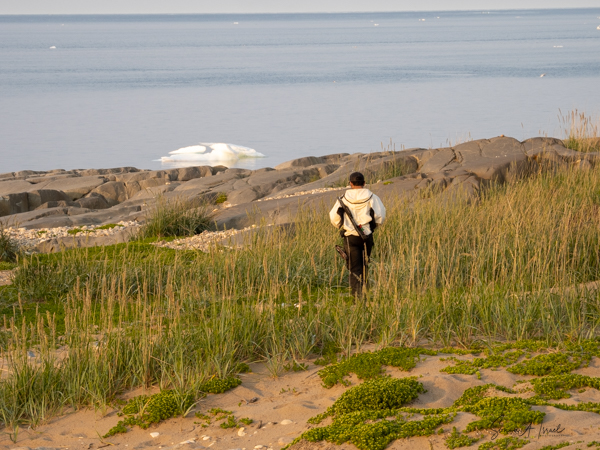
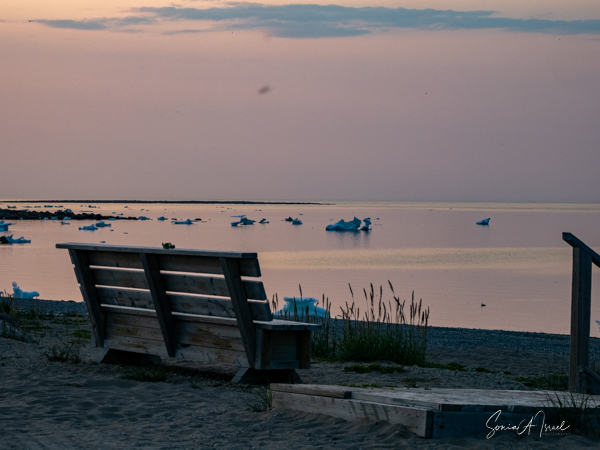
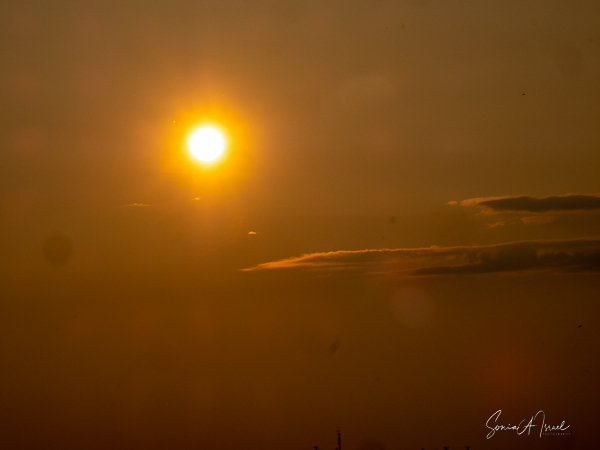
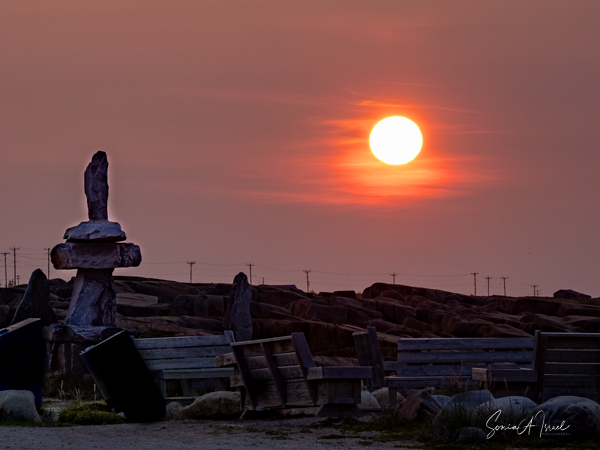
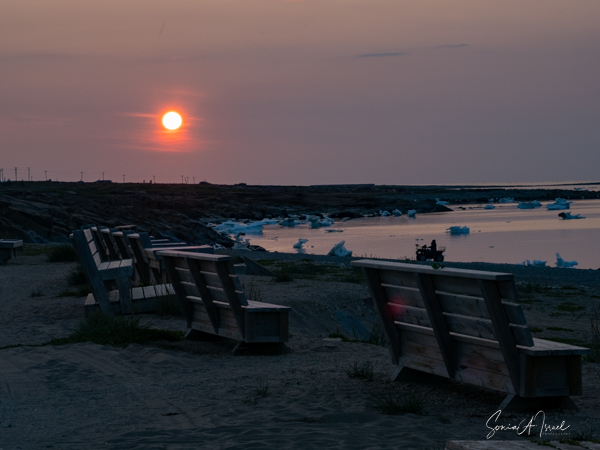
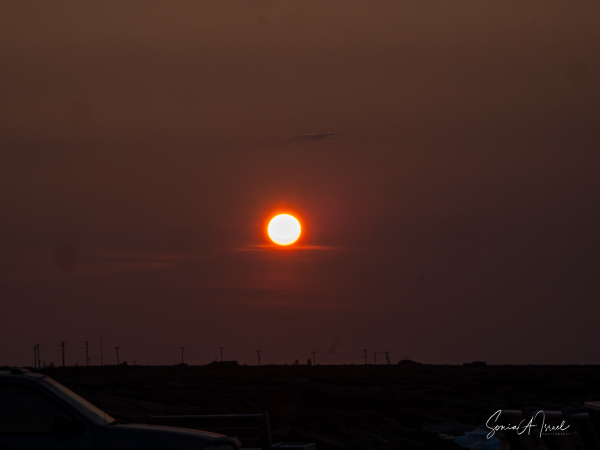
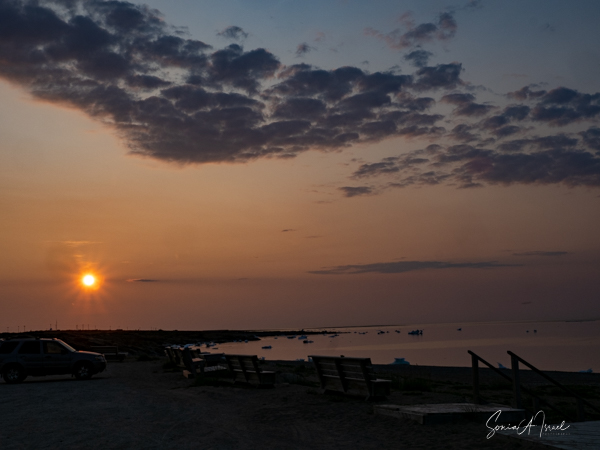
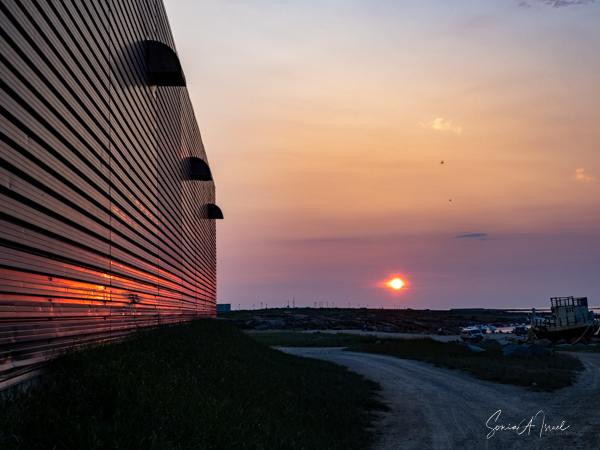
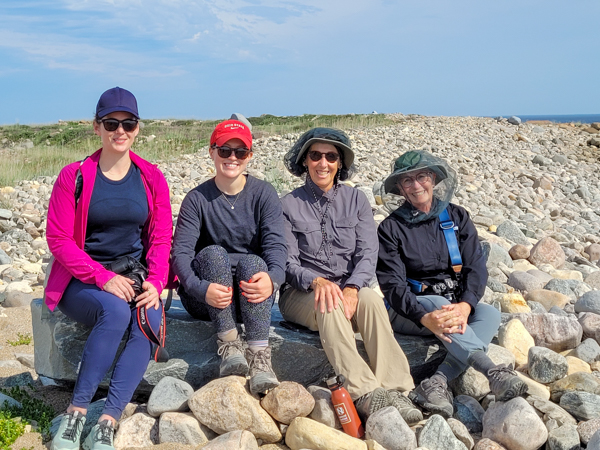
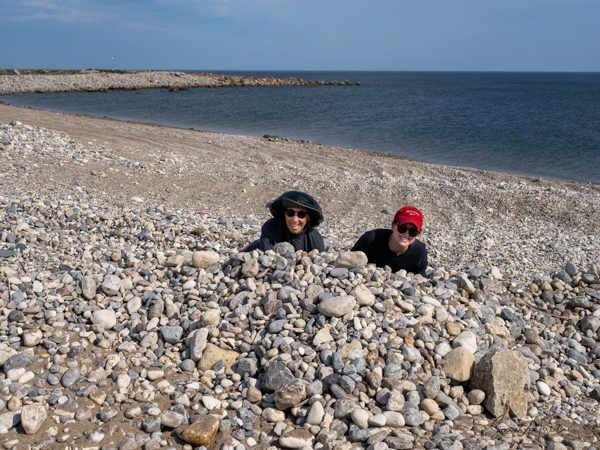
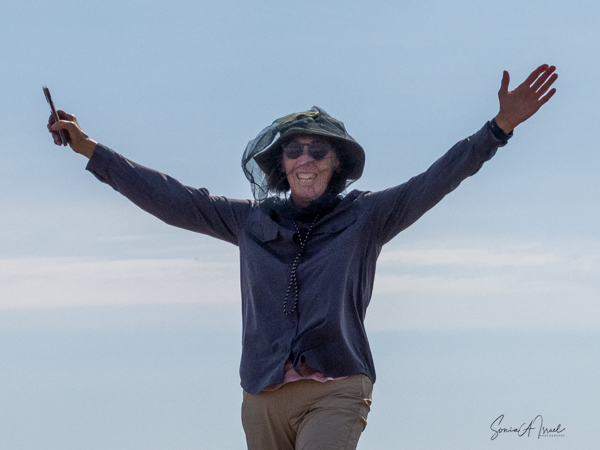
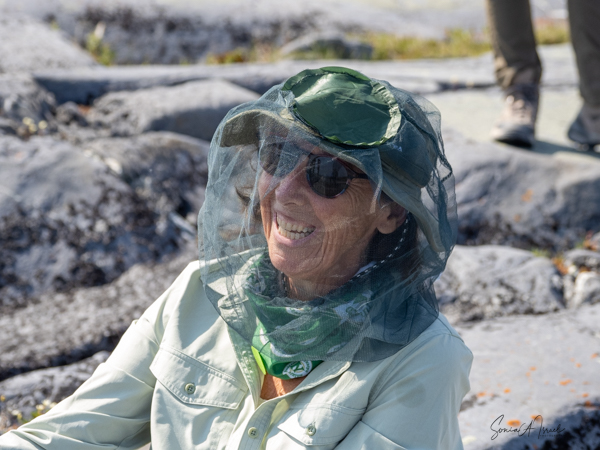
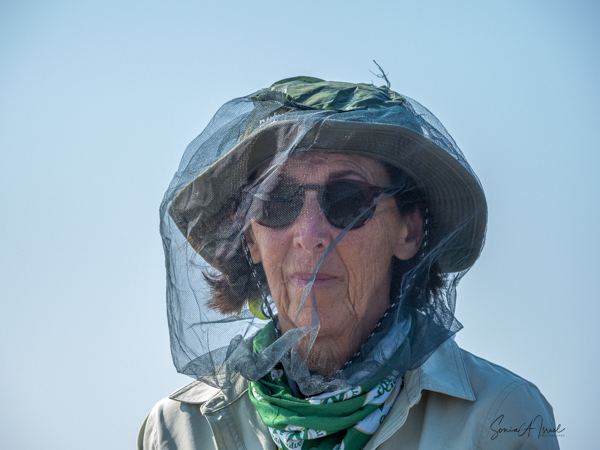
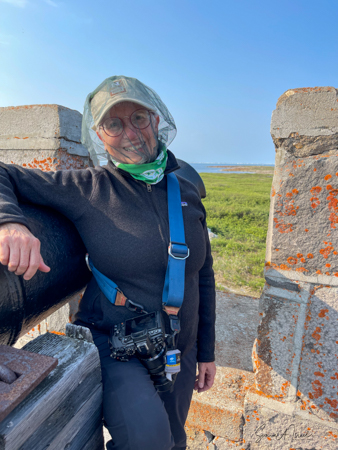
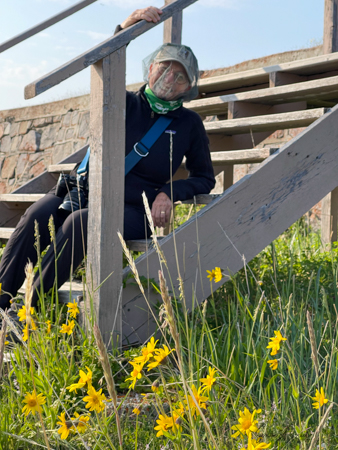
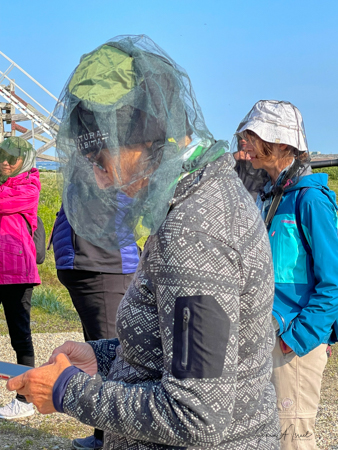

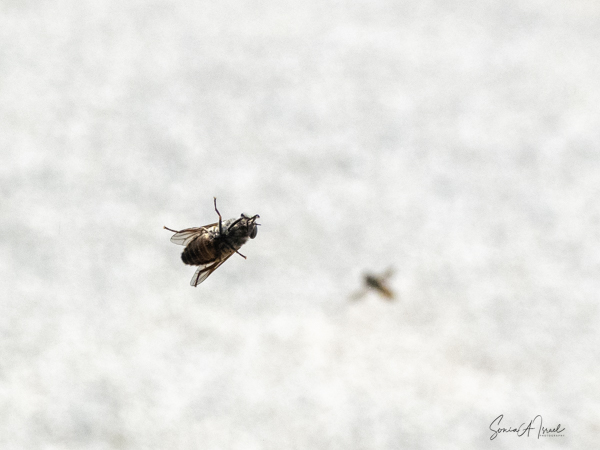


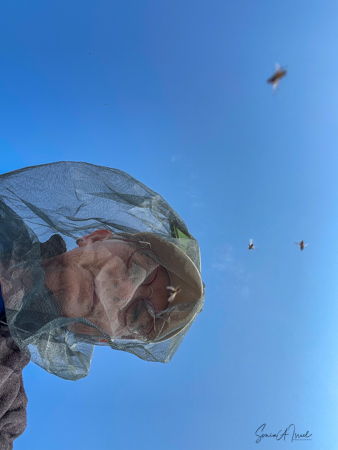

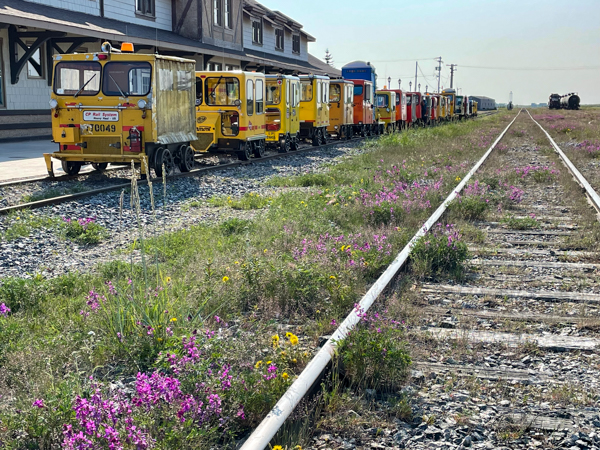
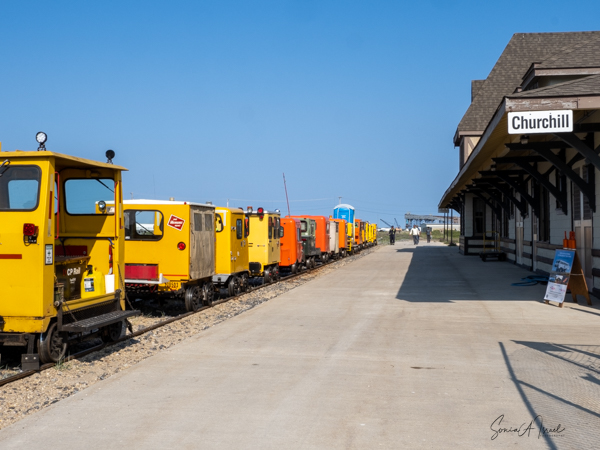
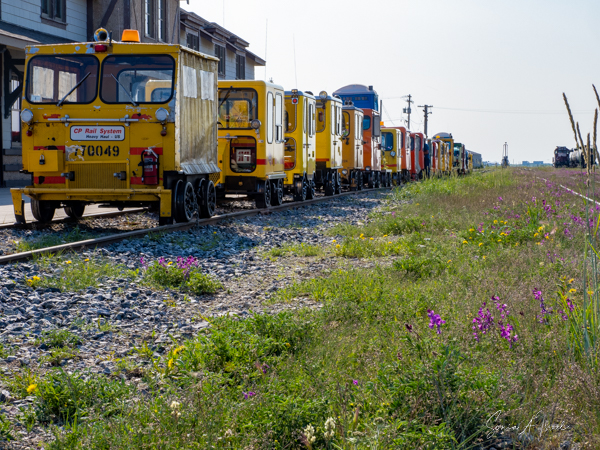
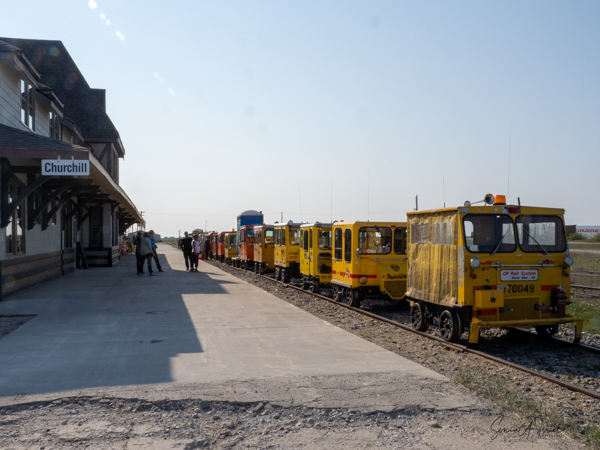
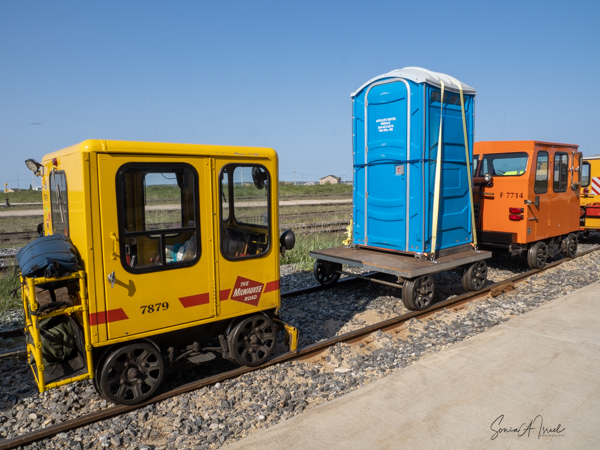
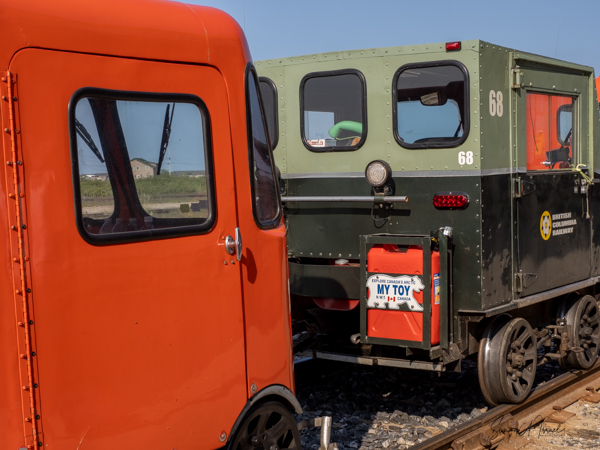
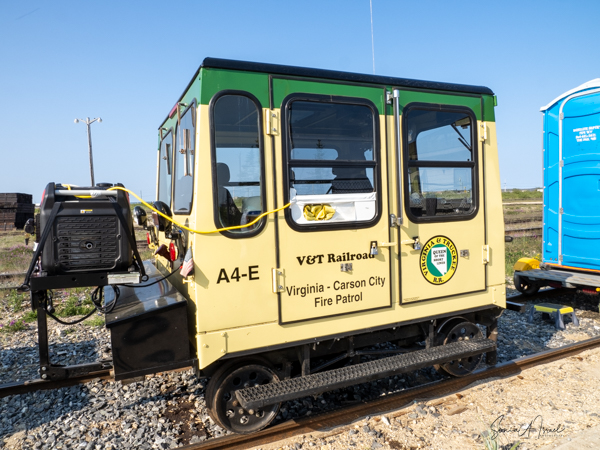
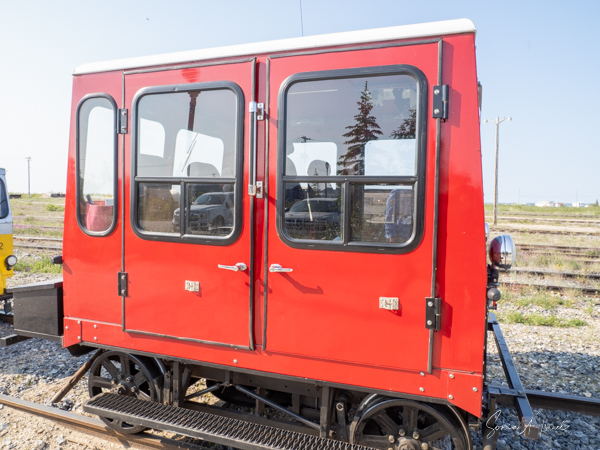
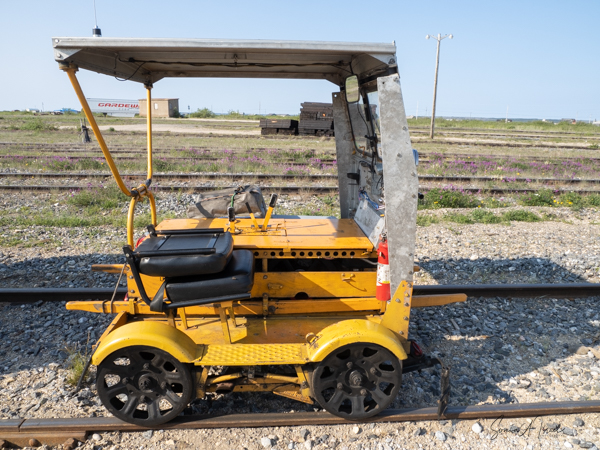
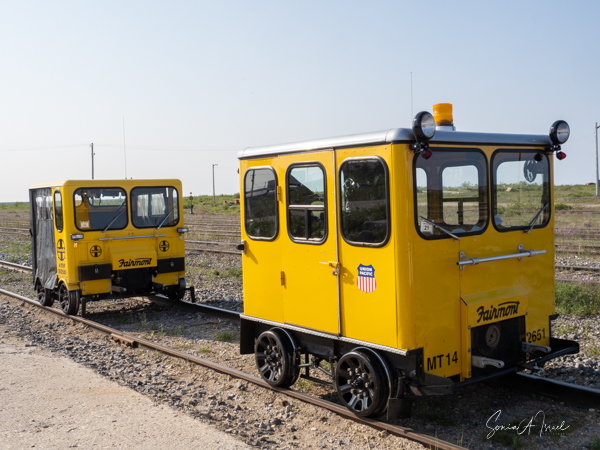
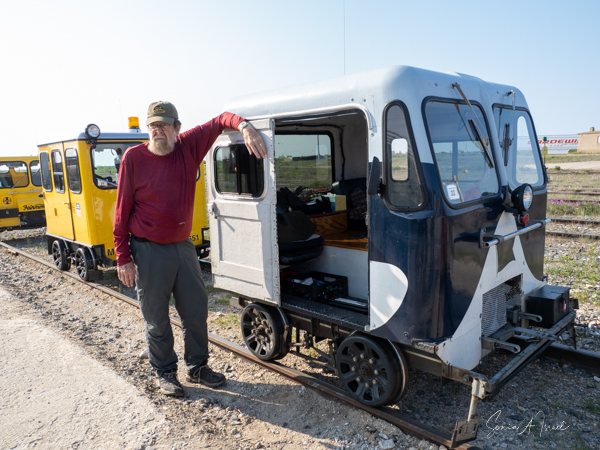
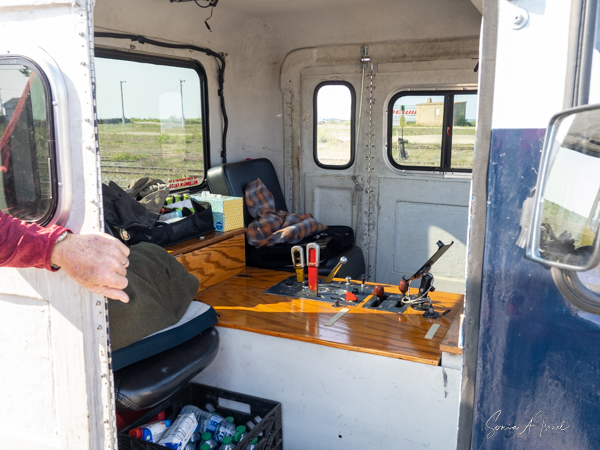

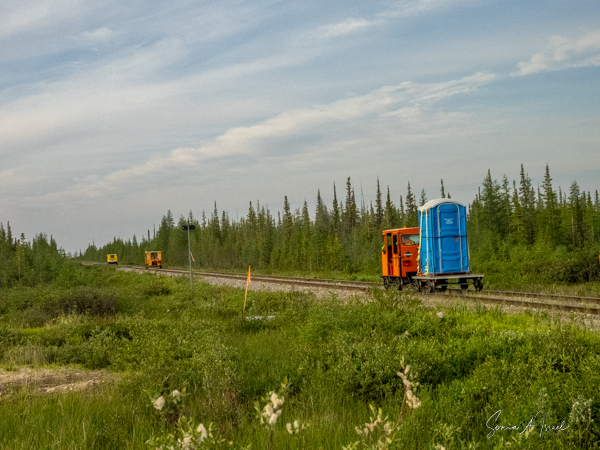

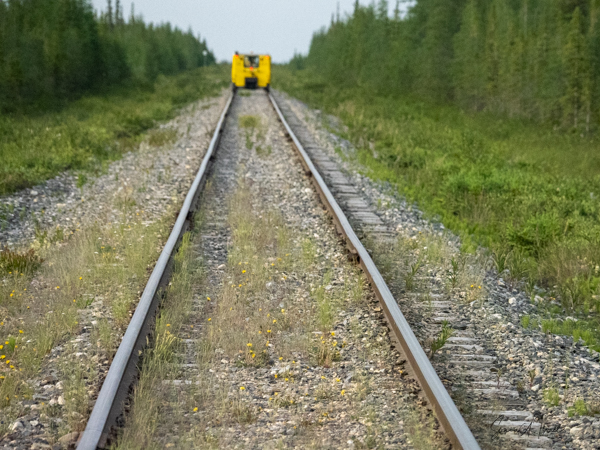
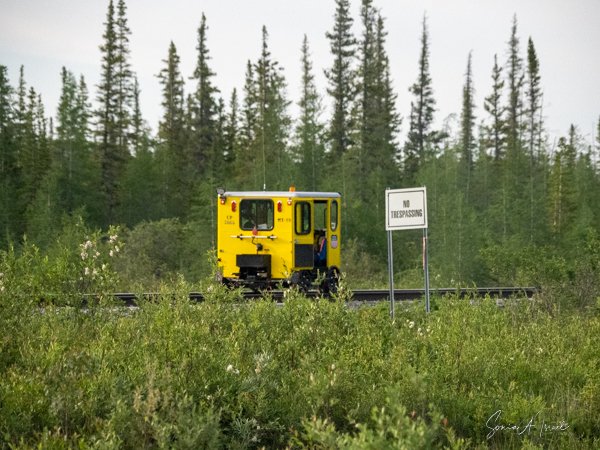
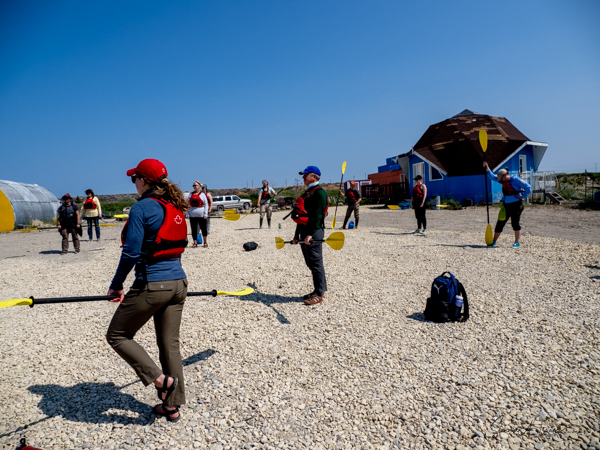
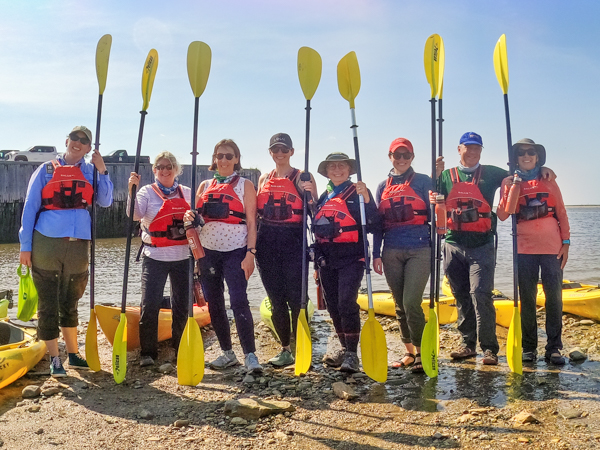


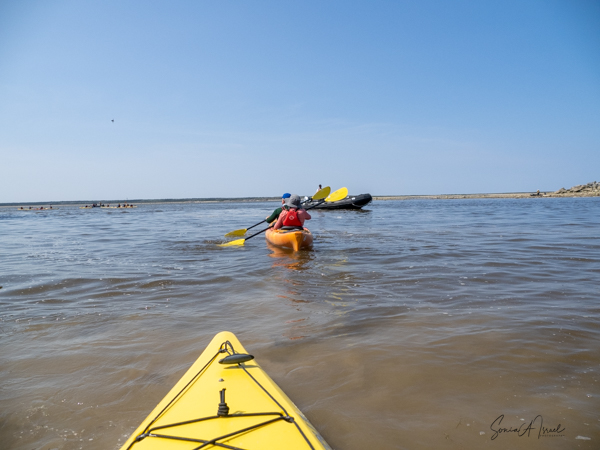

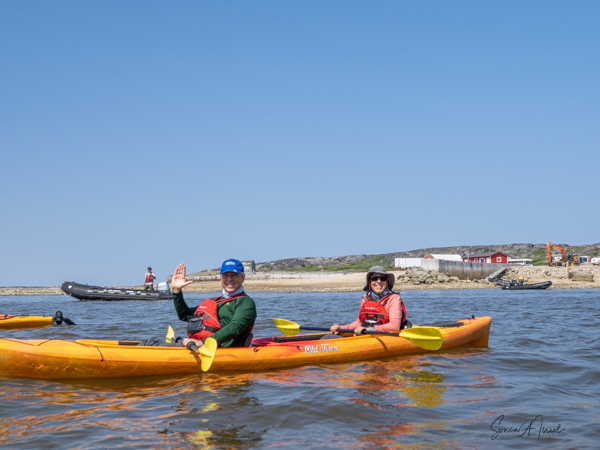
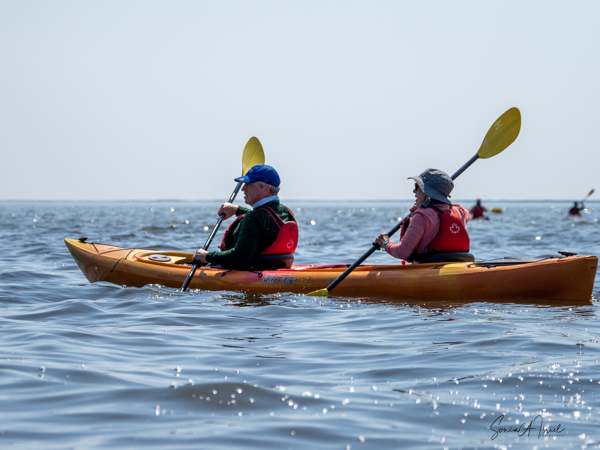
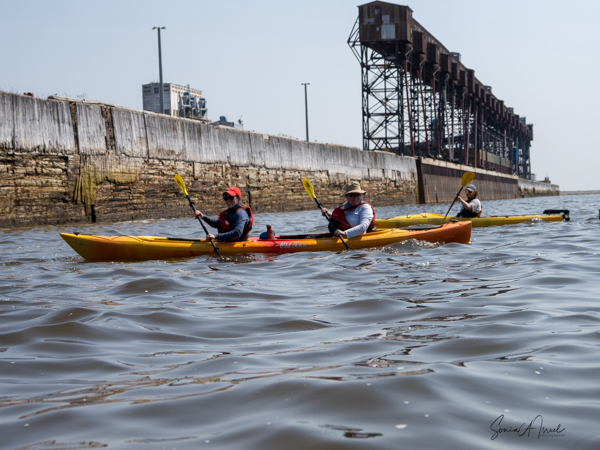
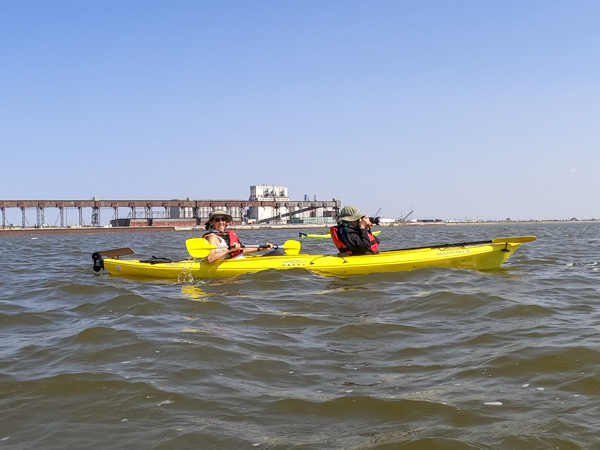
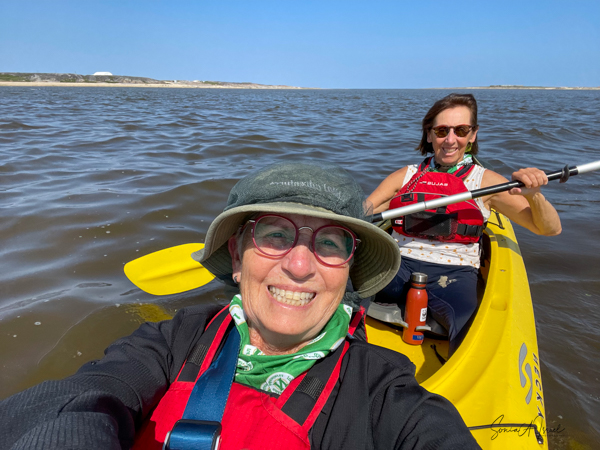
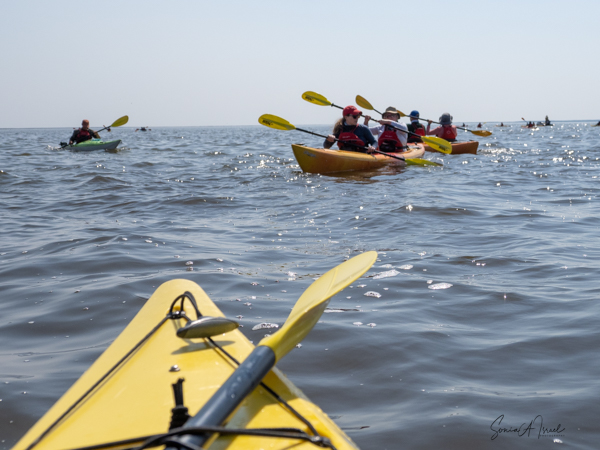
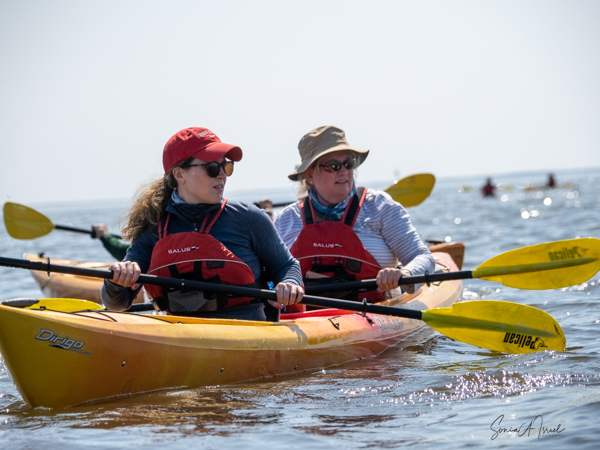
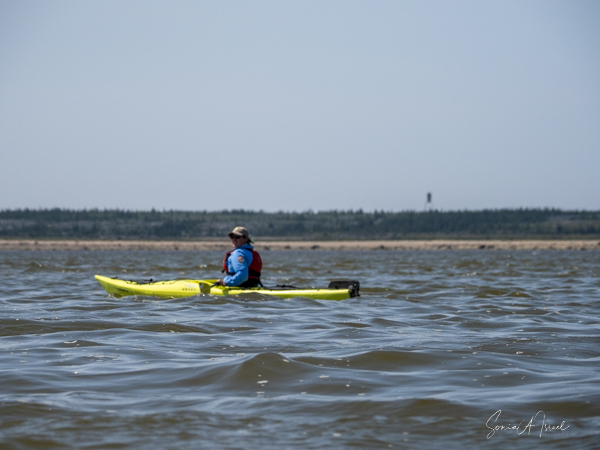
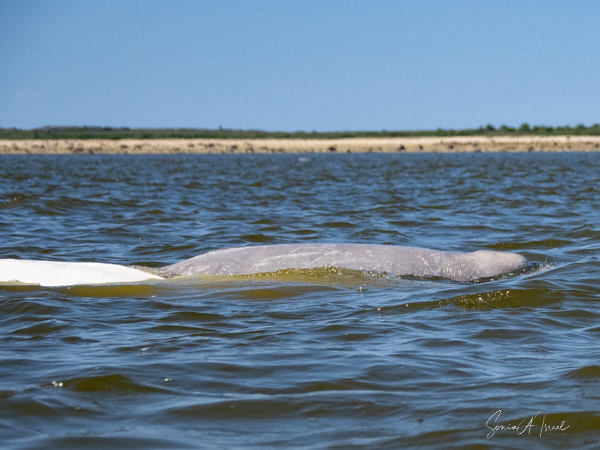
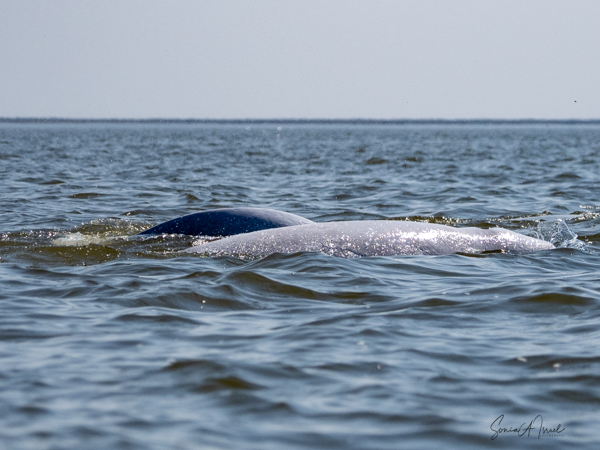
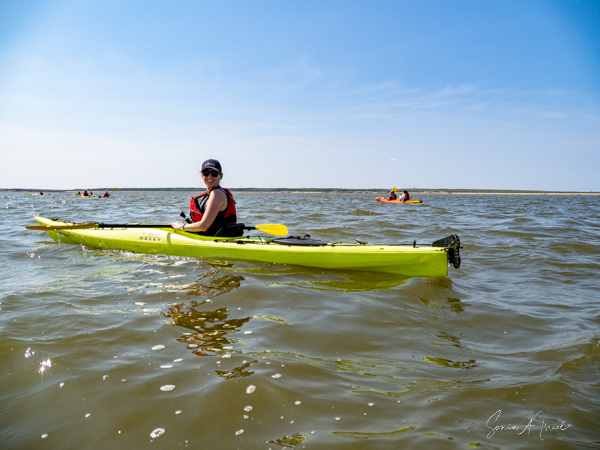
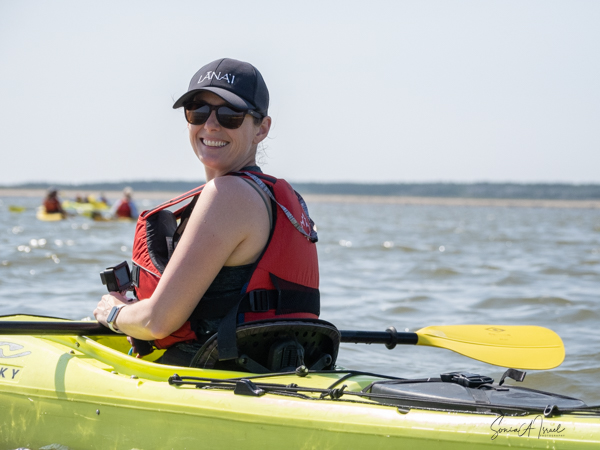
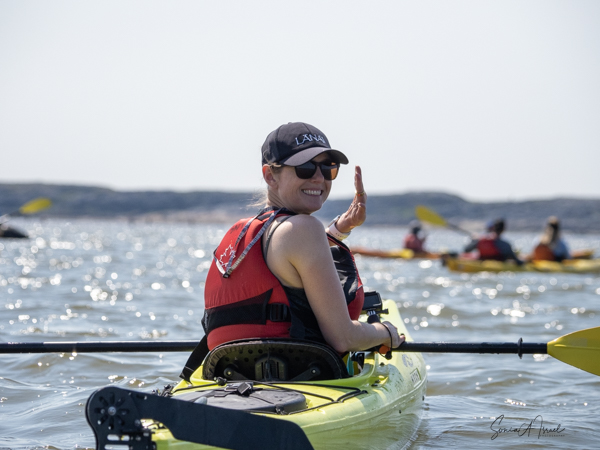

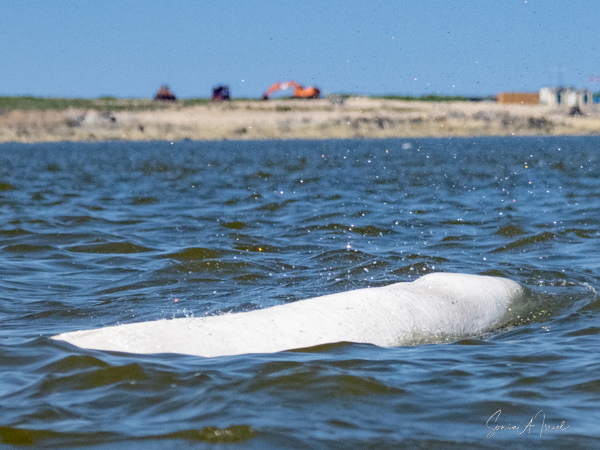
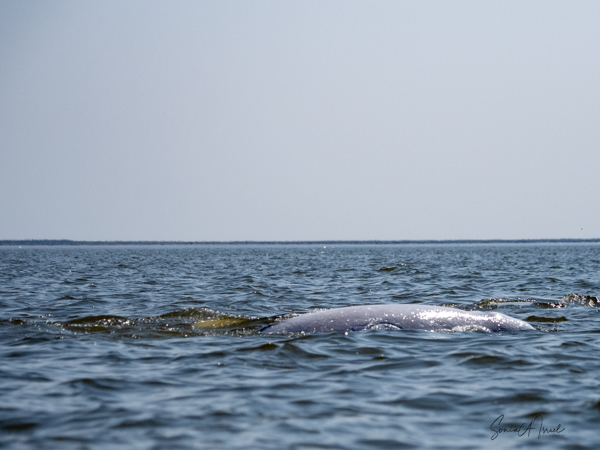
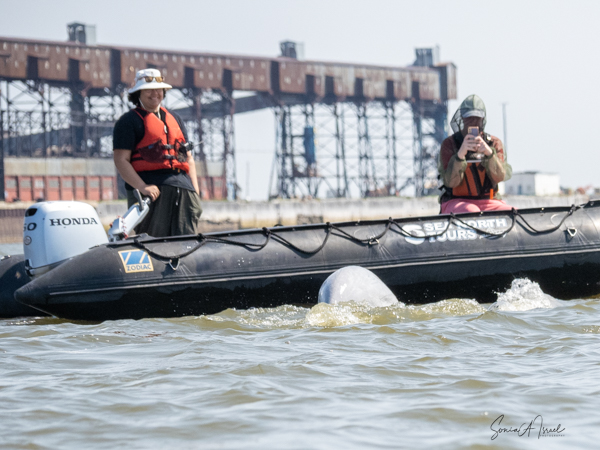
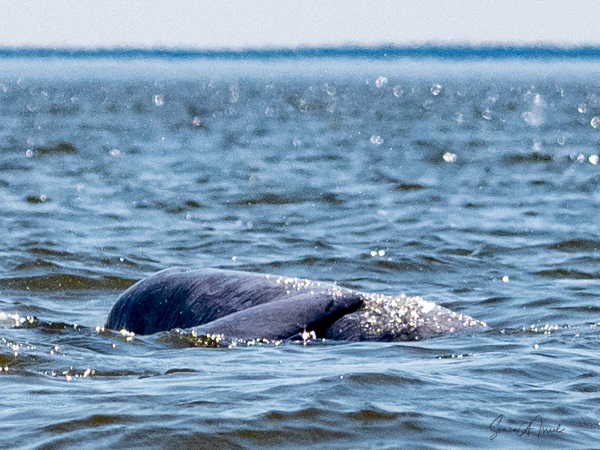
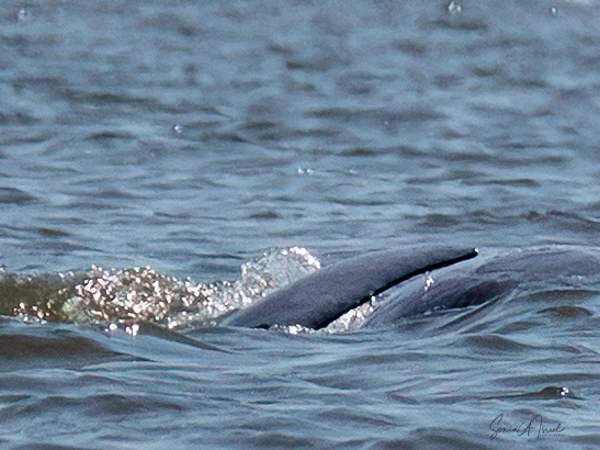
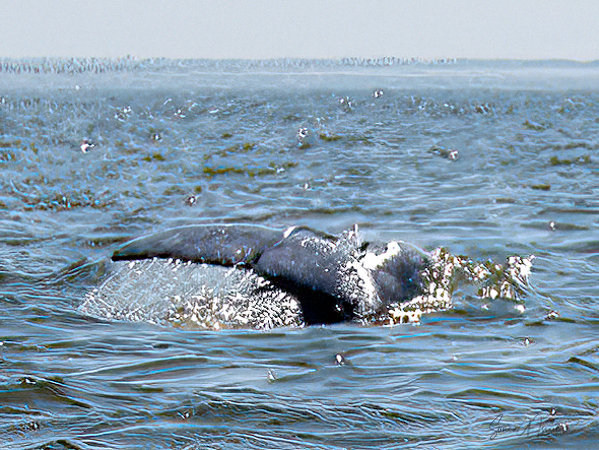

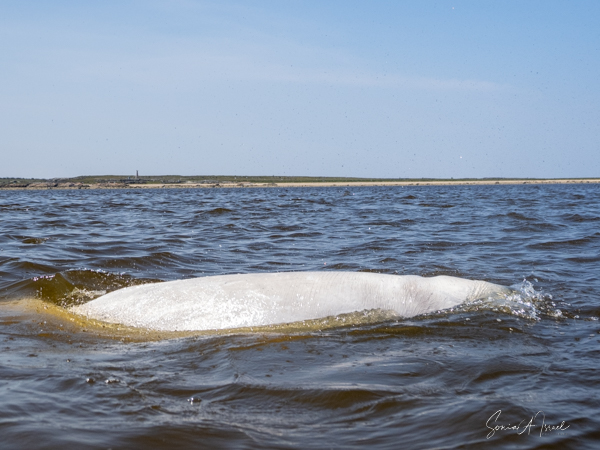
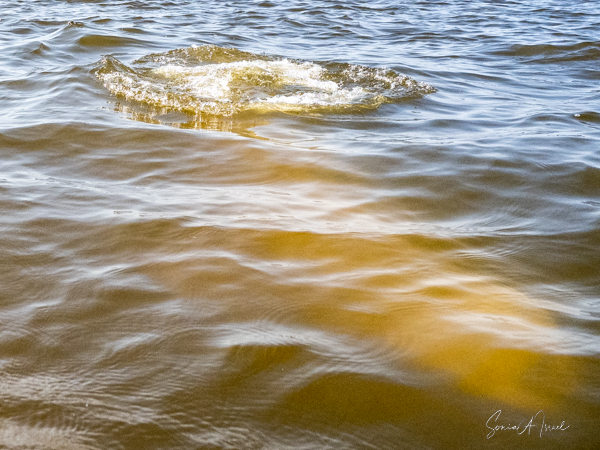
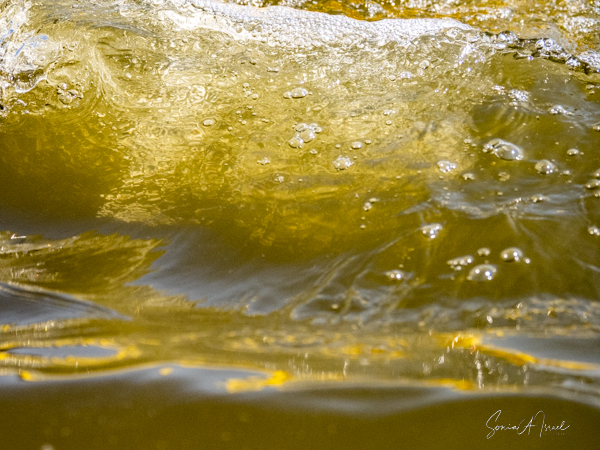
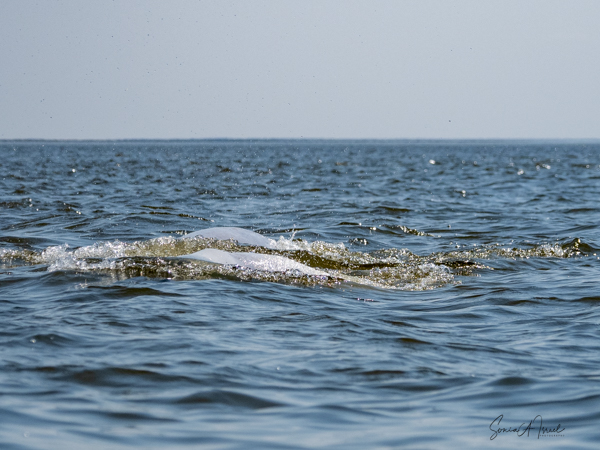
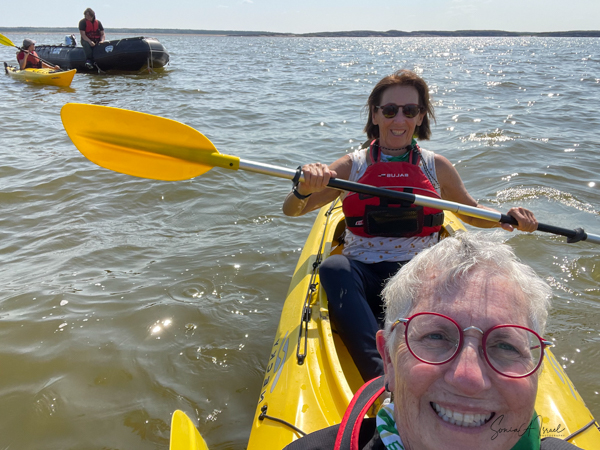
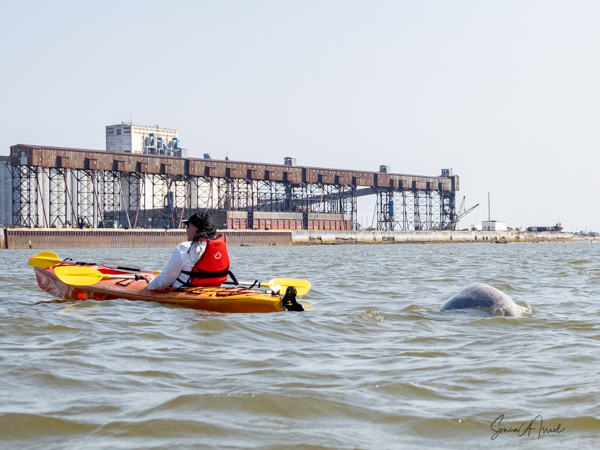
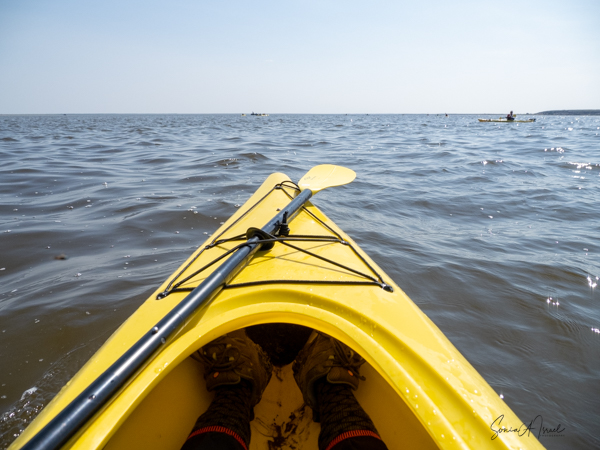
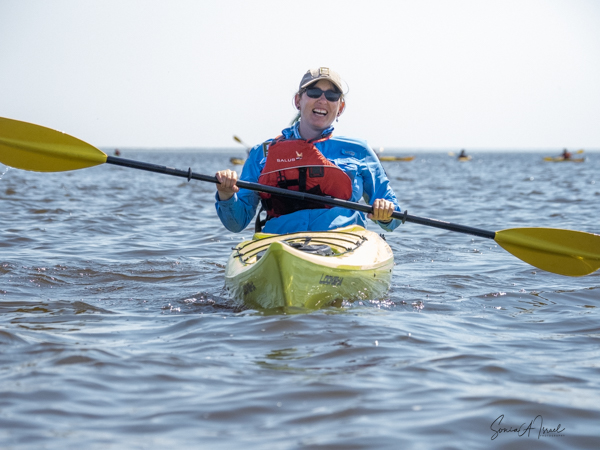


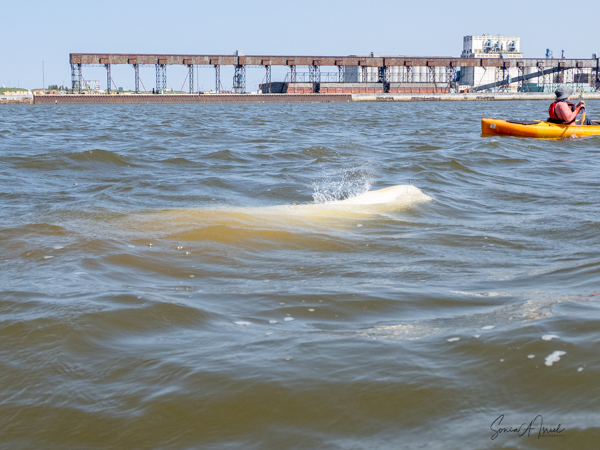
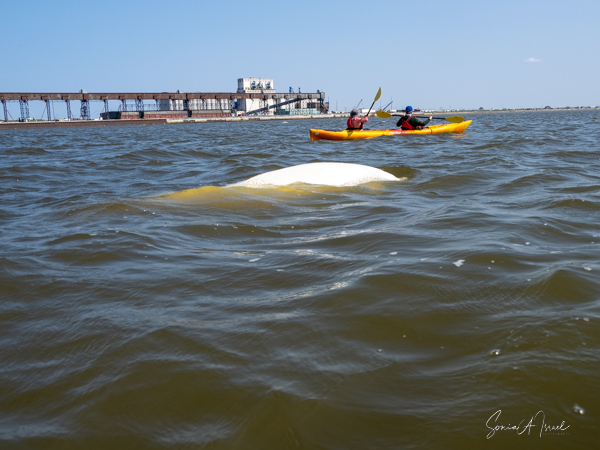
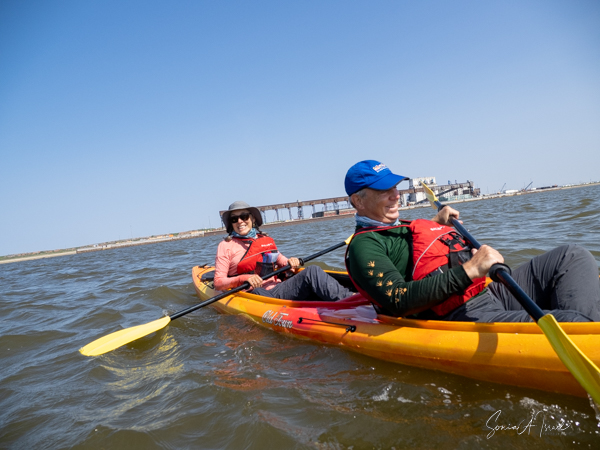
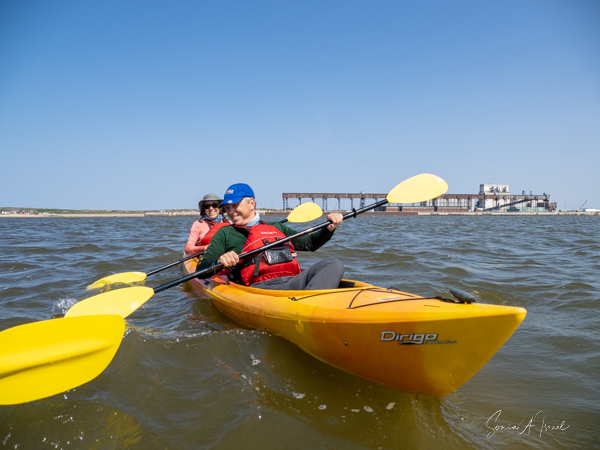
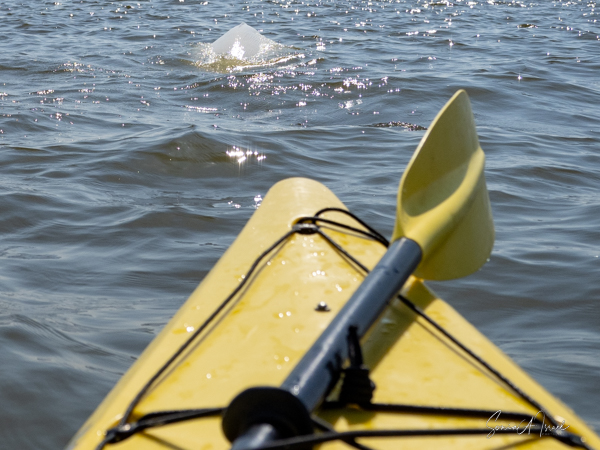
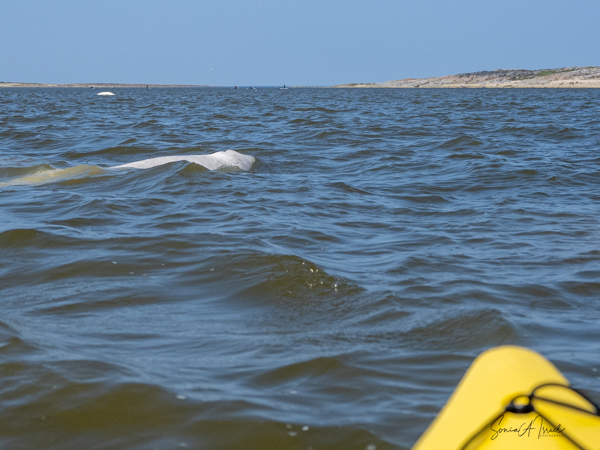
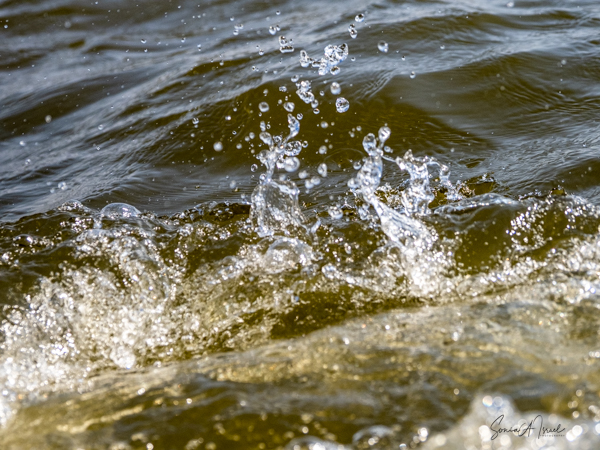
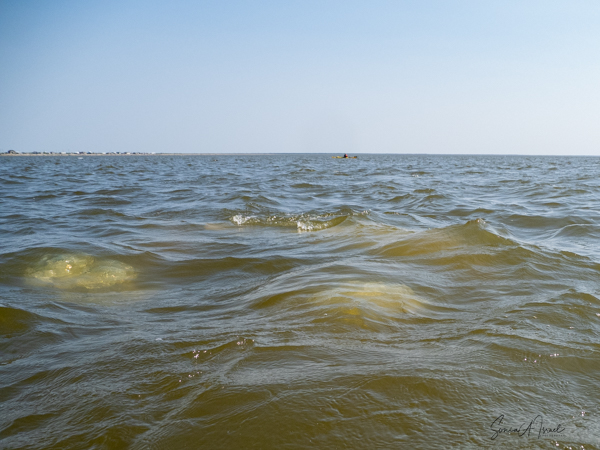
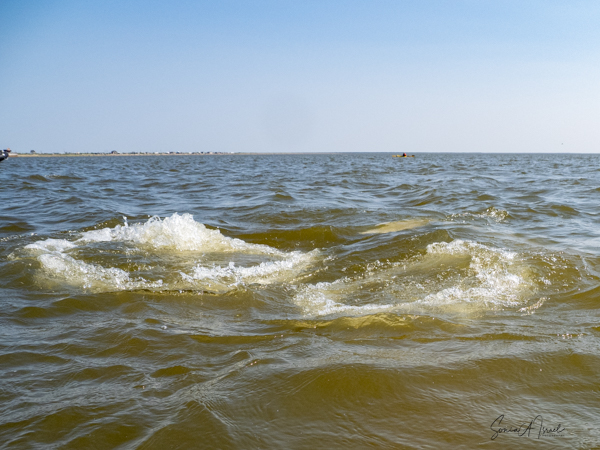
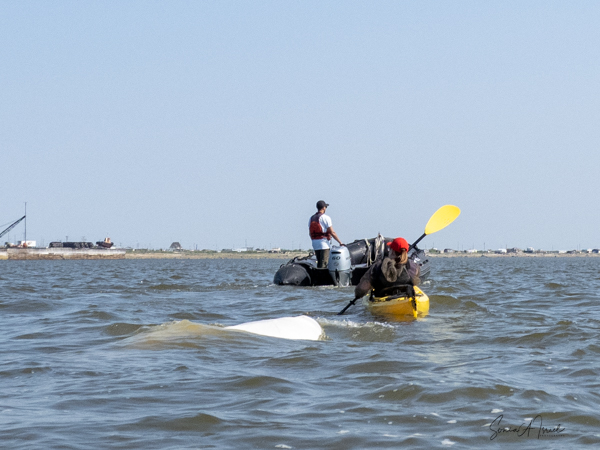
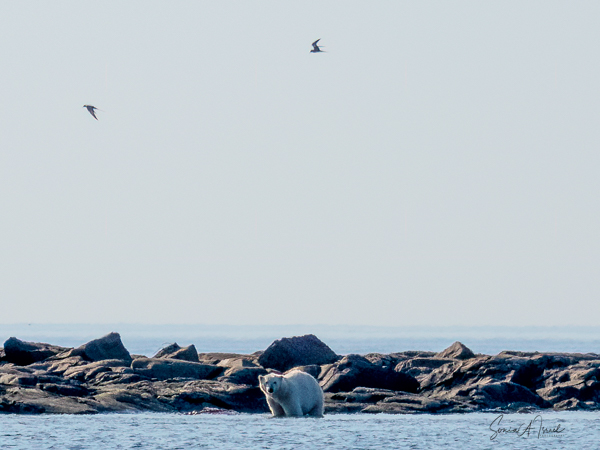
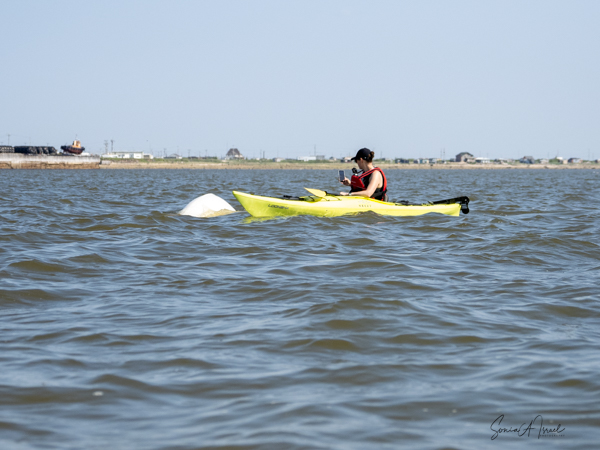
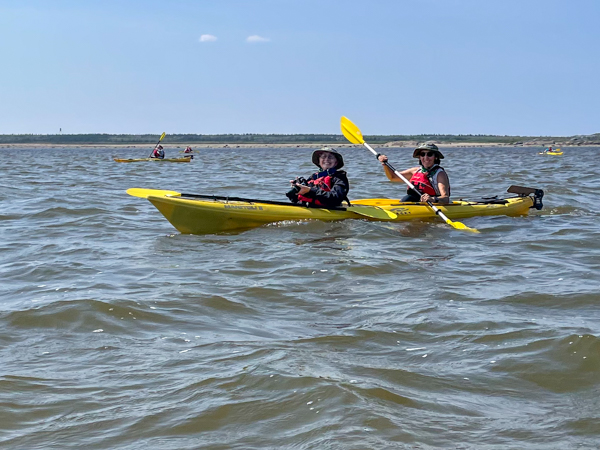
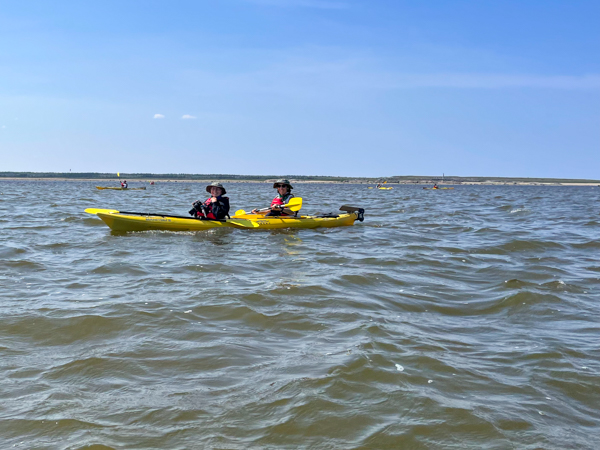
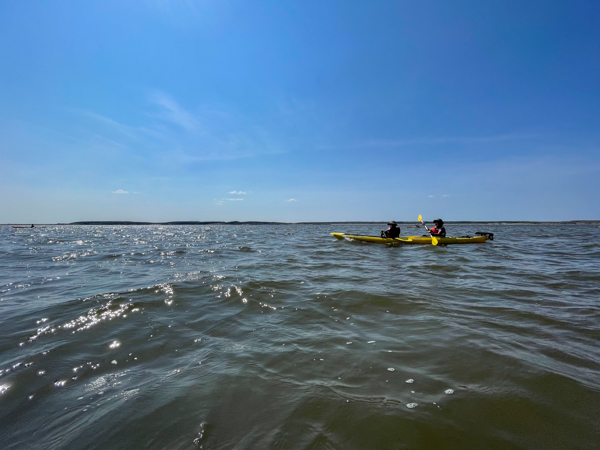
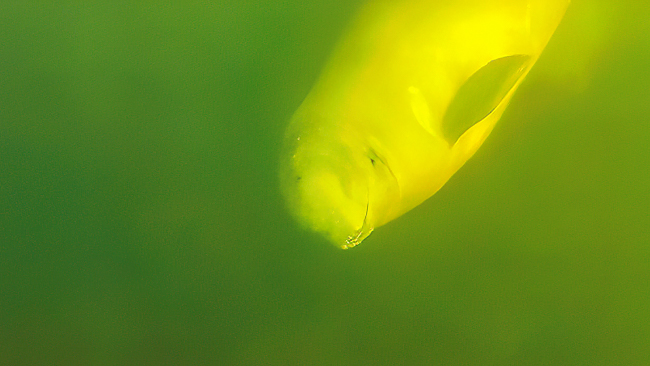
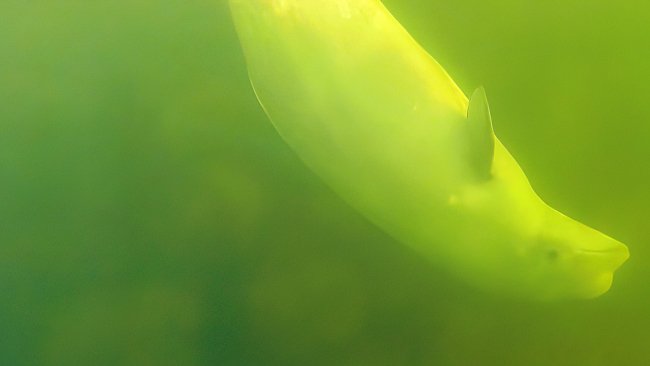
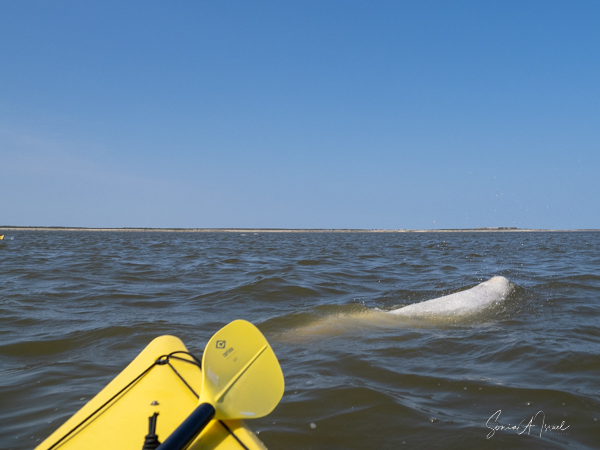
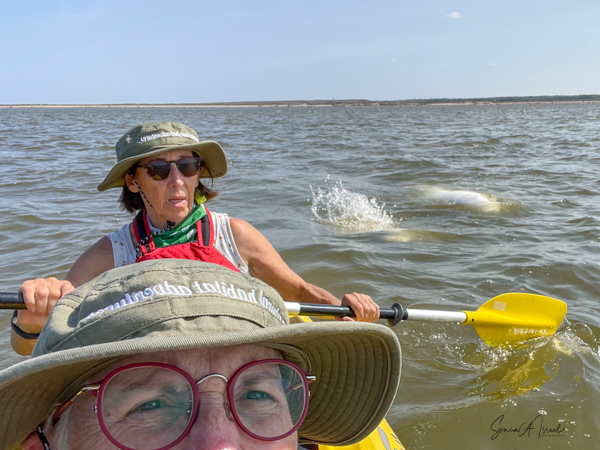

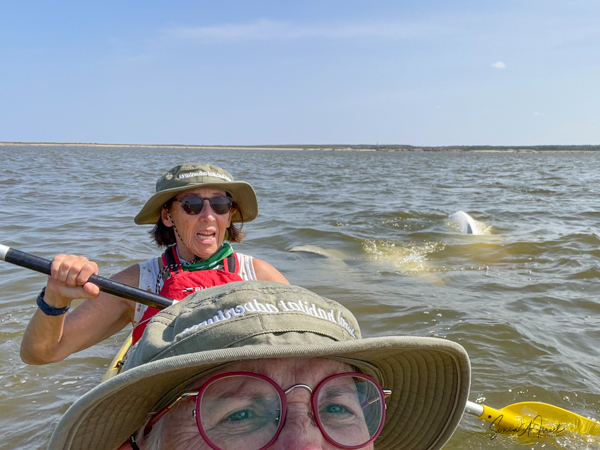

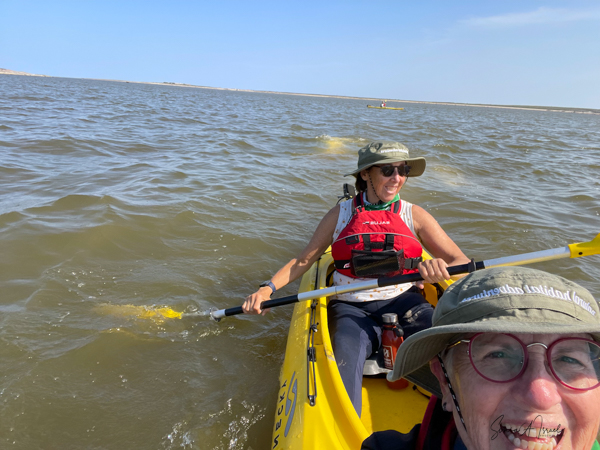
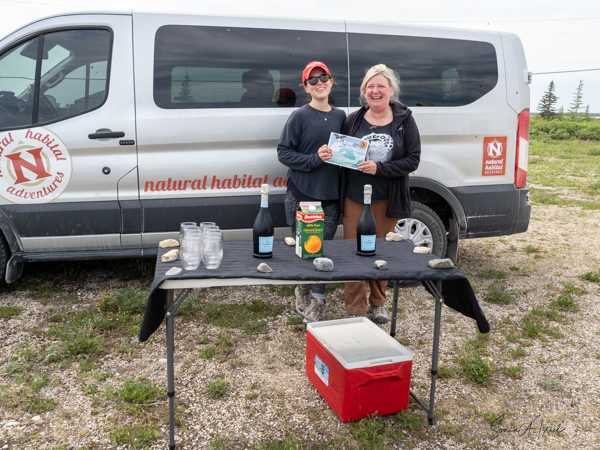
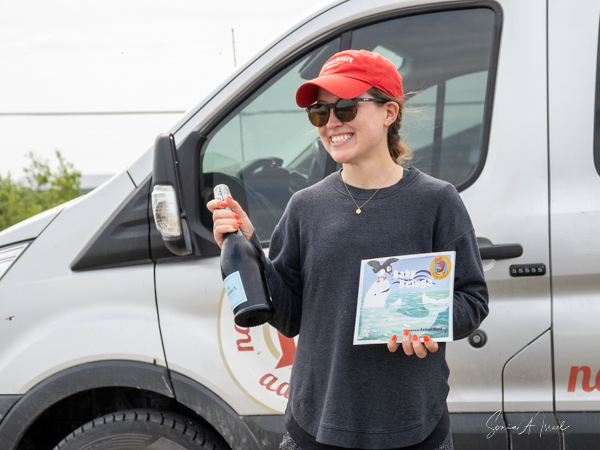


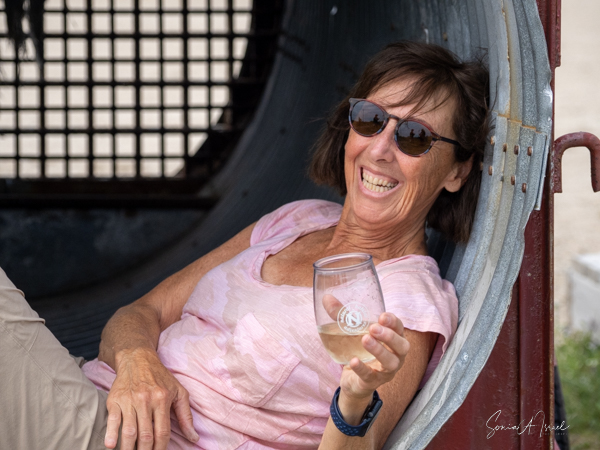
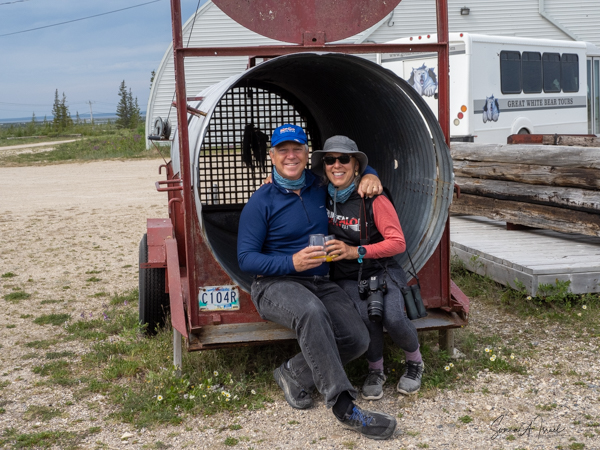
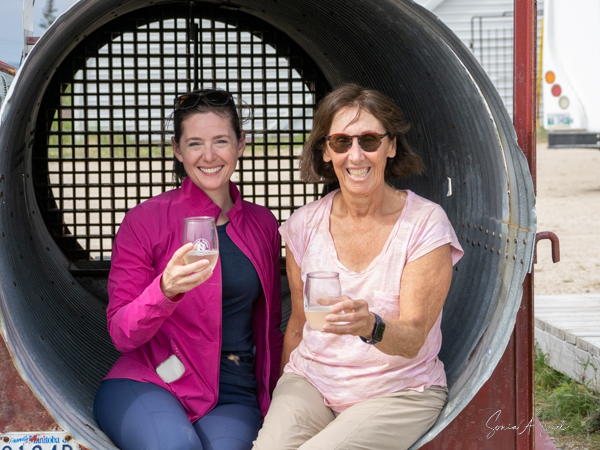
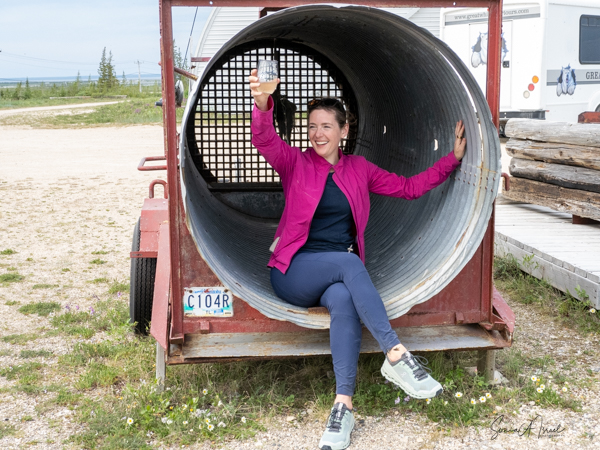
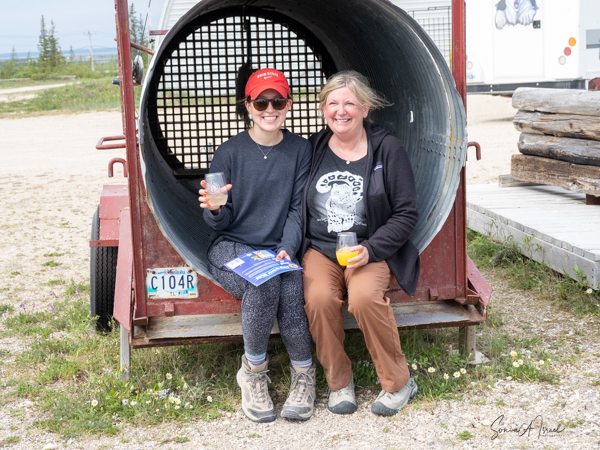
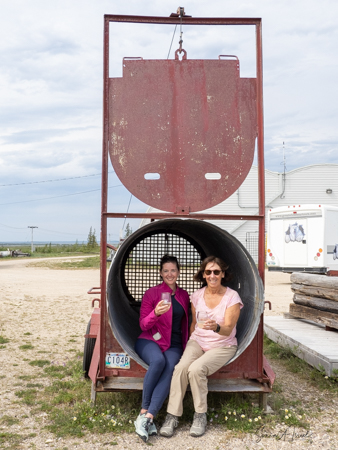
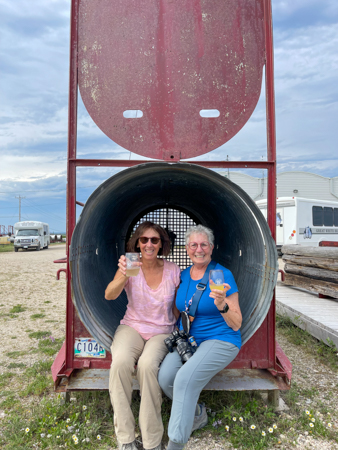

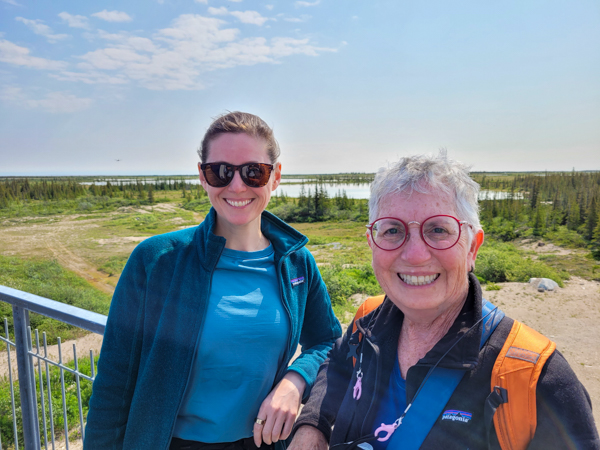
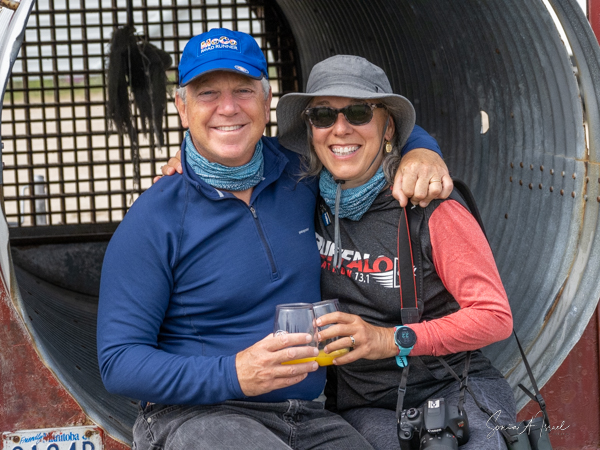



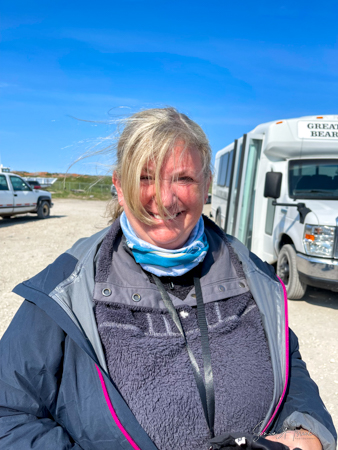
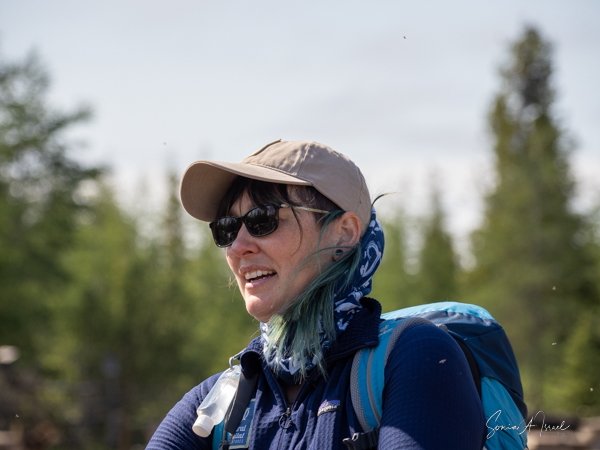
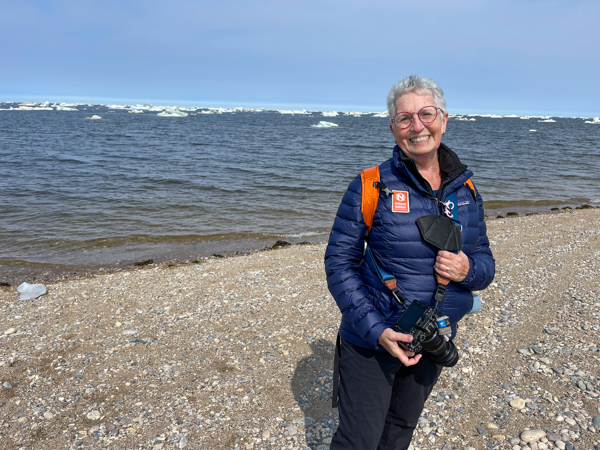
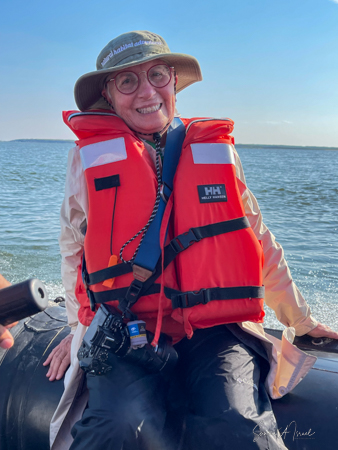
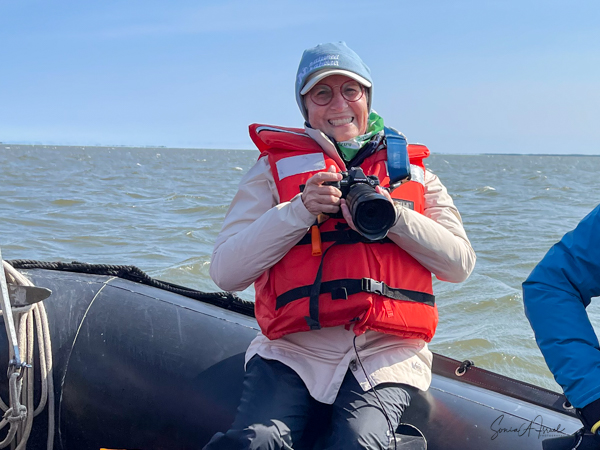
Wendy Bersbach
Hi Sonia,
It’s Wendy & Stephen … from your polar bear trip. My daughter and I did the beluga trip in early November. We were lucky enough to see 2 different polar bears swimming with belugas all around them! From the helicopter, we saw 9 polar bears. Your blog is a great way for us to reminisce, so thanks for all your work!
Bill Antilla
I enjoyed reading your blog this. morning Sonja. Thank you for sharing!
Roxanne Hersh
What a memorable adventure! My friend had told me about her experiences when she went in the winter months because her husband had always wanted to see polar bears in their natural habitat but I wasn’t aware about visiting when the beluga whales are present. I love following your blog and seeing what you are up to next. What an exciting life you lead!!
Suzanne
Wonderful photos, background info, & descriptions! I loved reliving these amazing days in Churchill last summer. I’m grateful that I shared this trip with you!
Doil Montgomery
Thanks for sharing your experience and your photos. I am in such awe of whales. Had an experience similar to yours with humpbacks. And took a course in whale communications while in graduate school.
Doil Montgomery
Susan Tapert
These photos and stories are absolutely incredible, Sonia!
And you wouldn’t even necessarily know that the author is also one of the top female scientists in the WORLD!
You are amazing!!